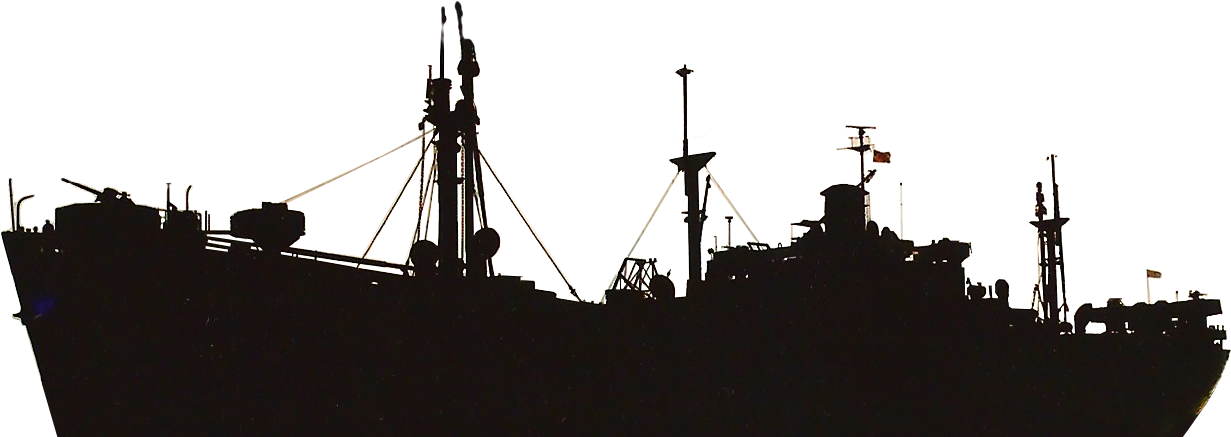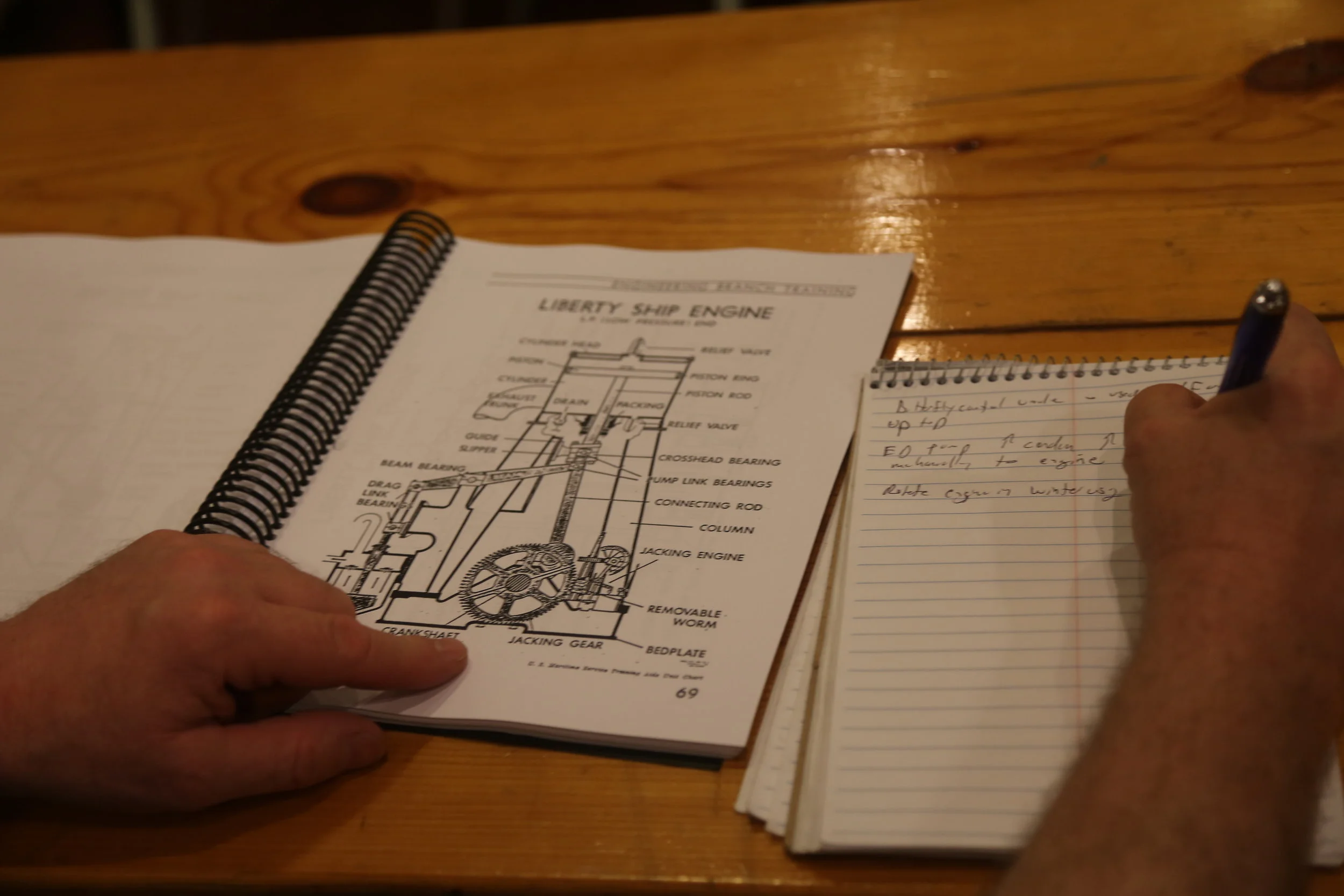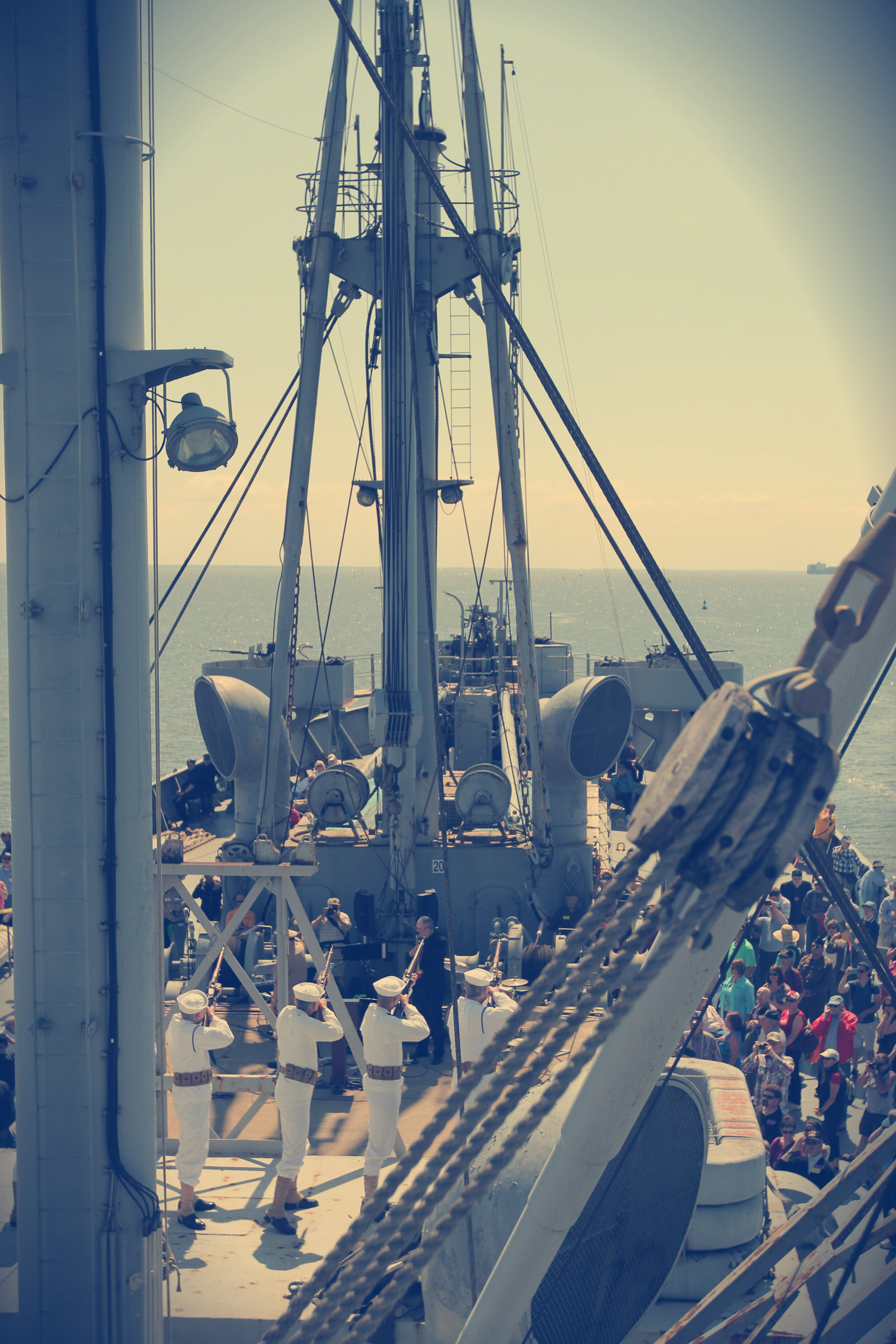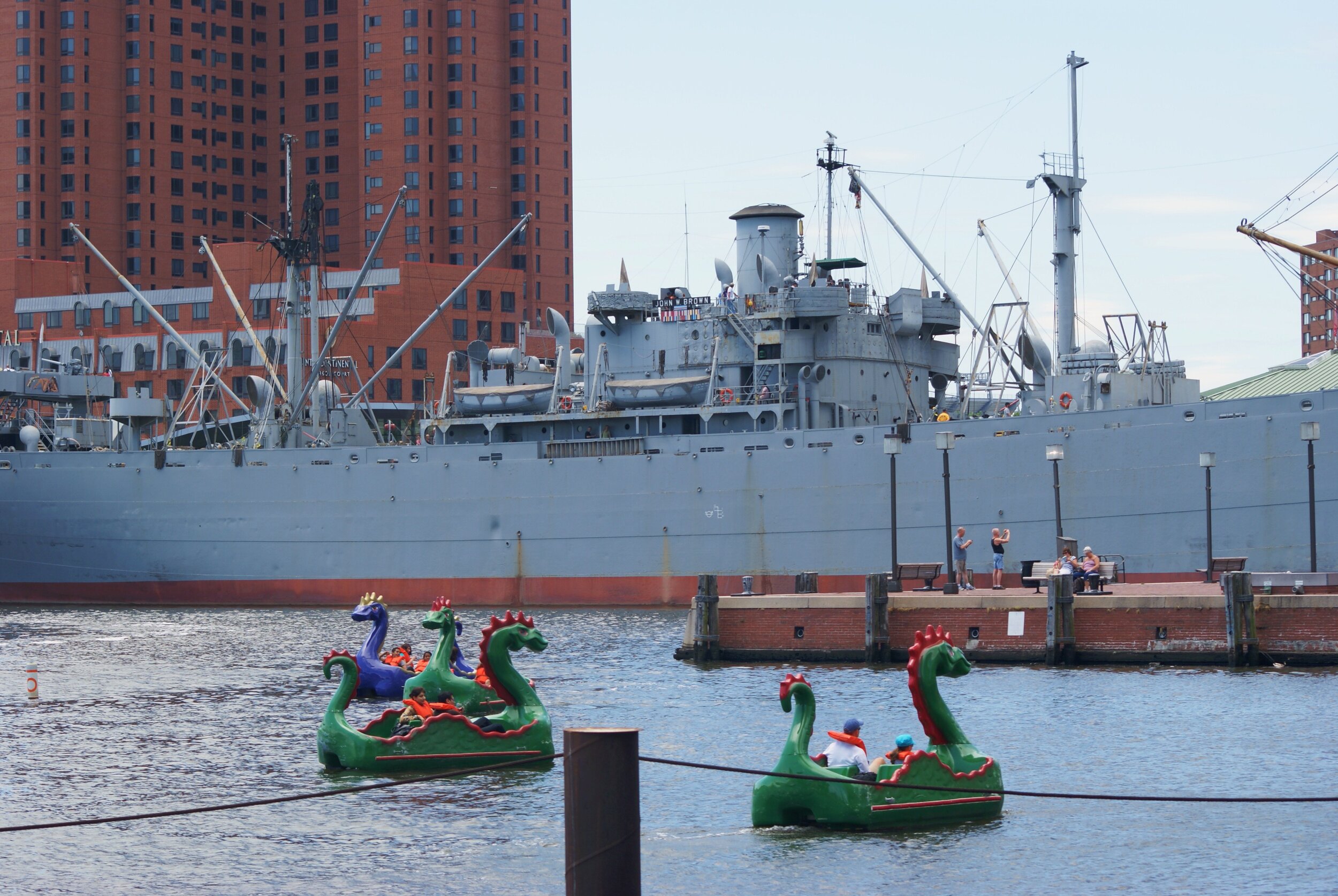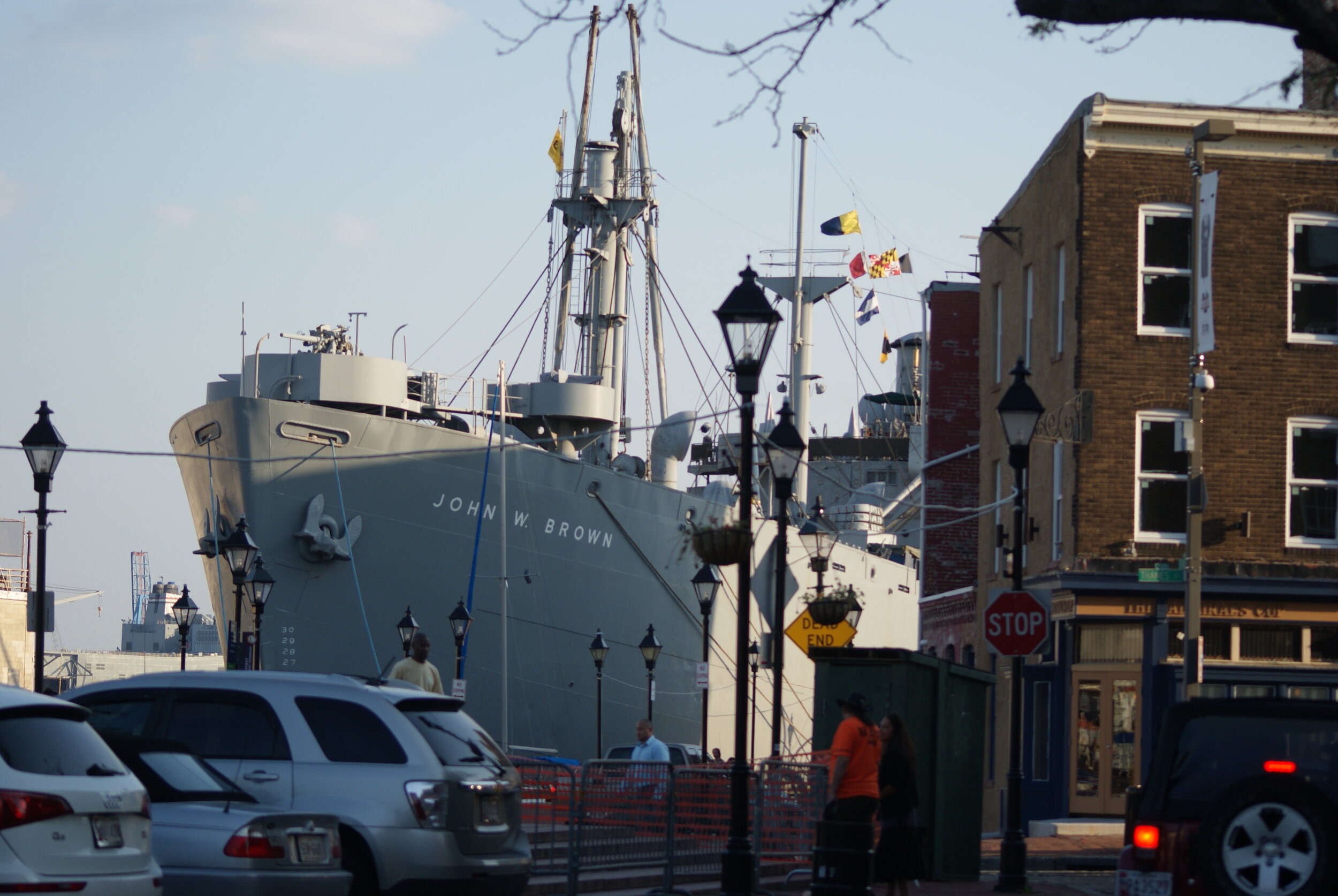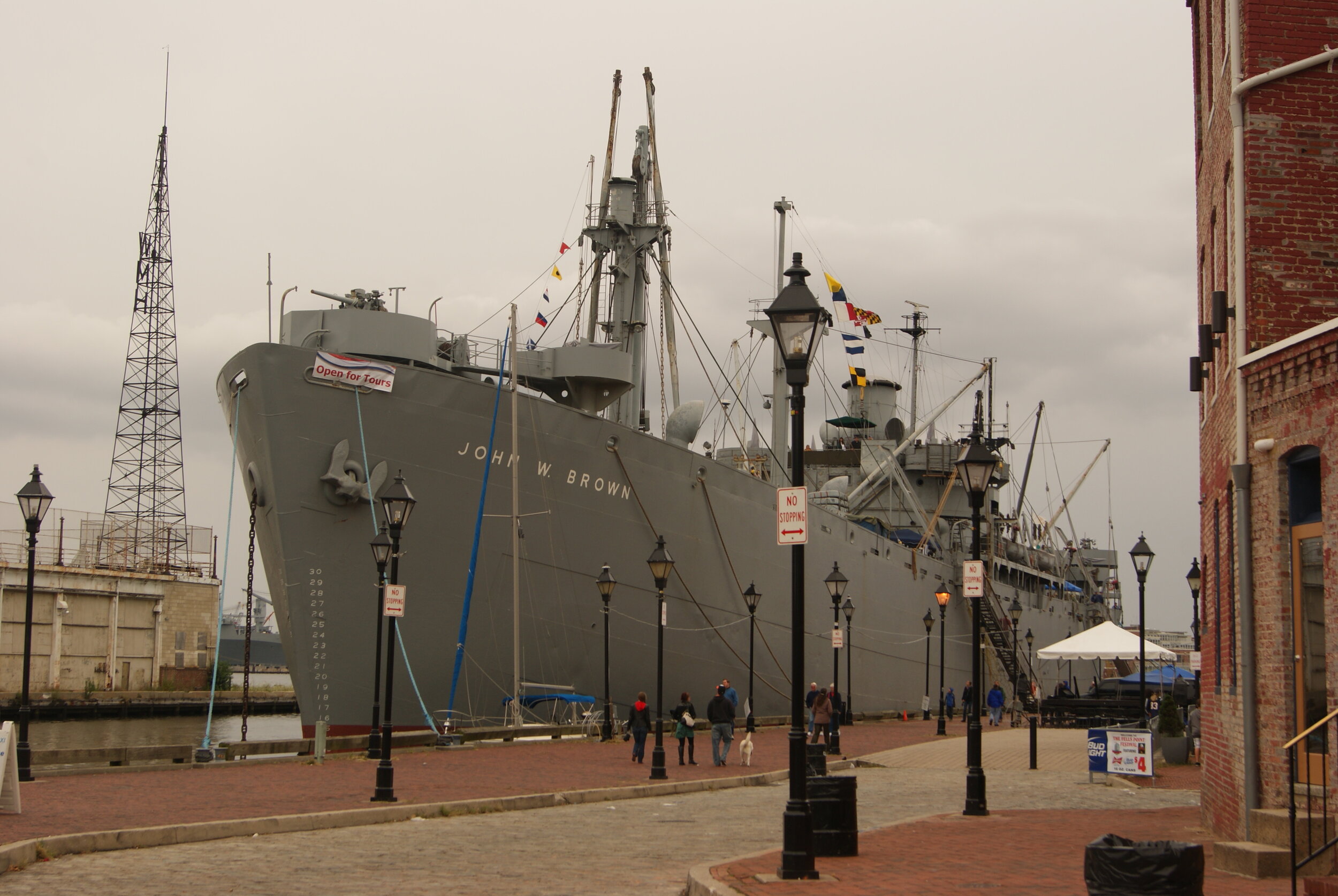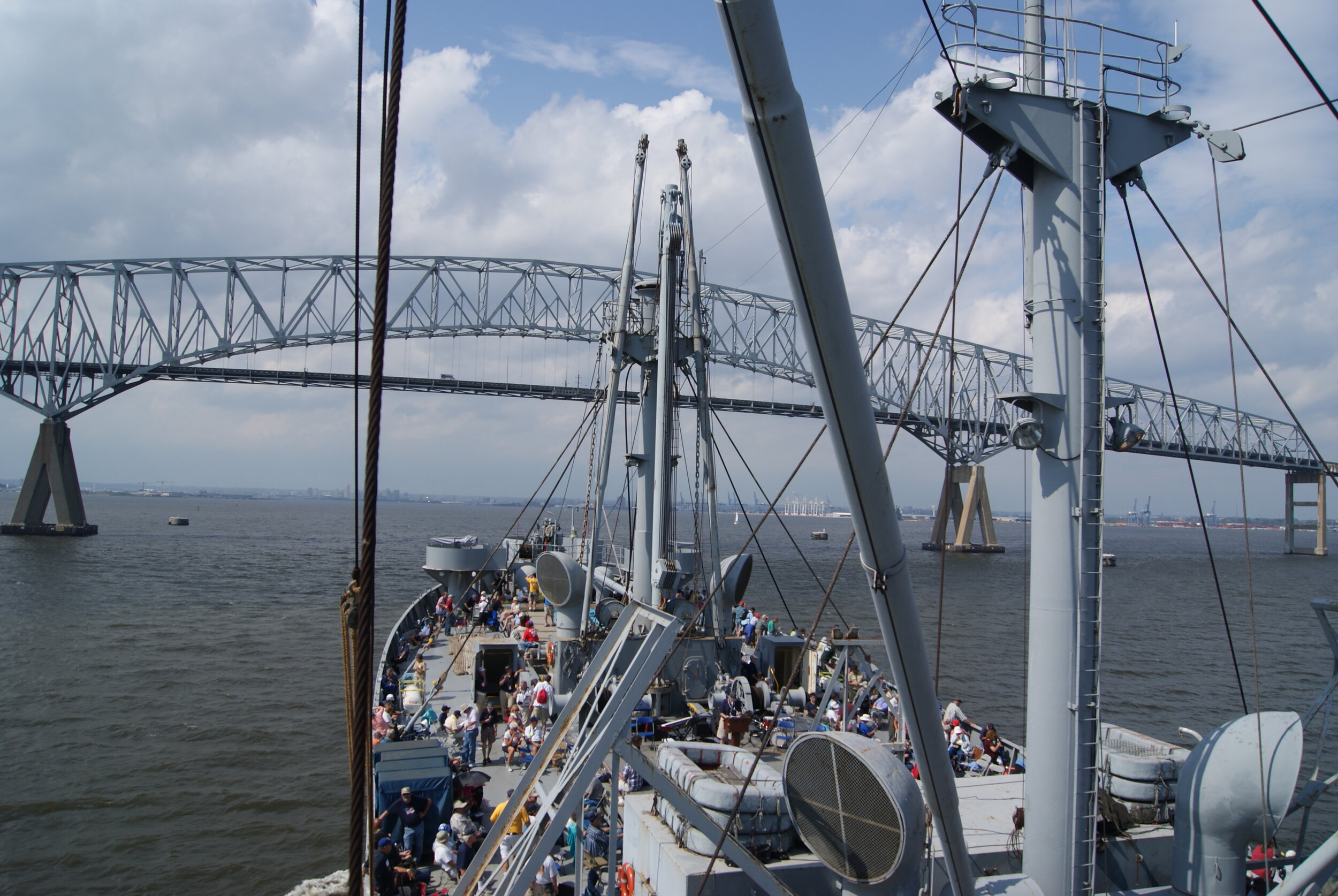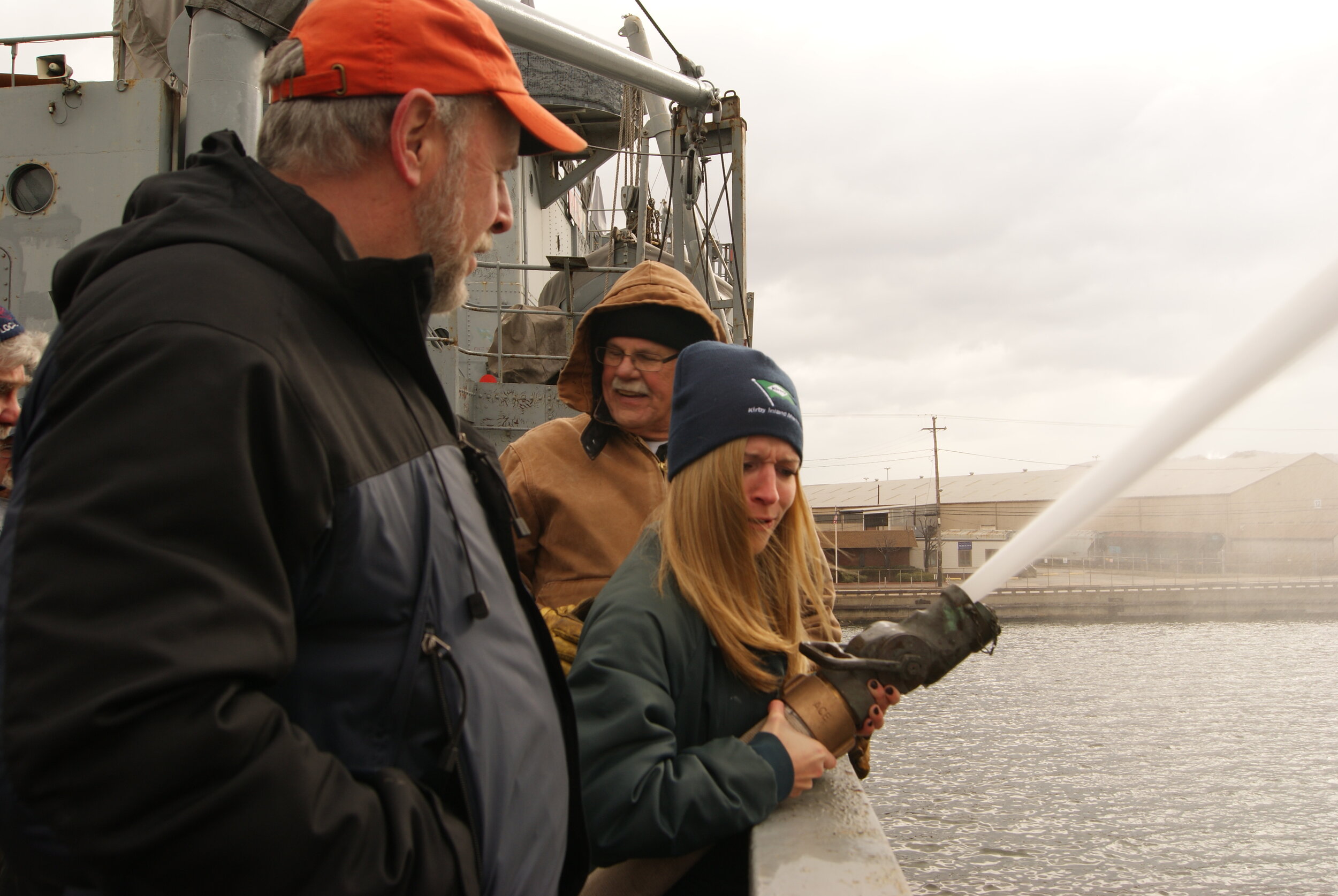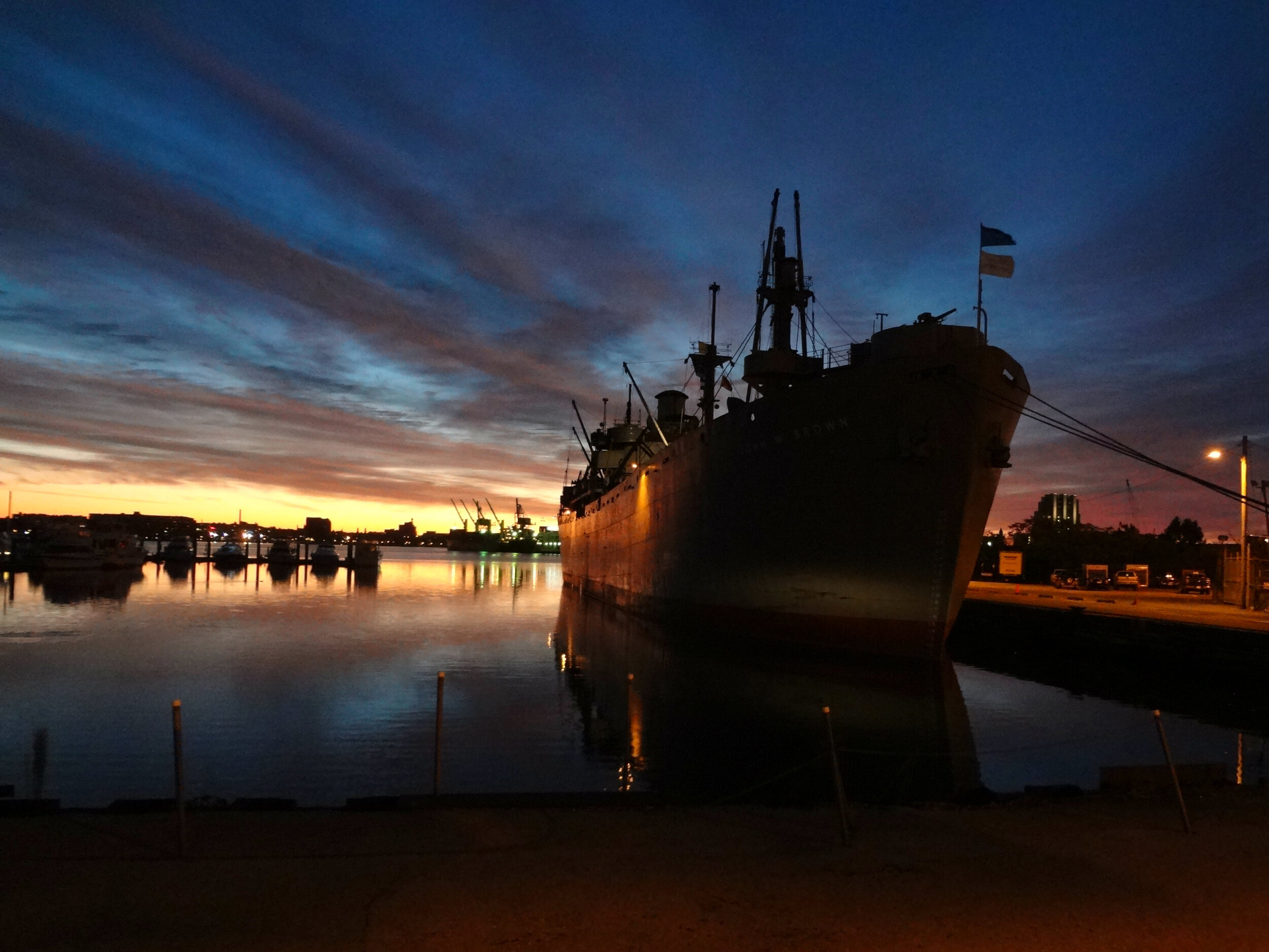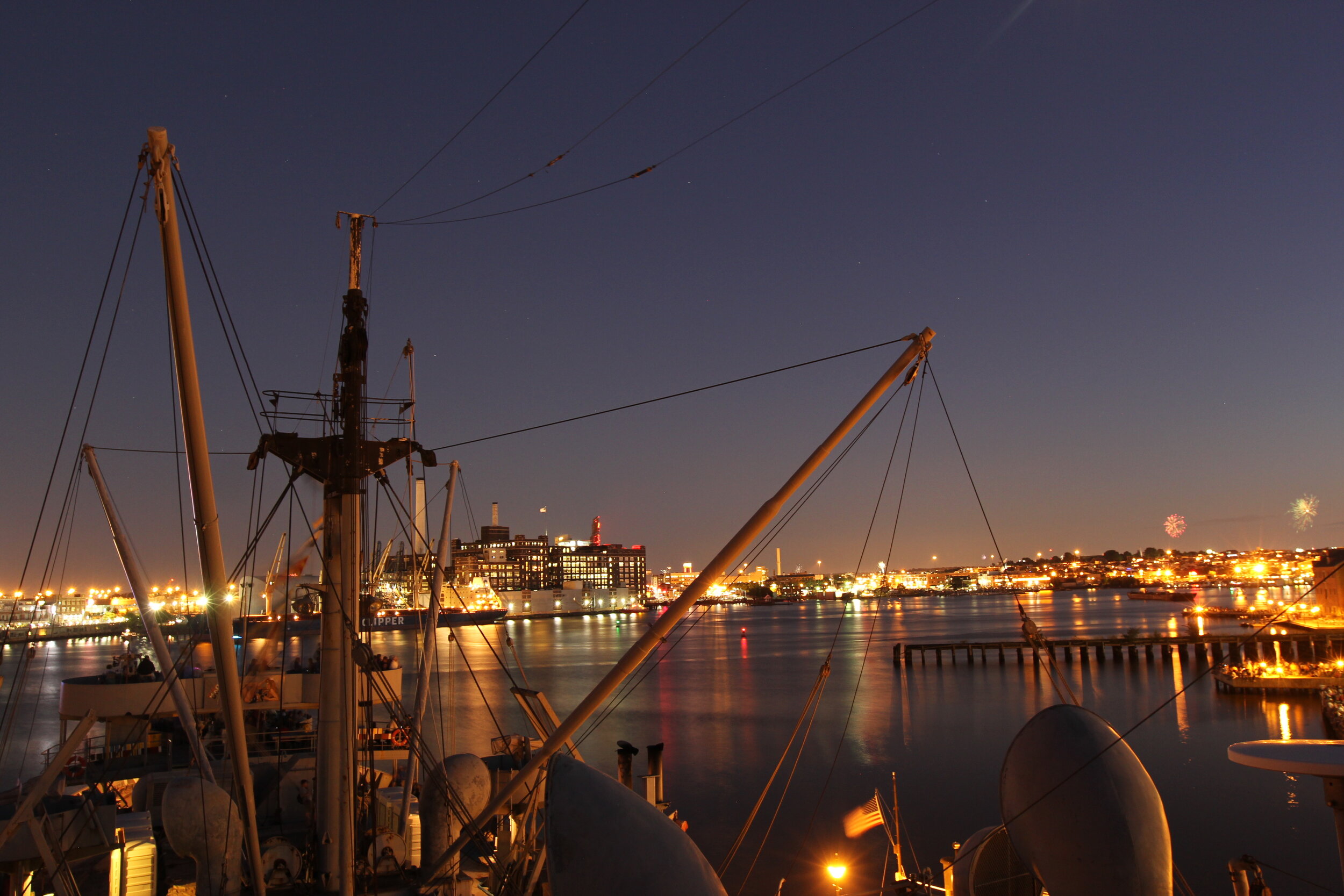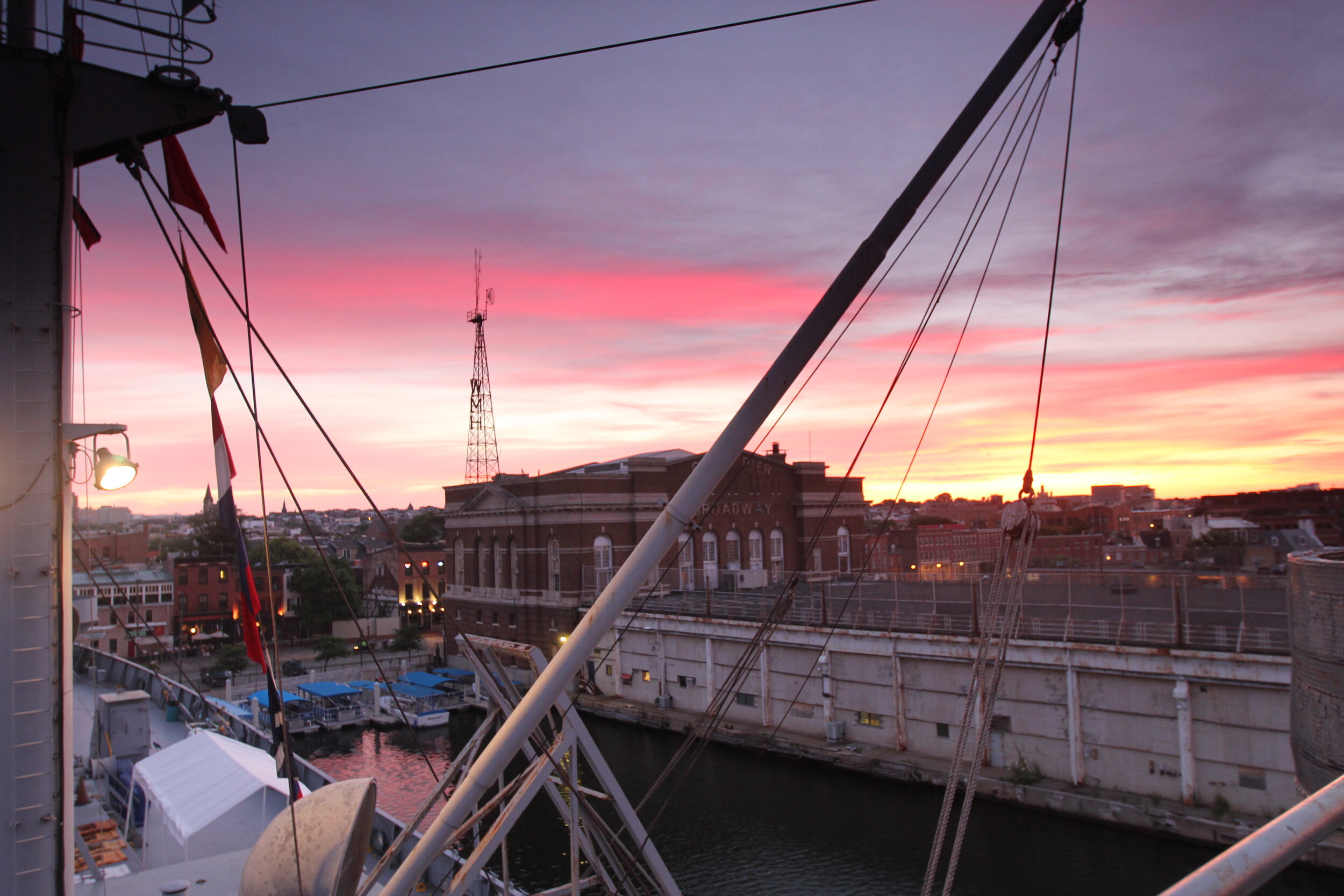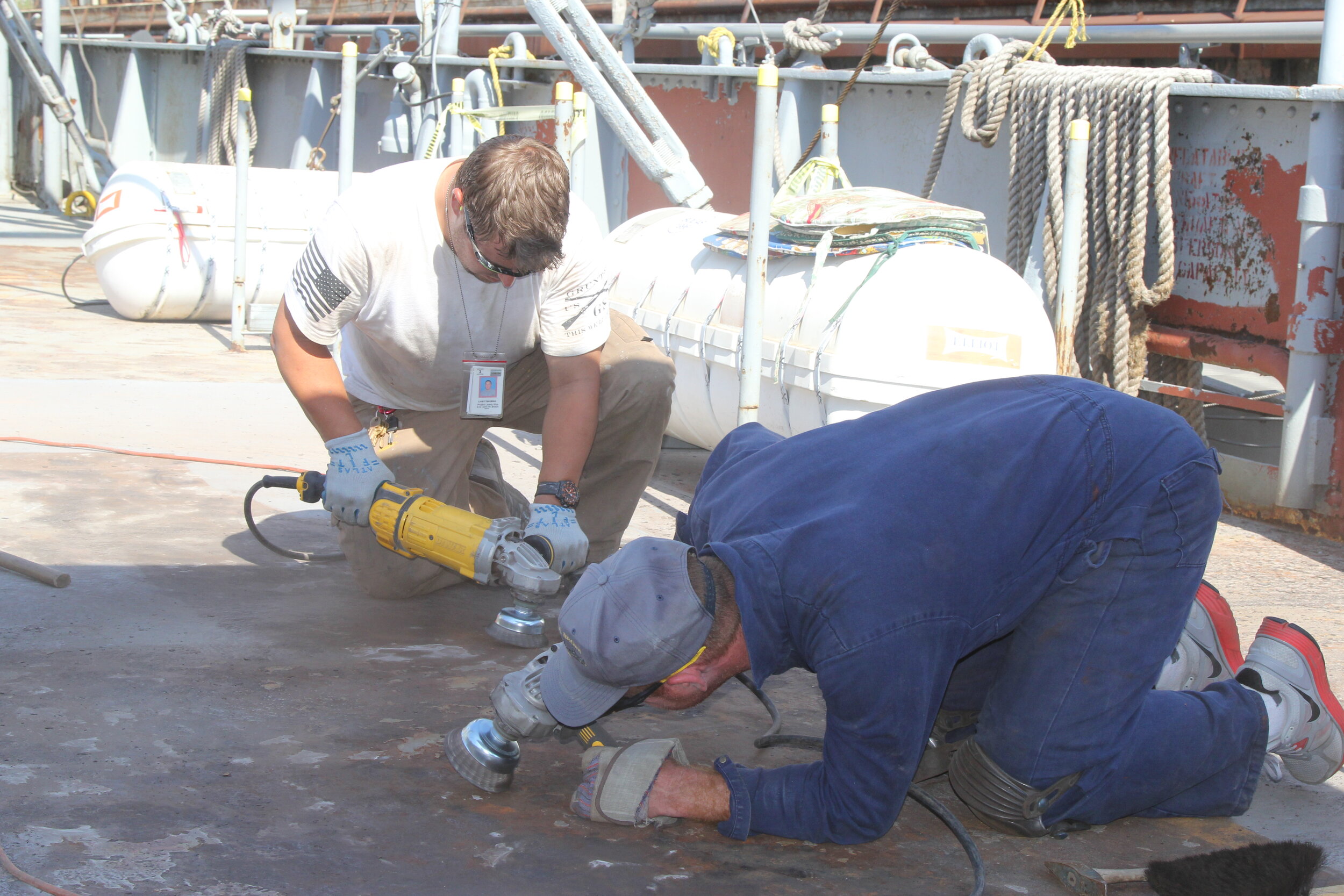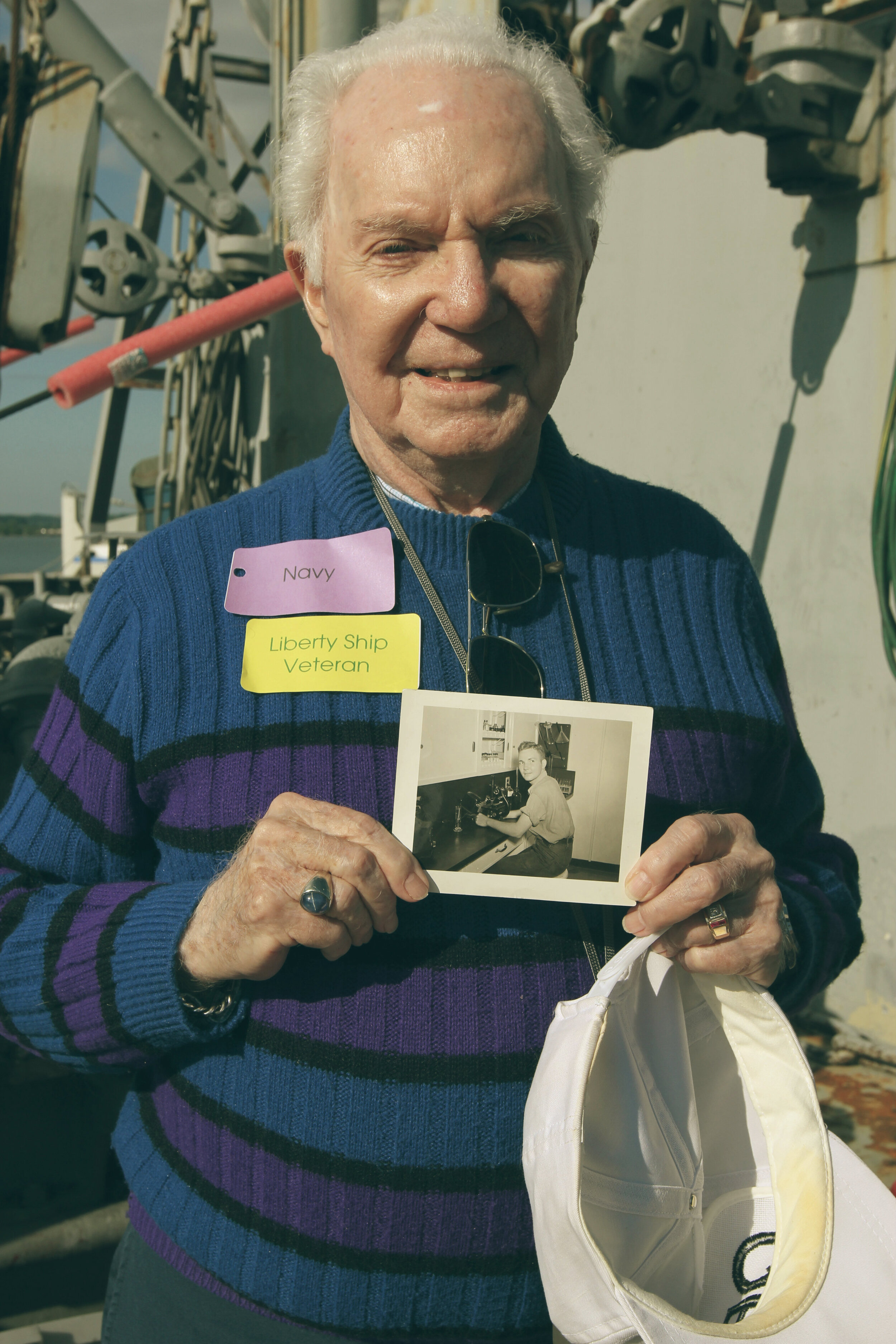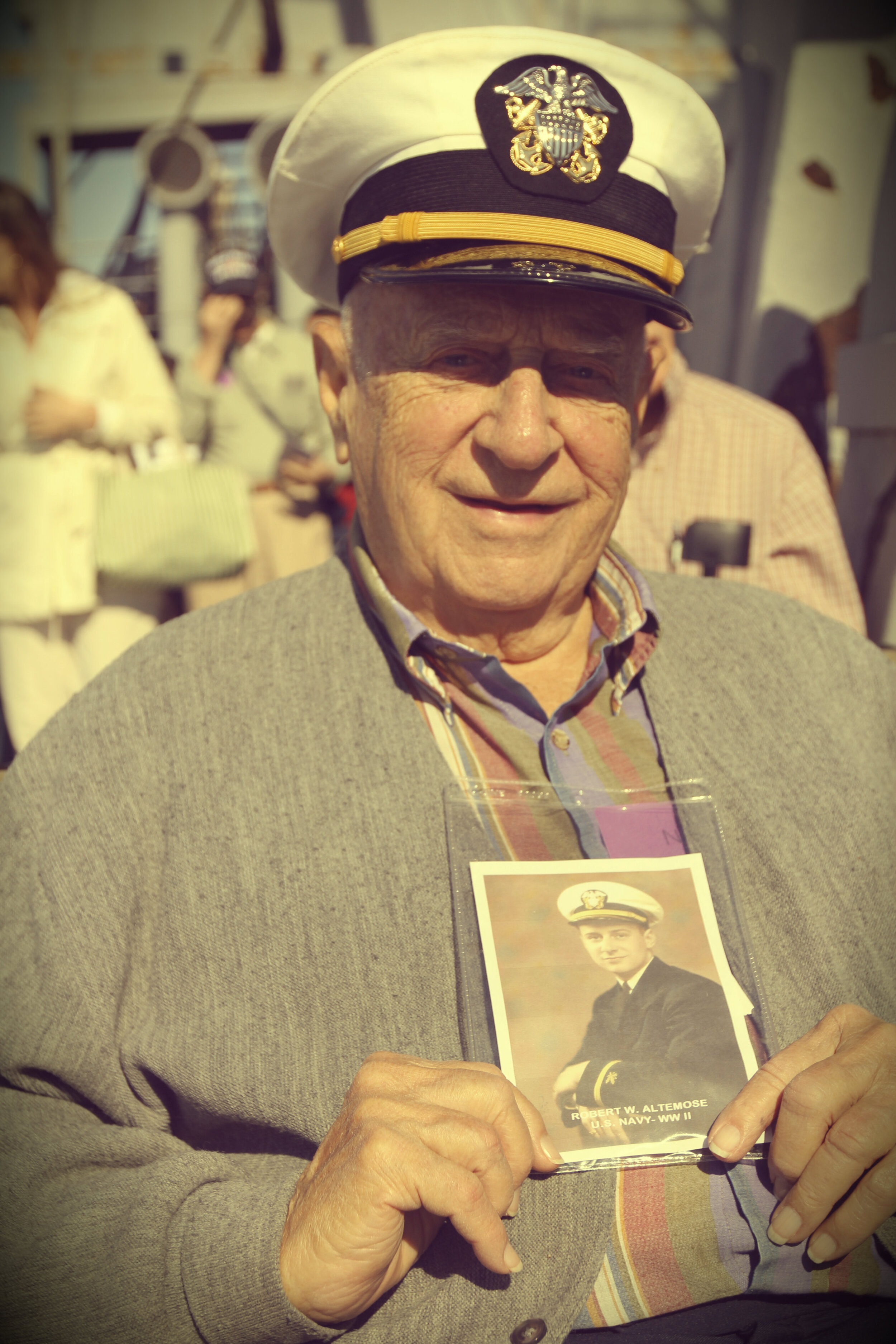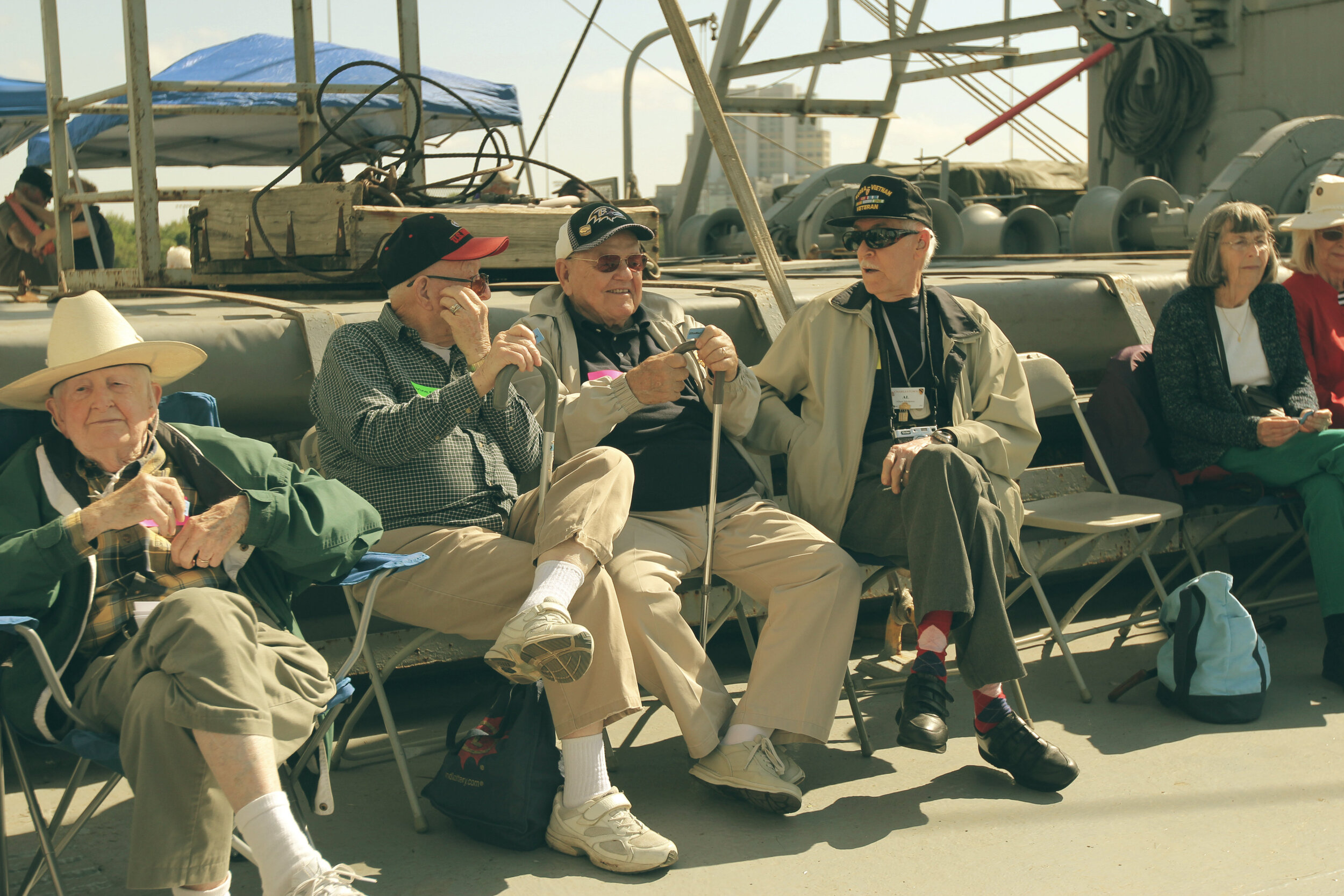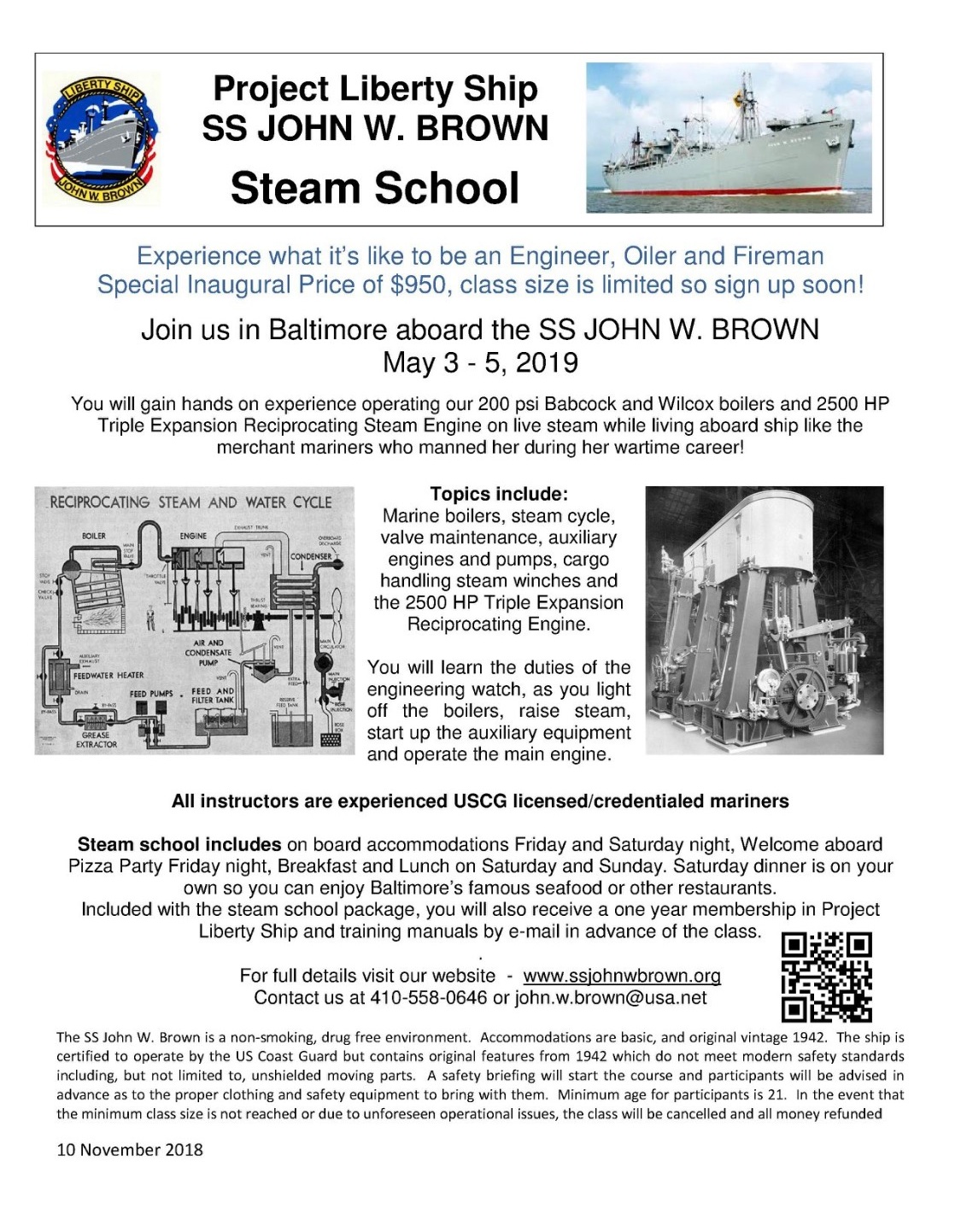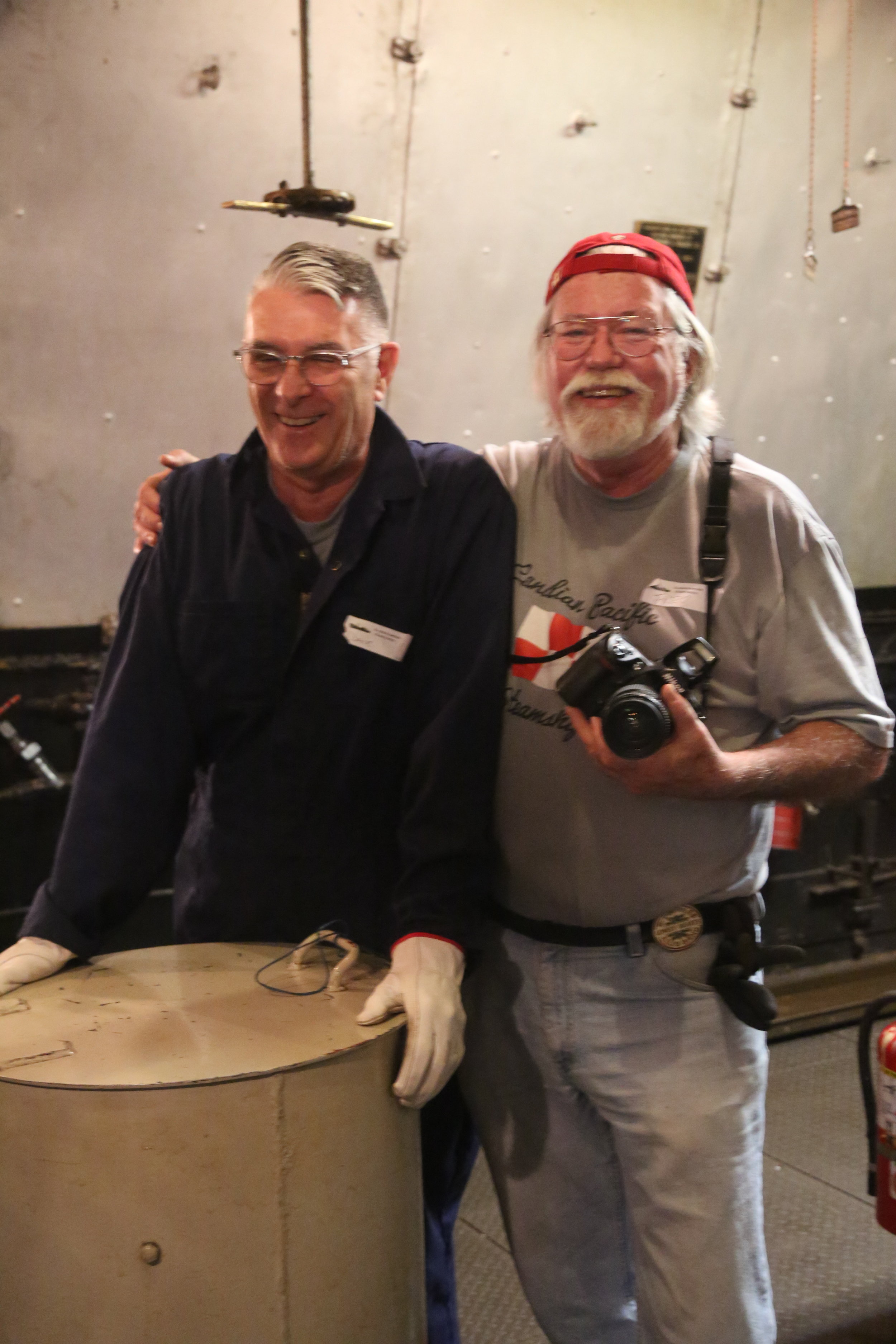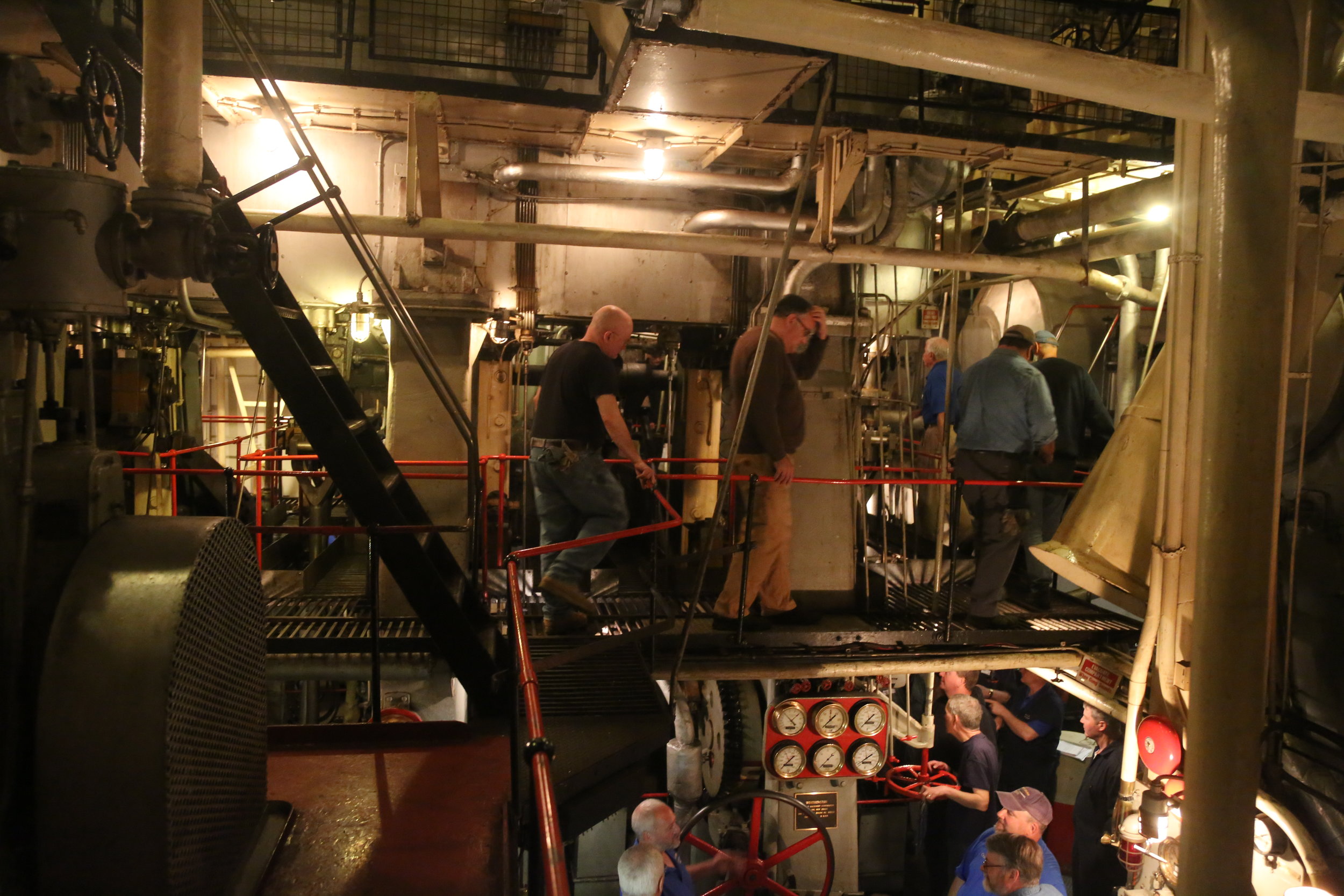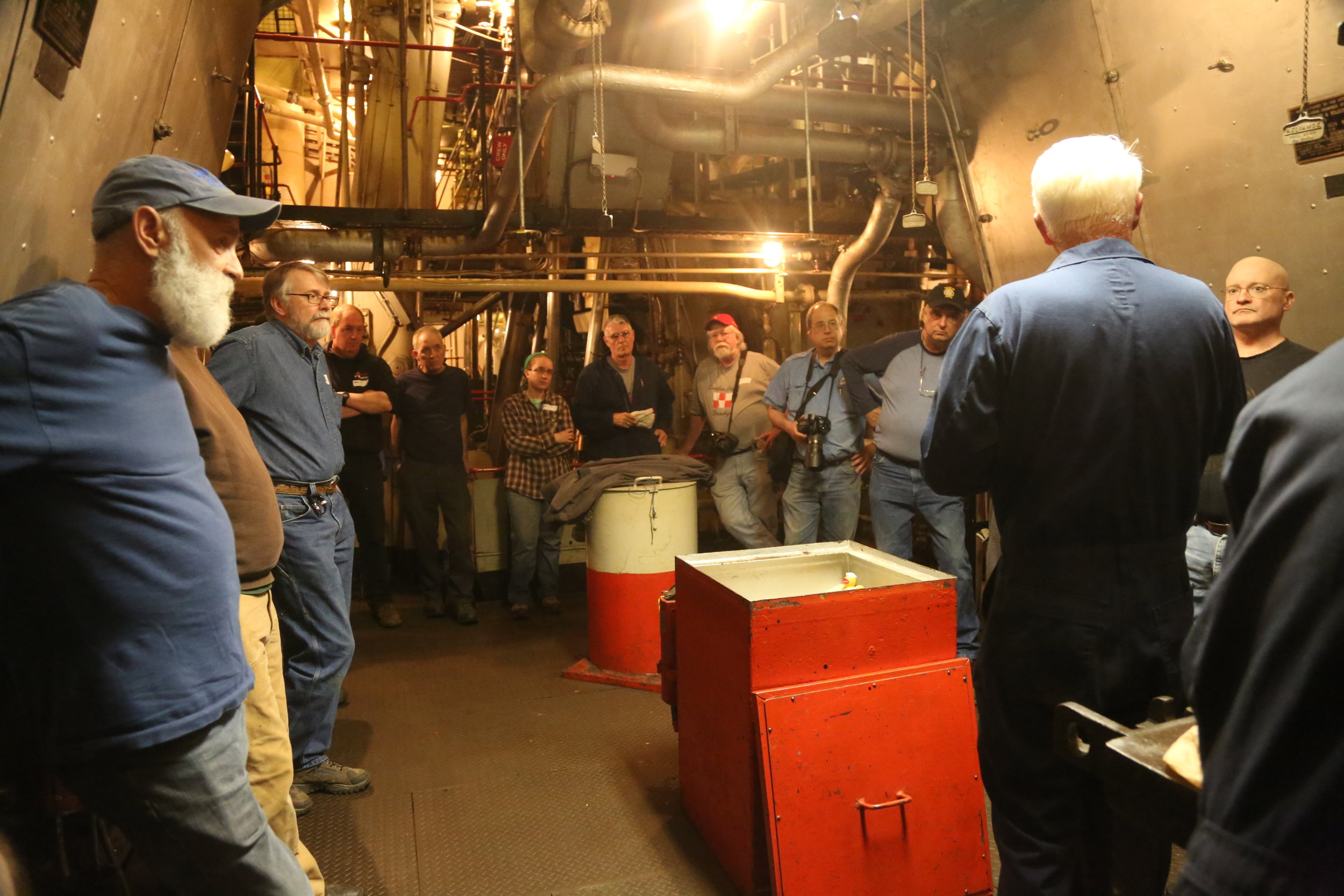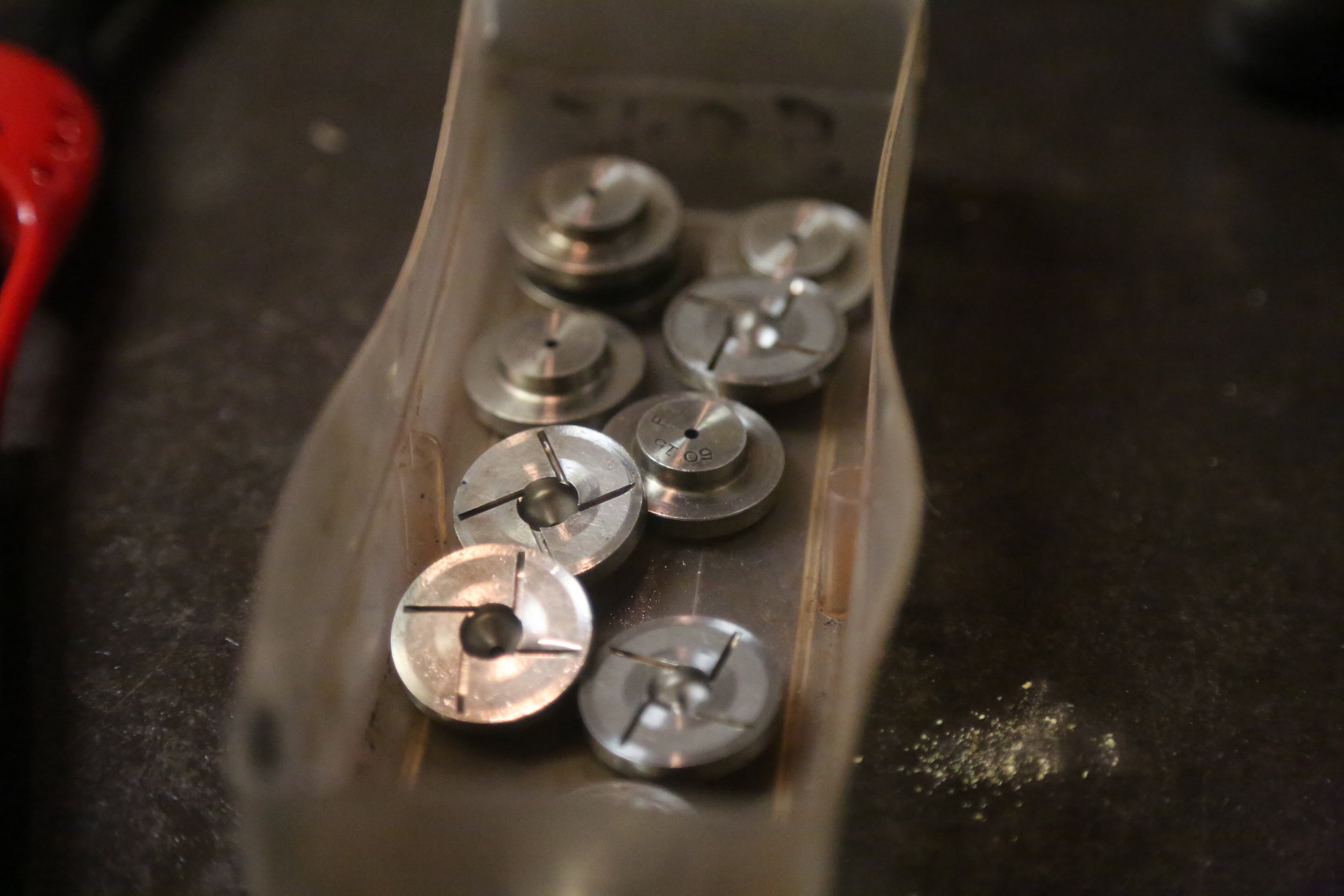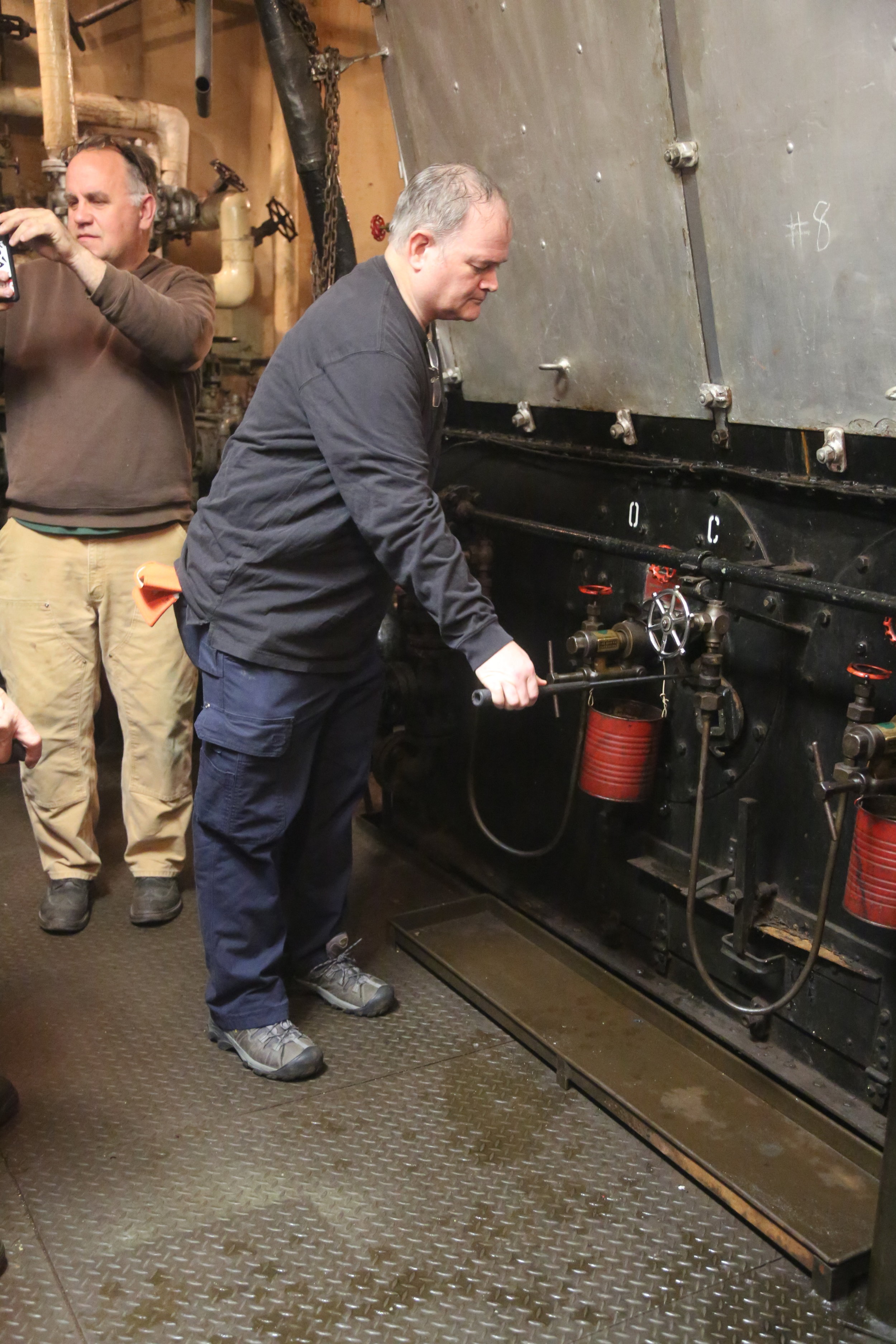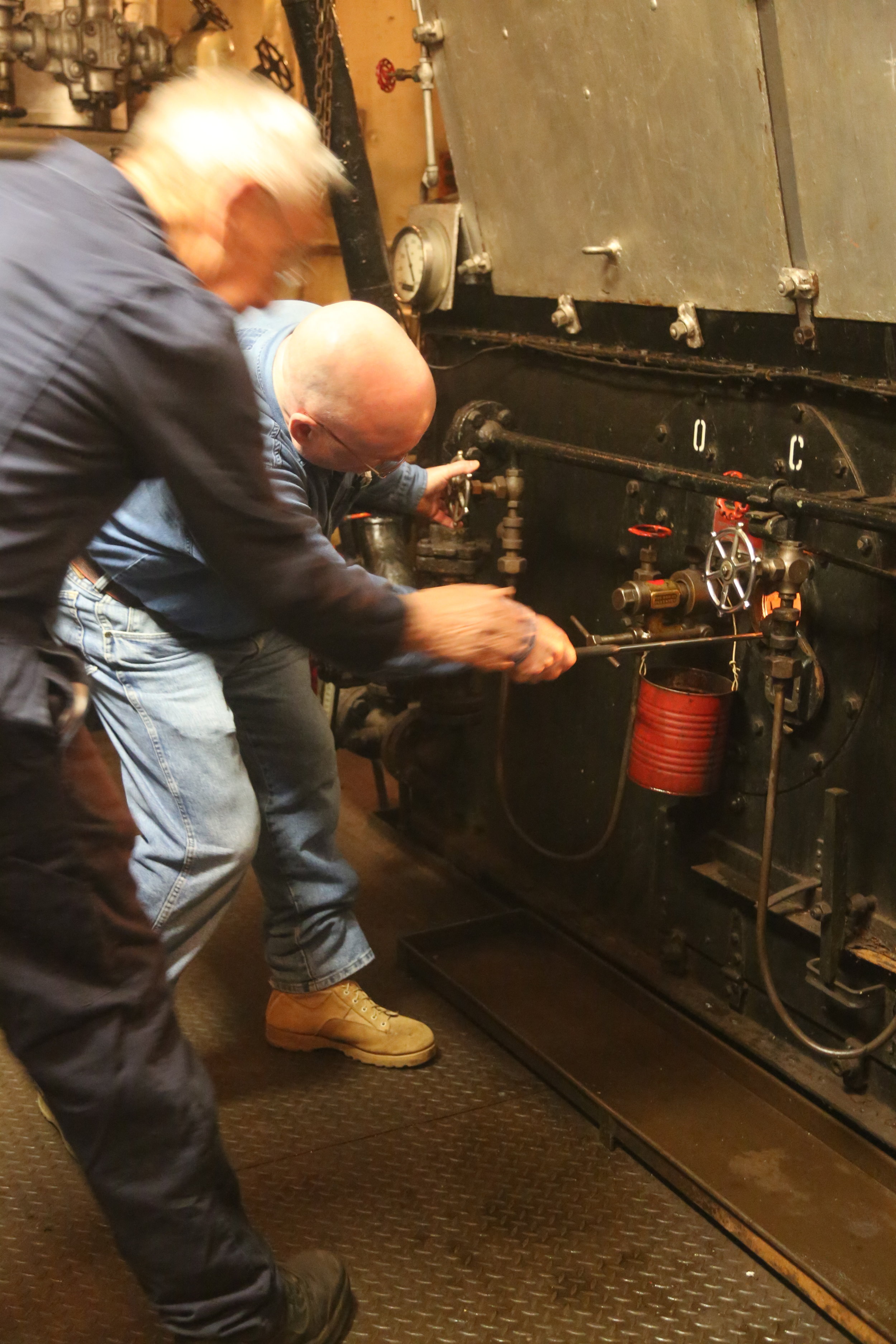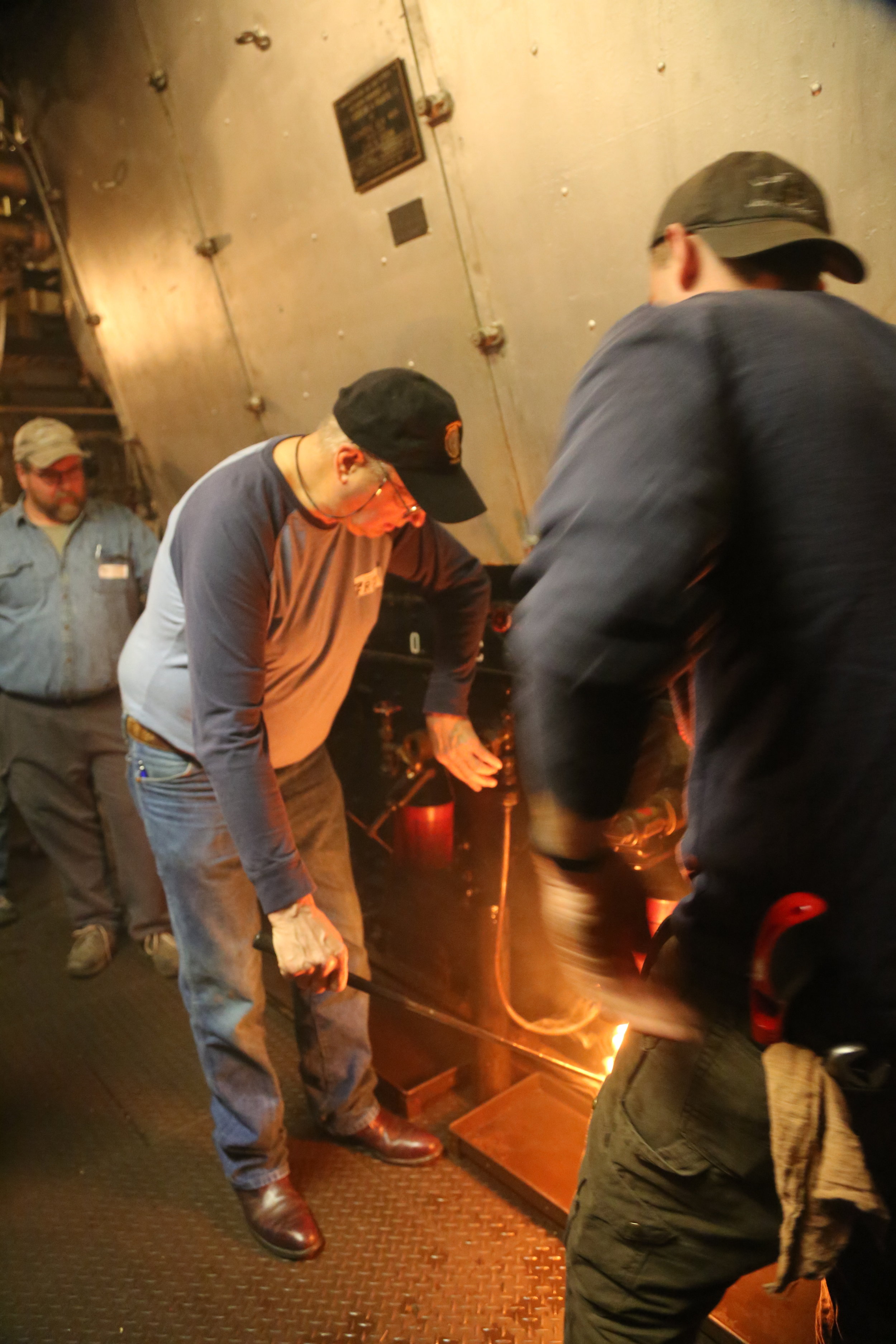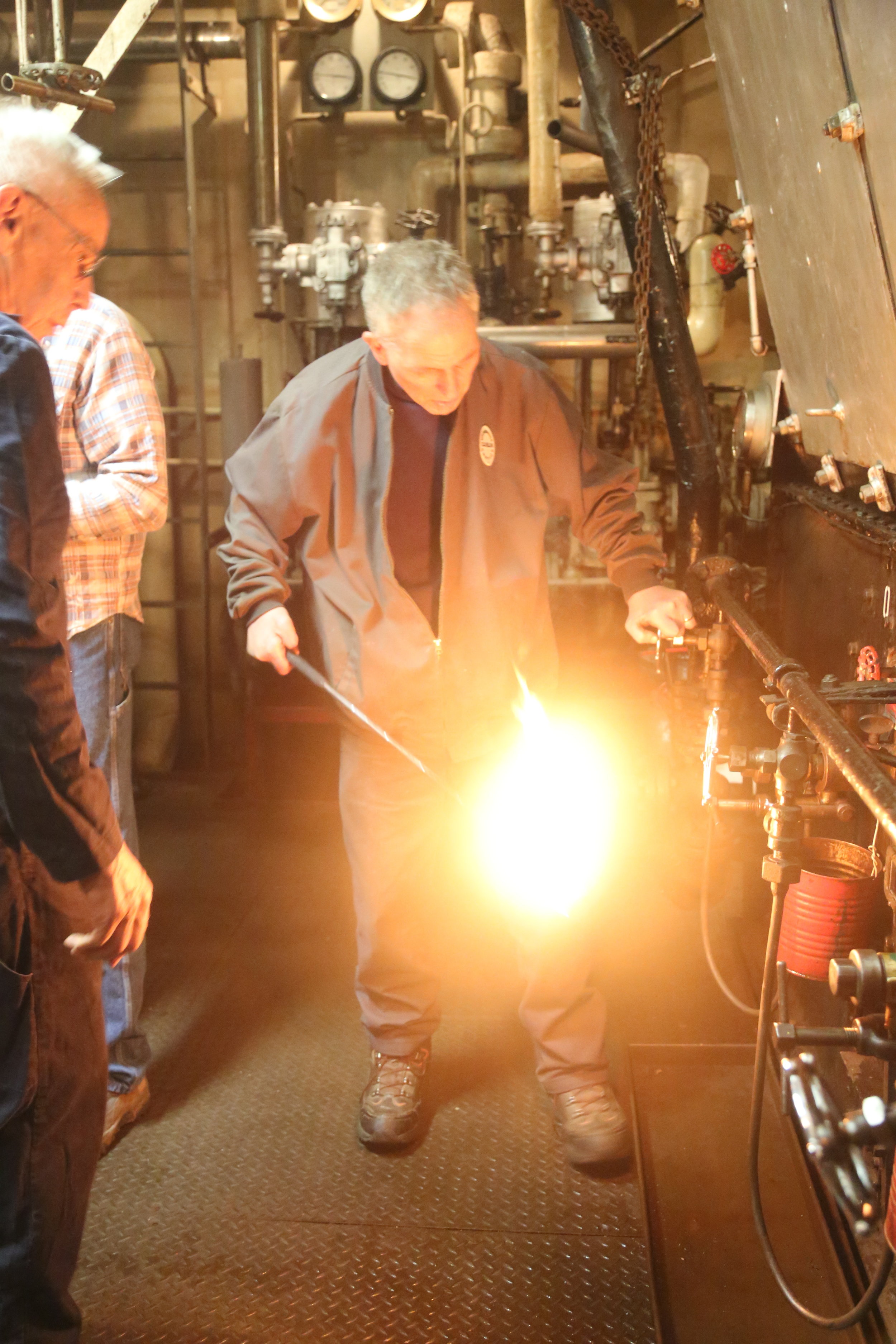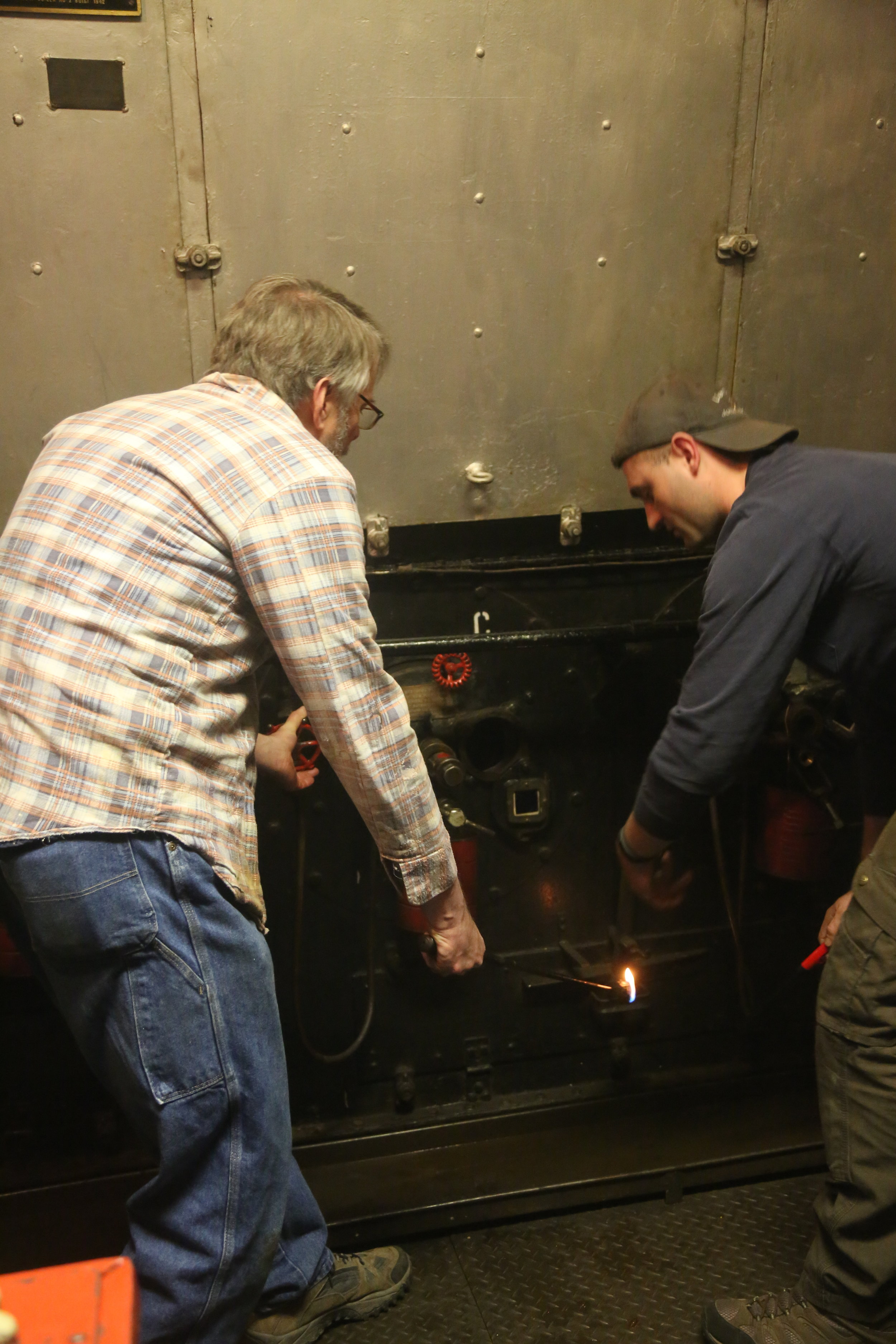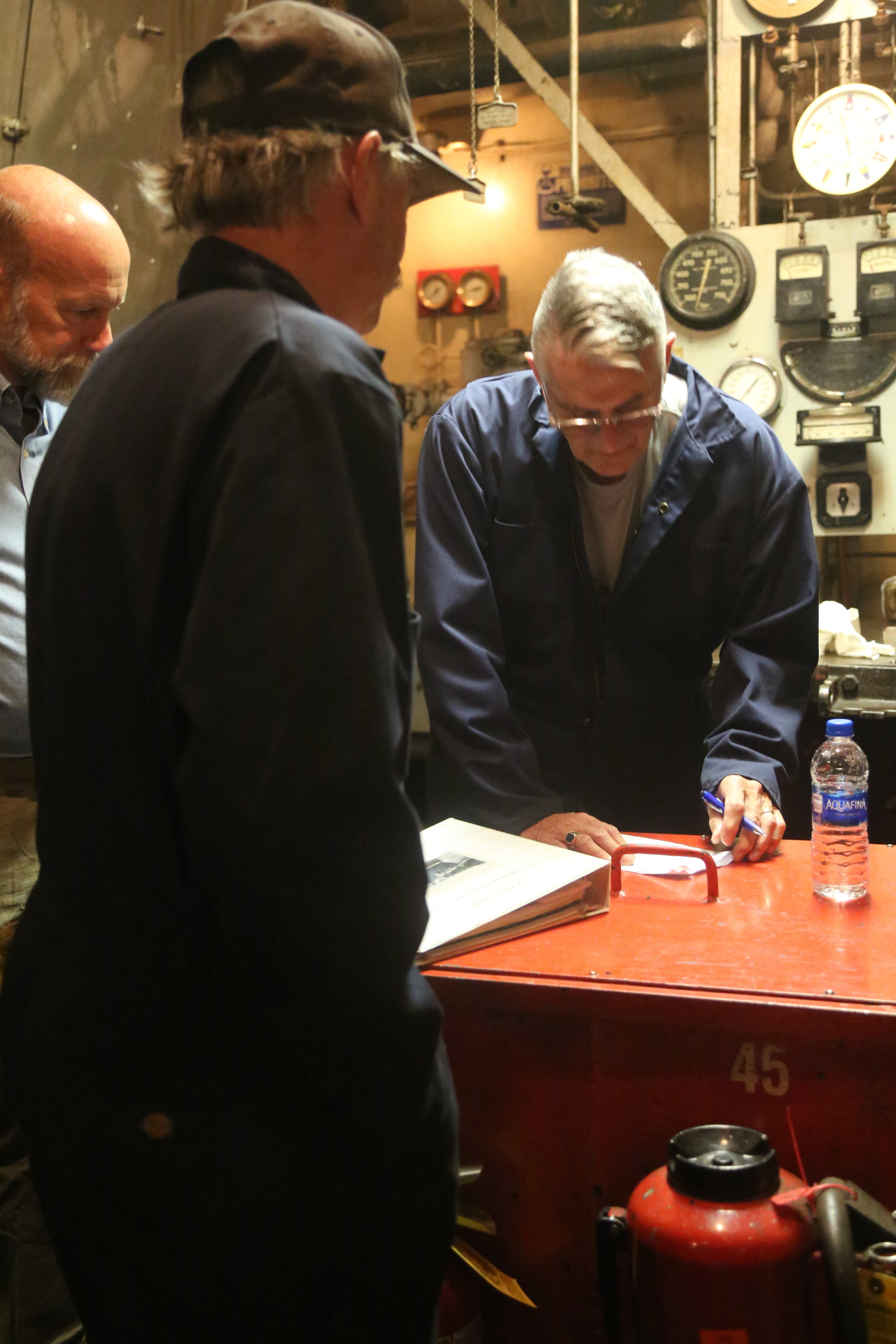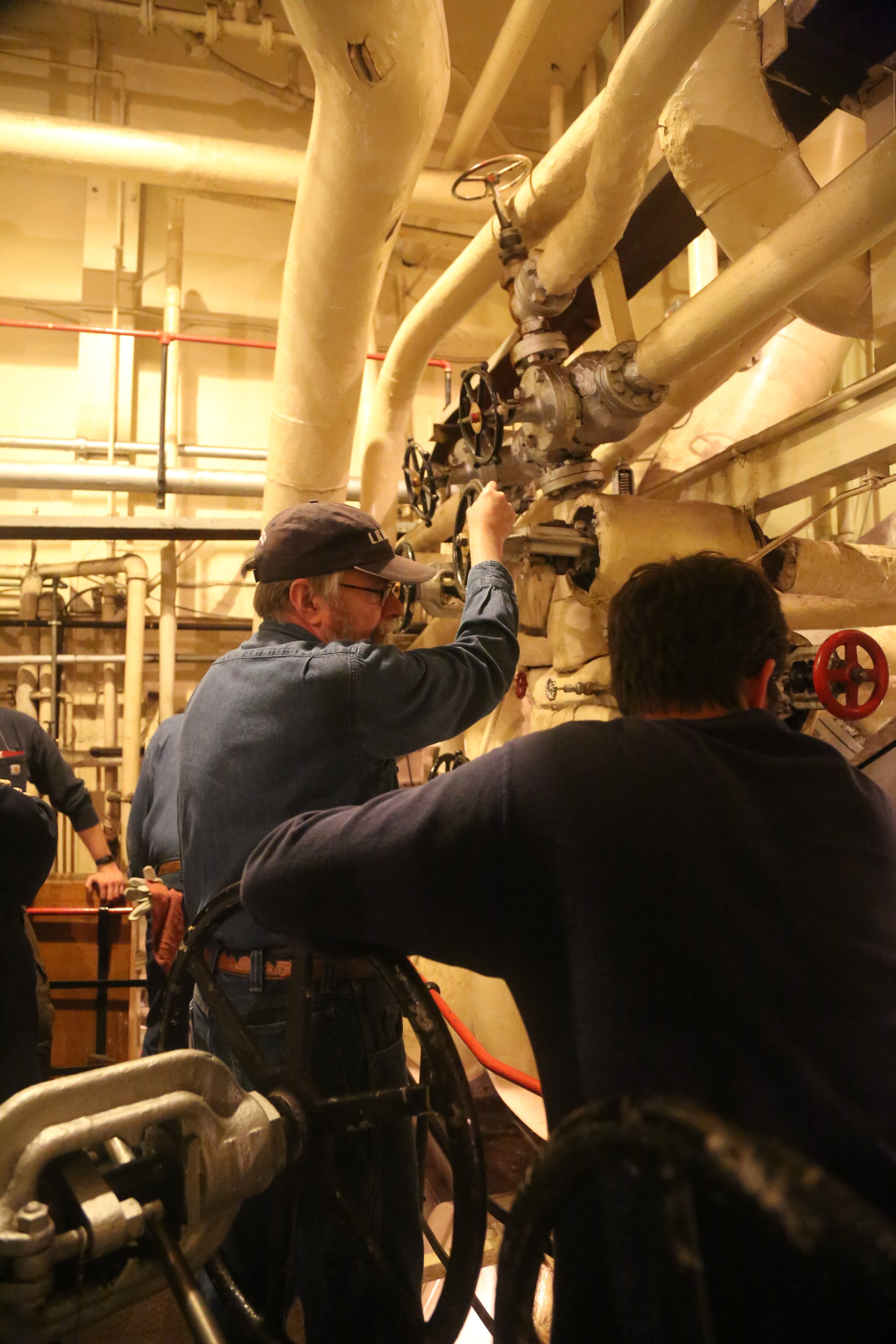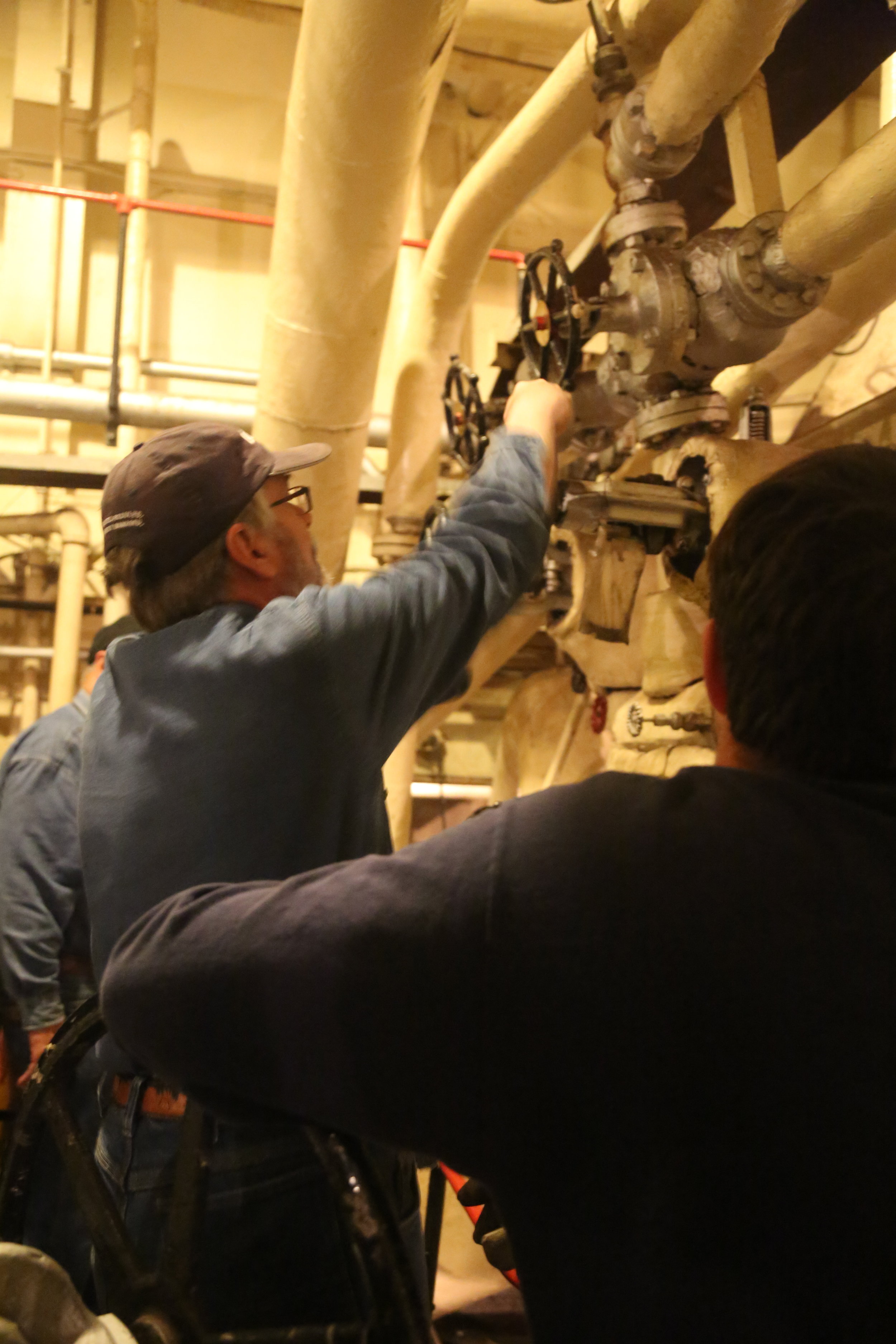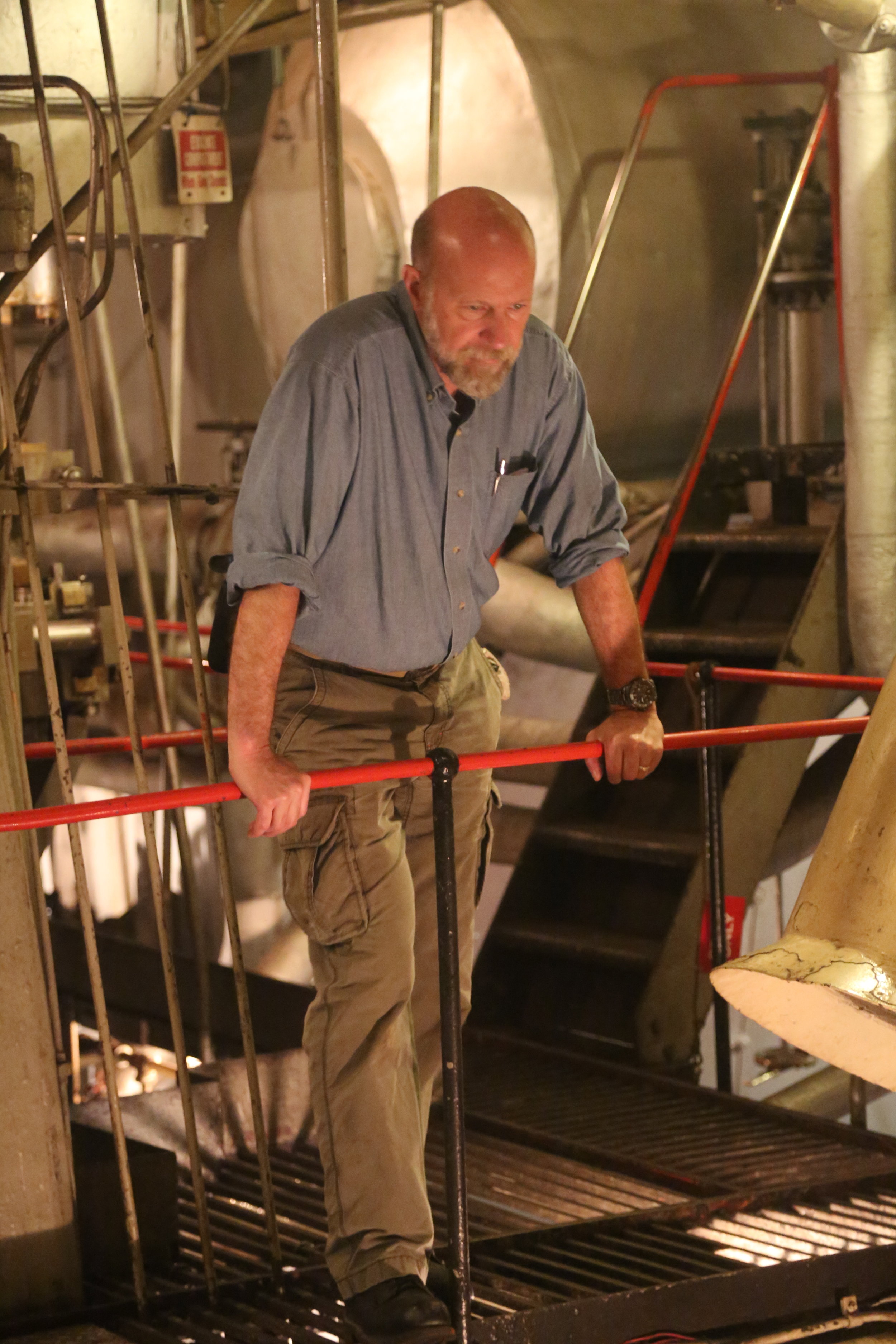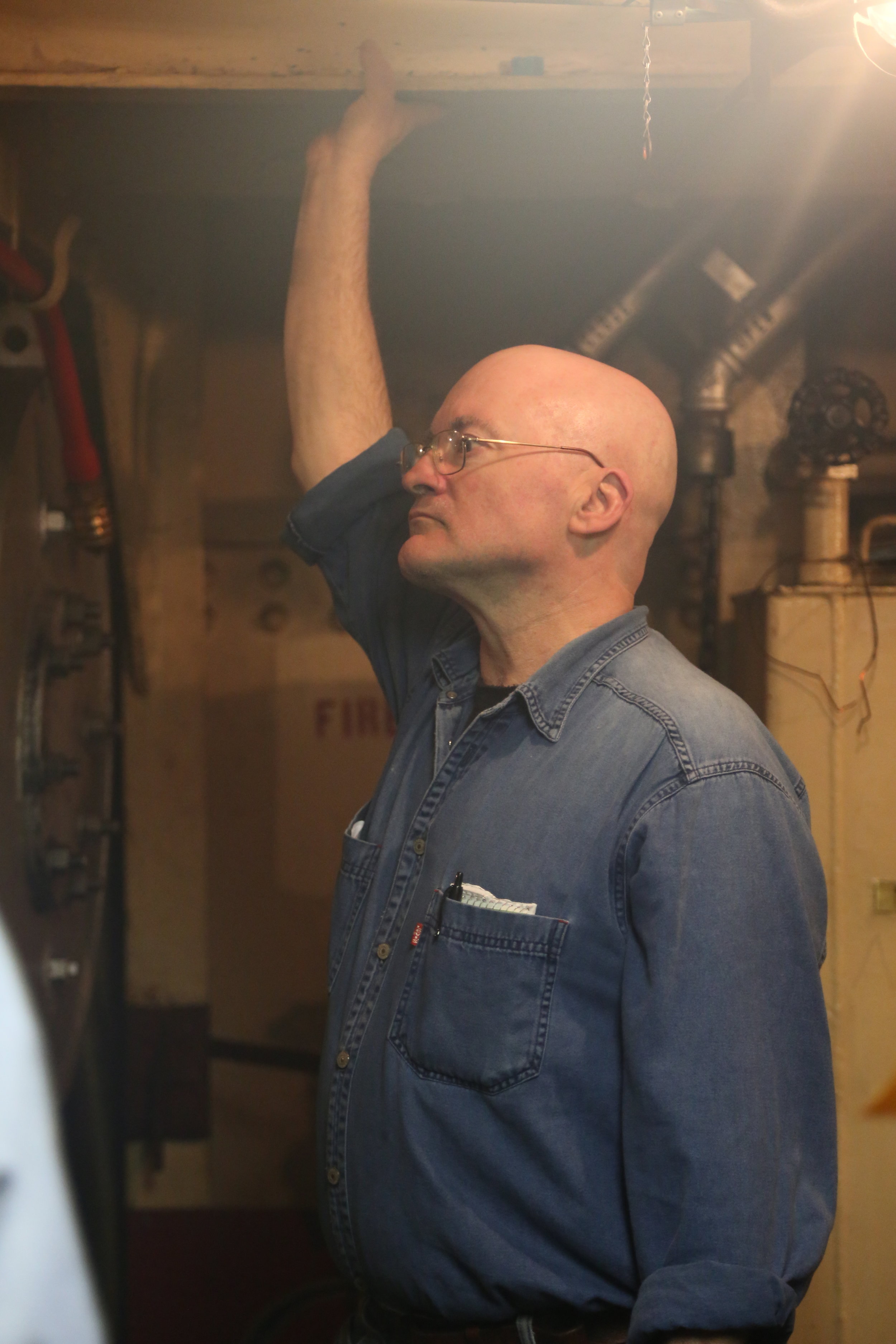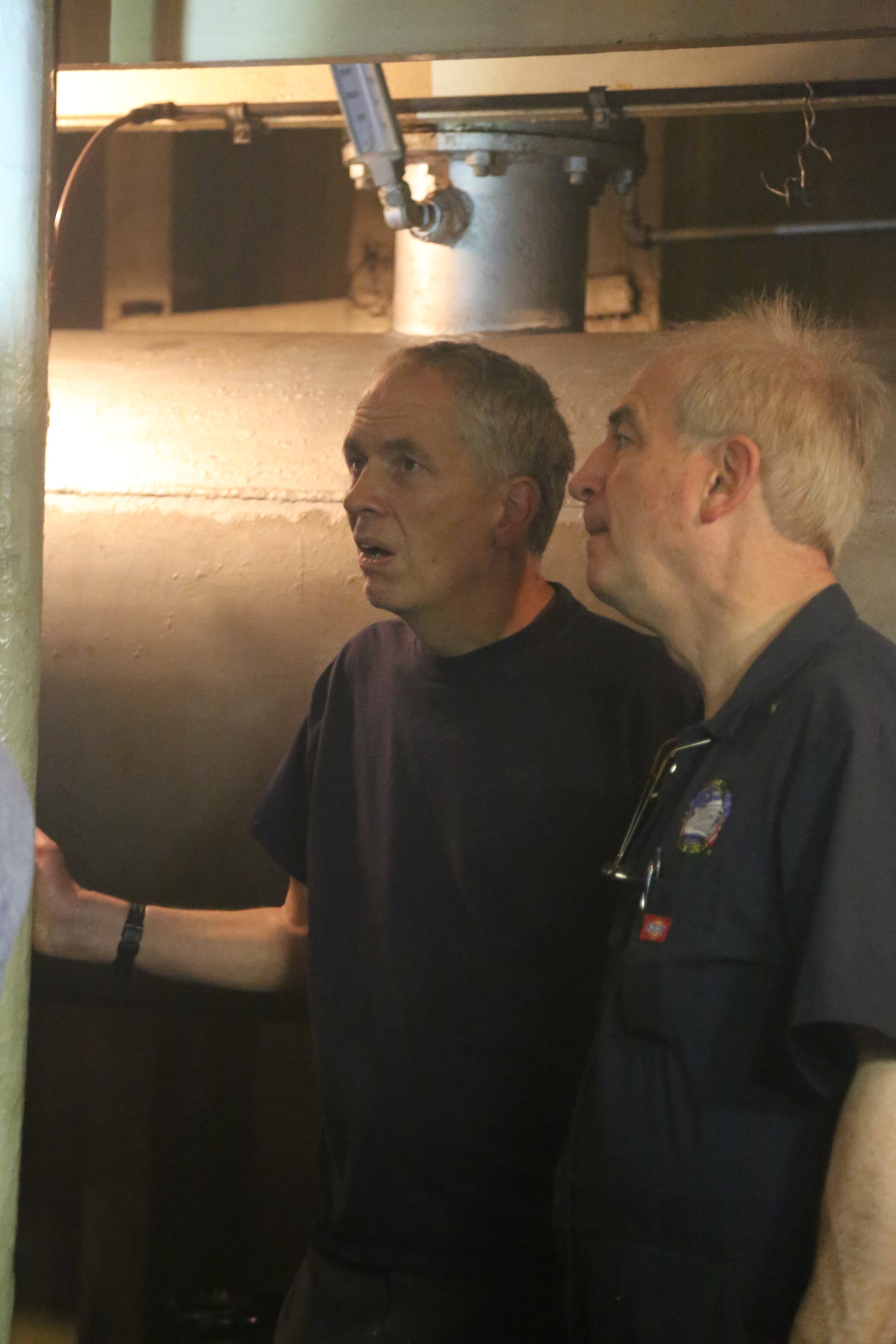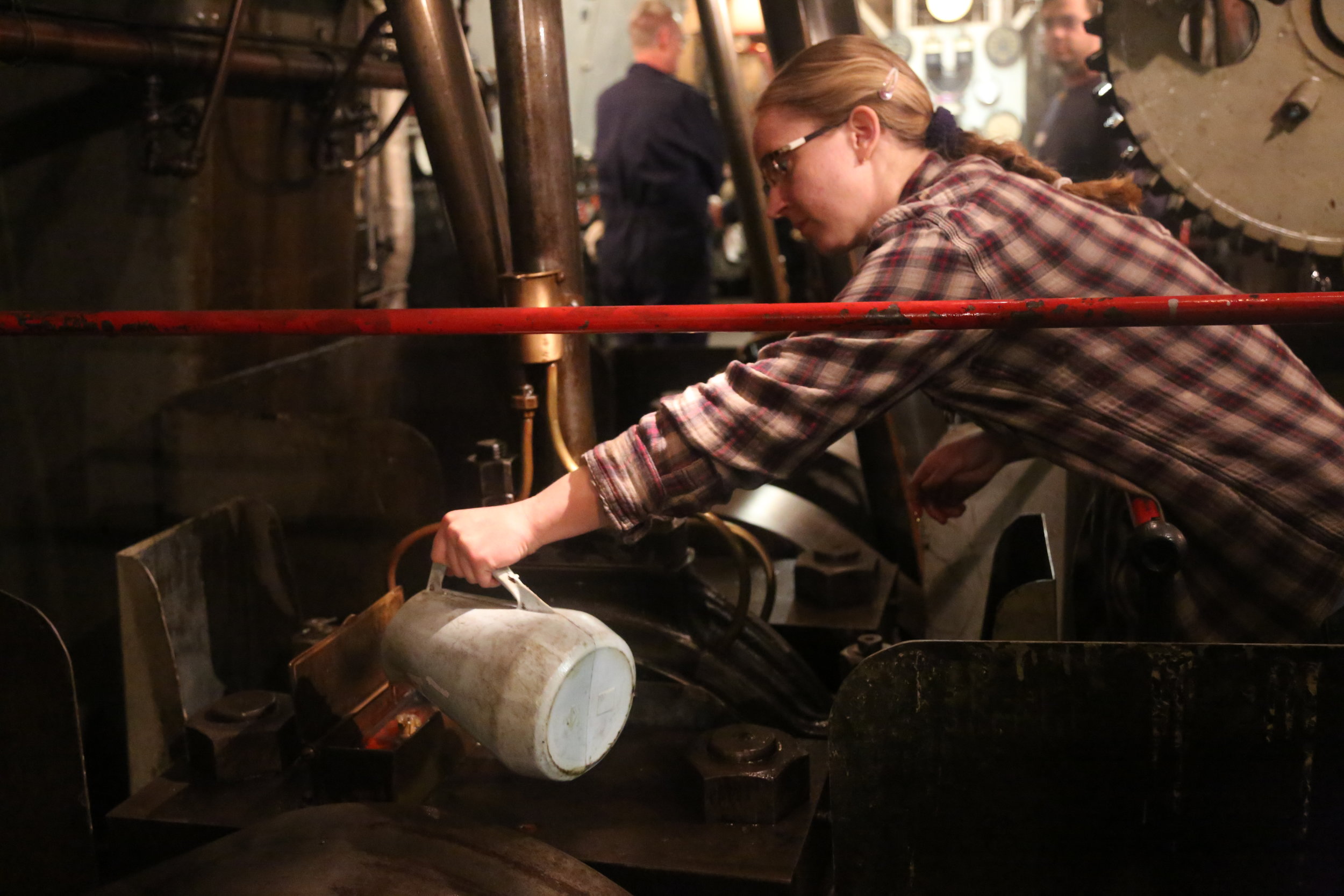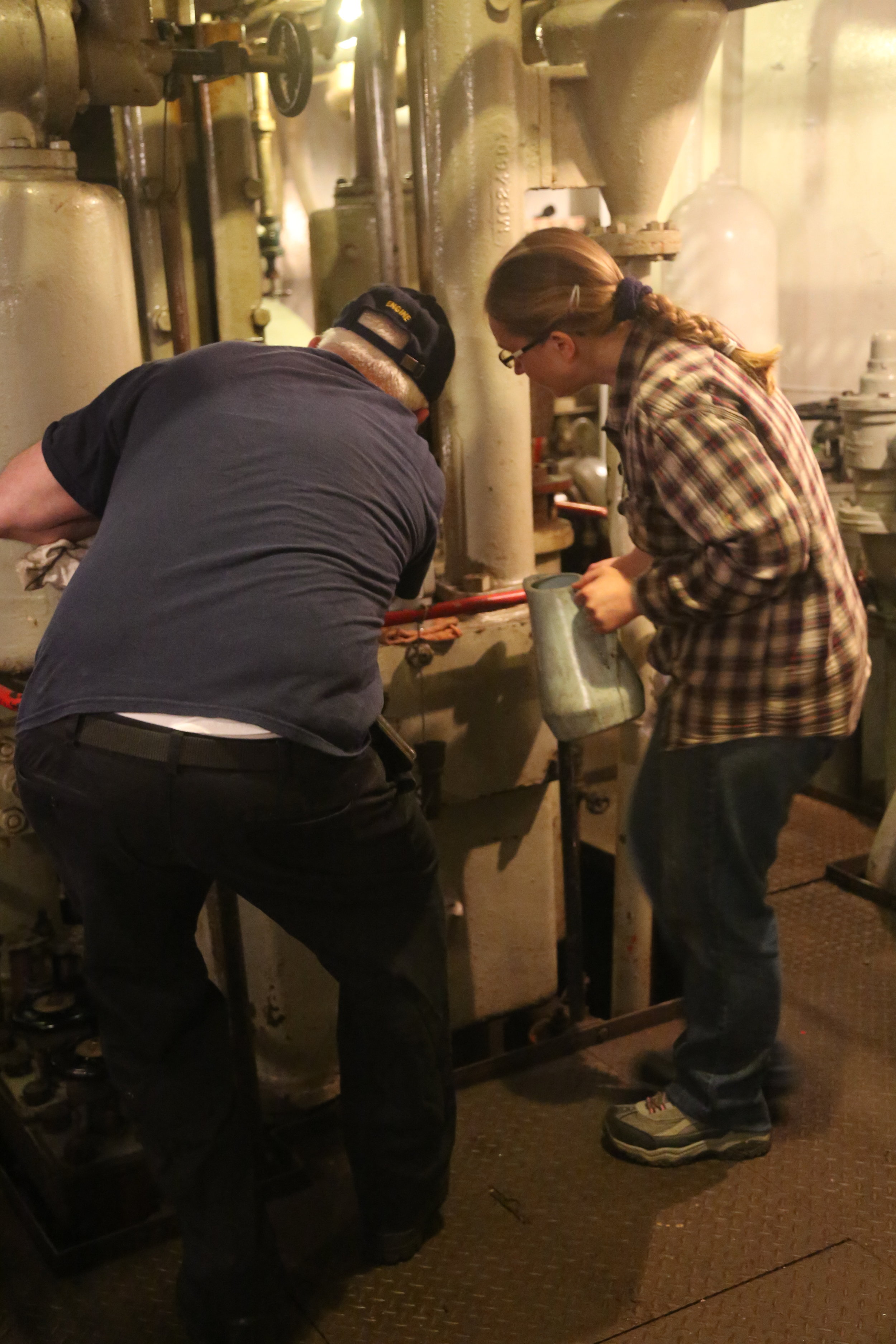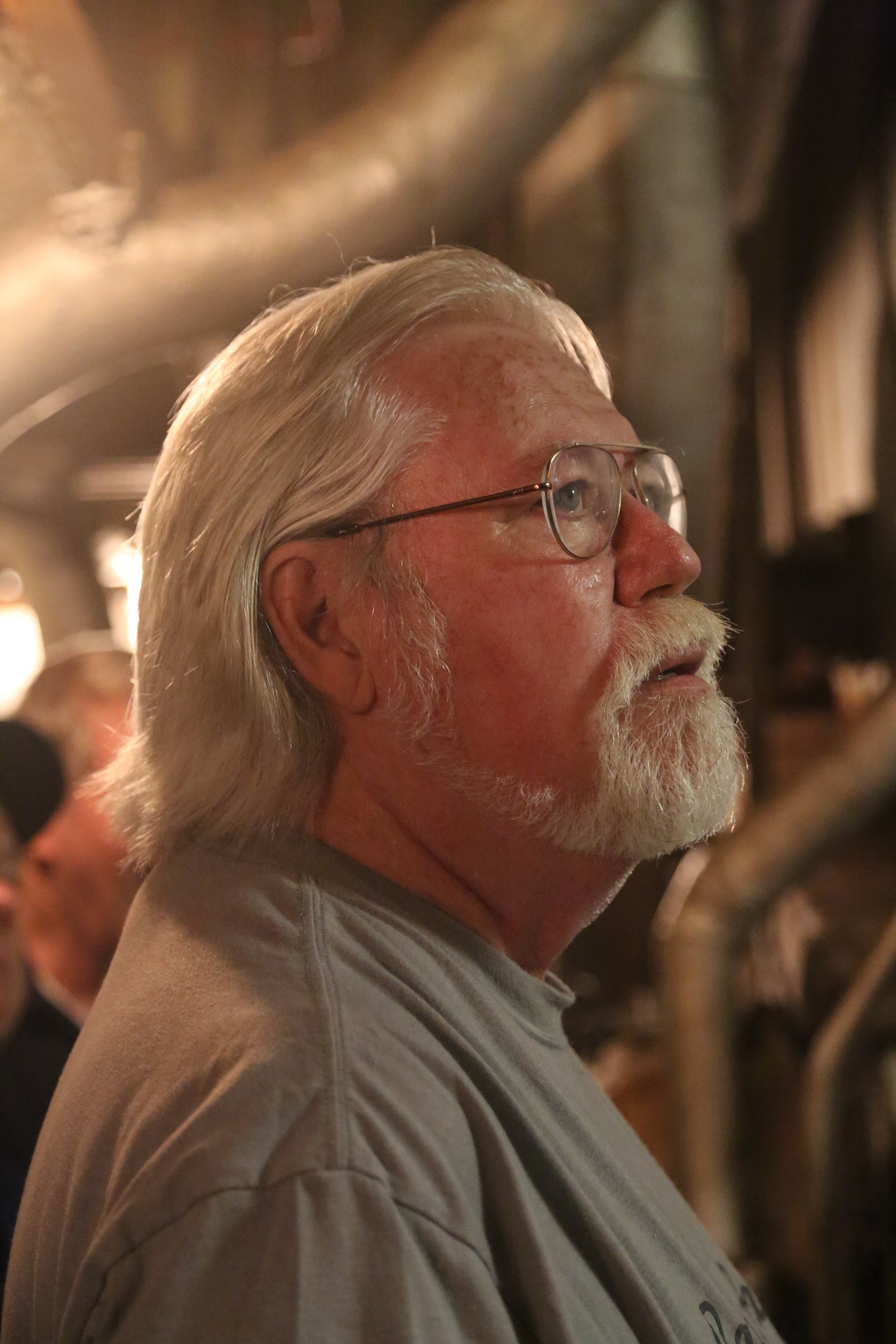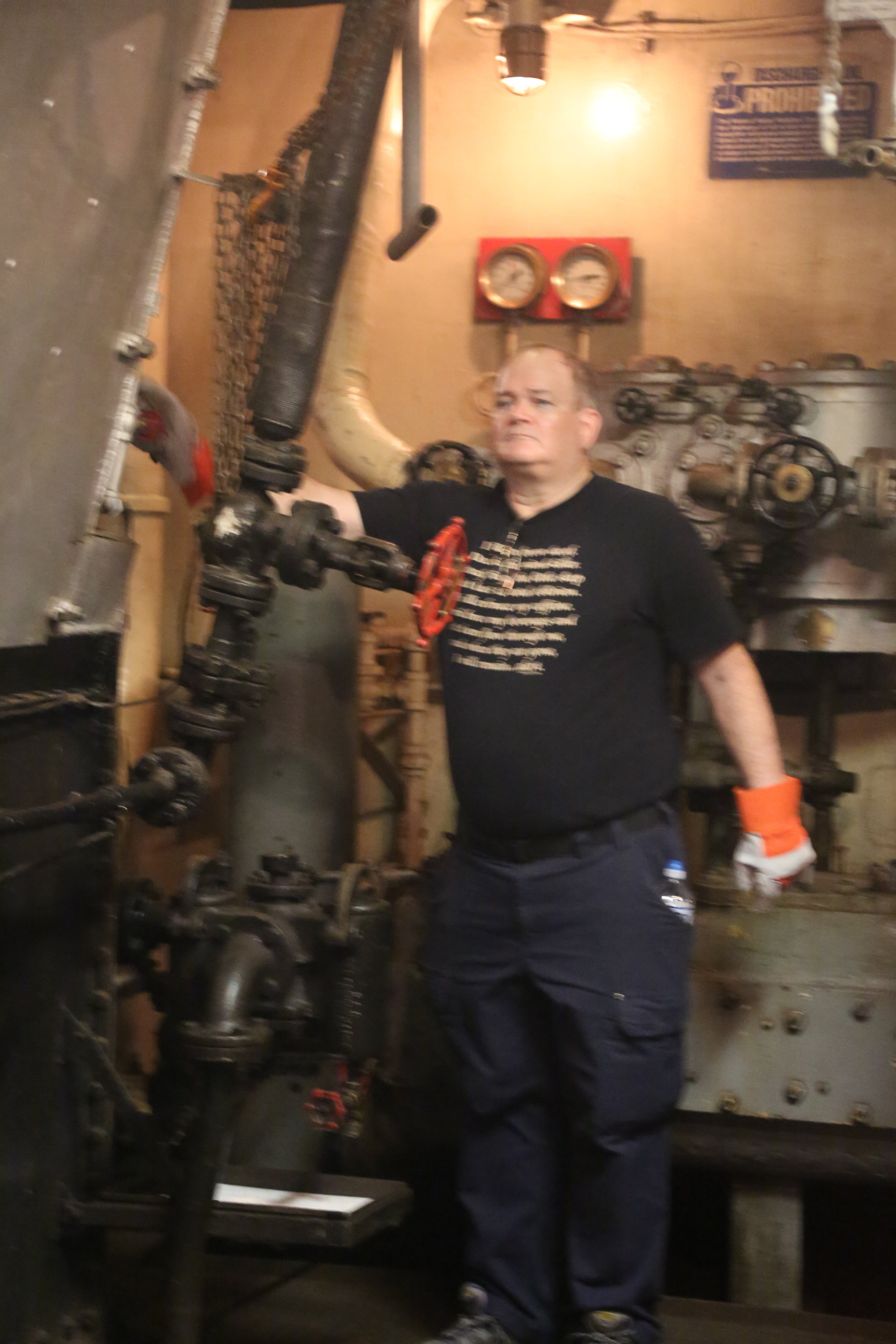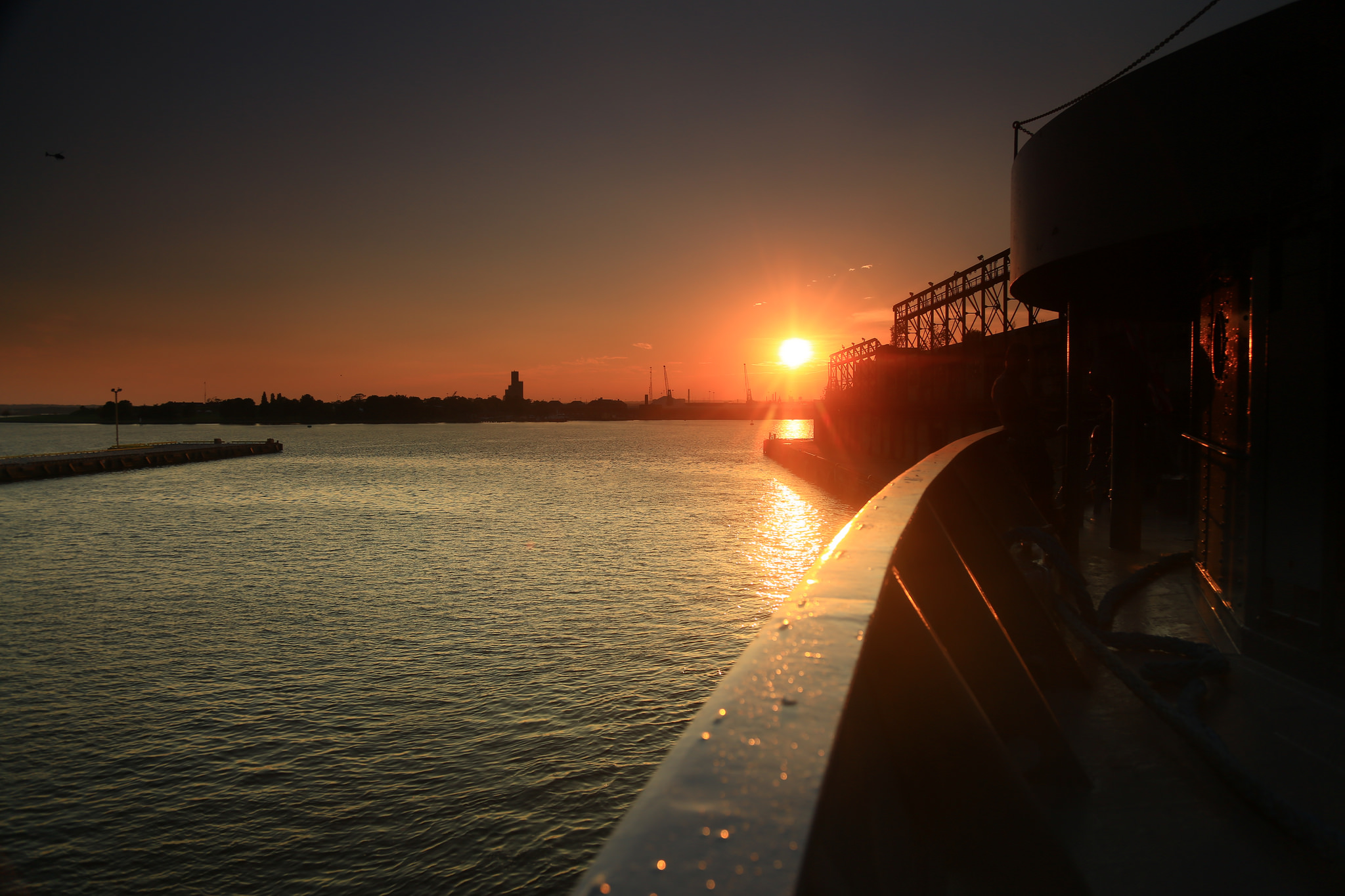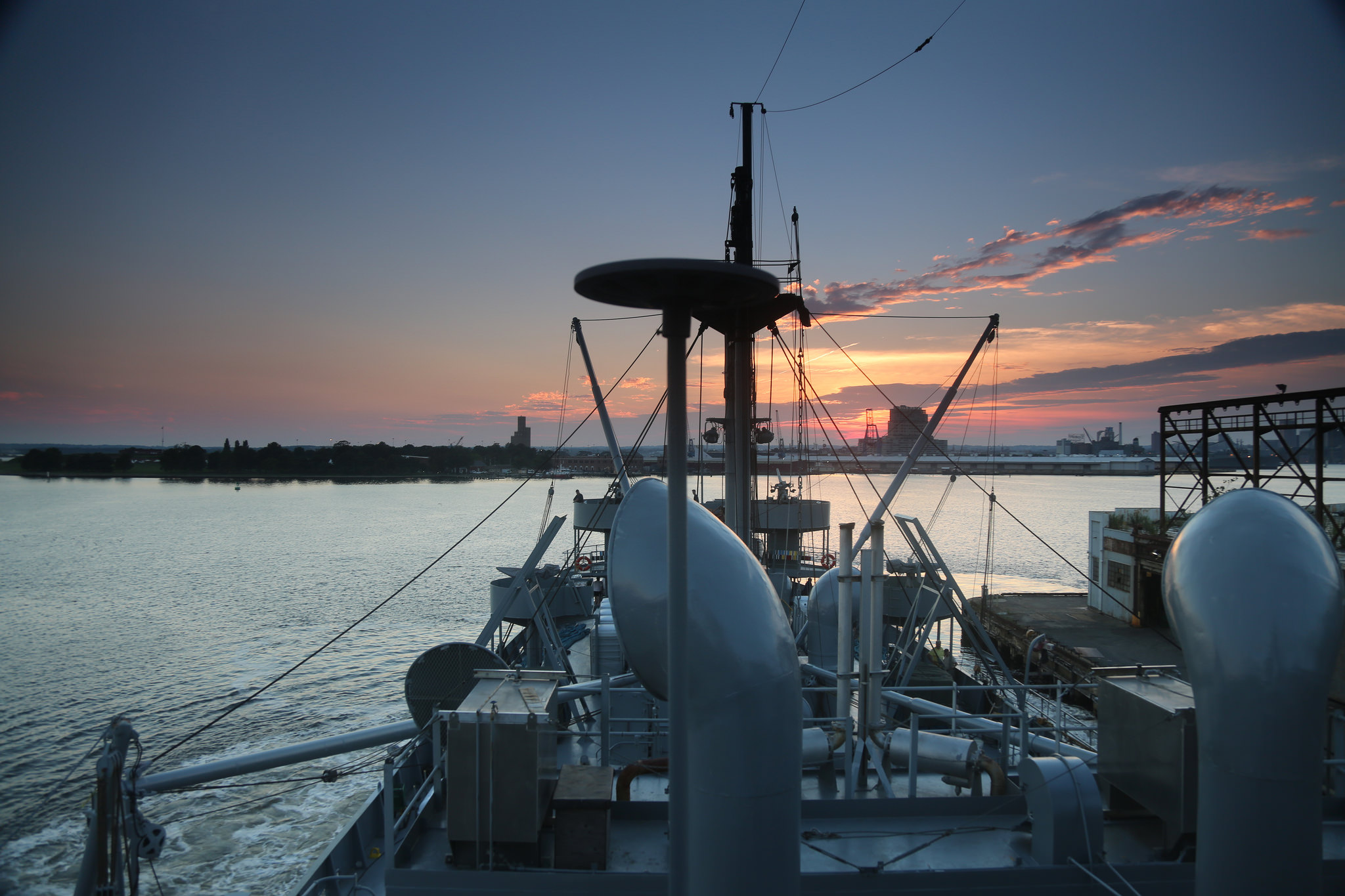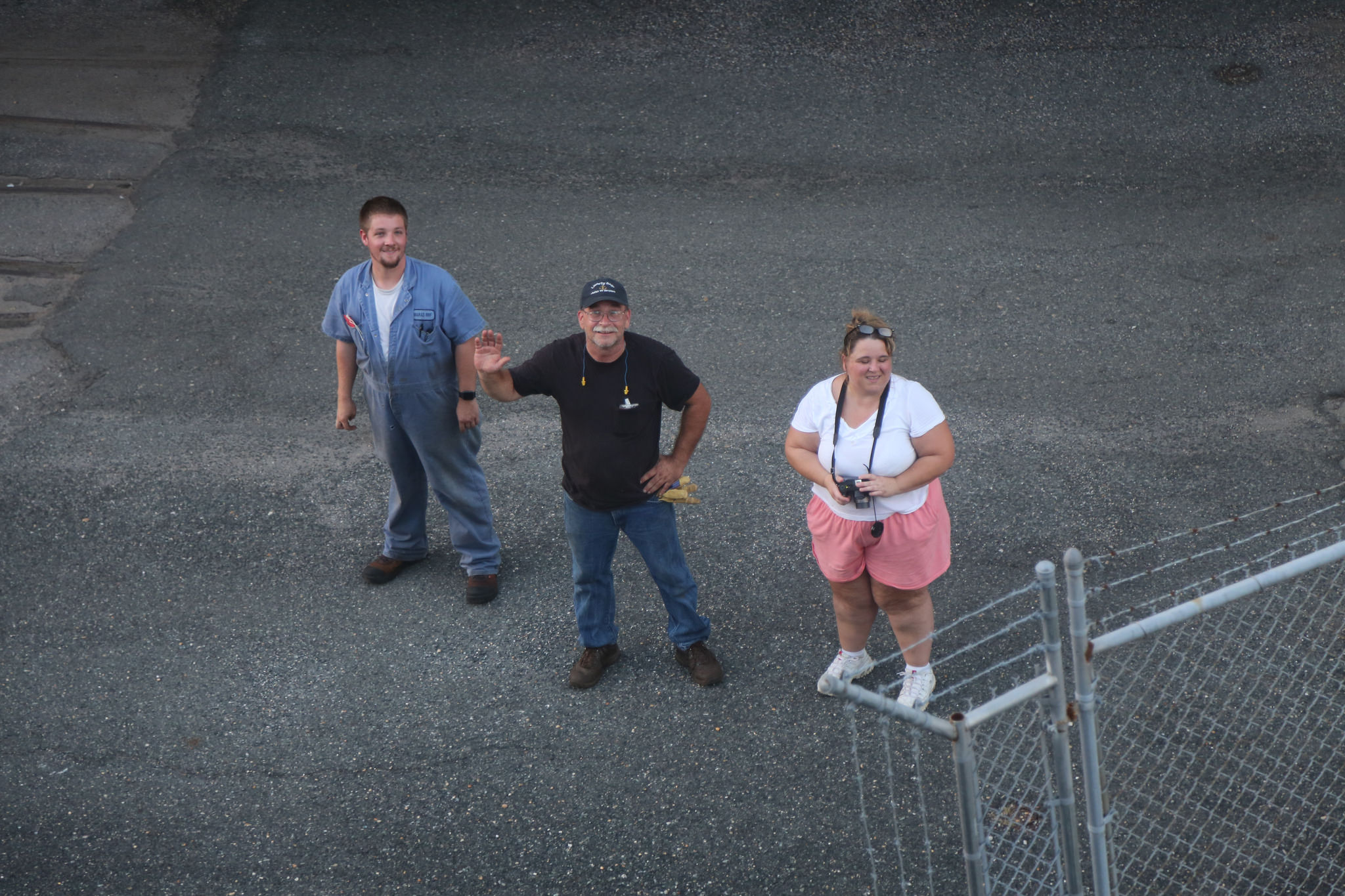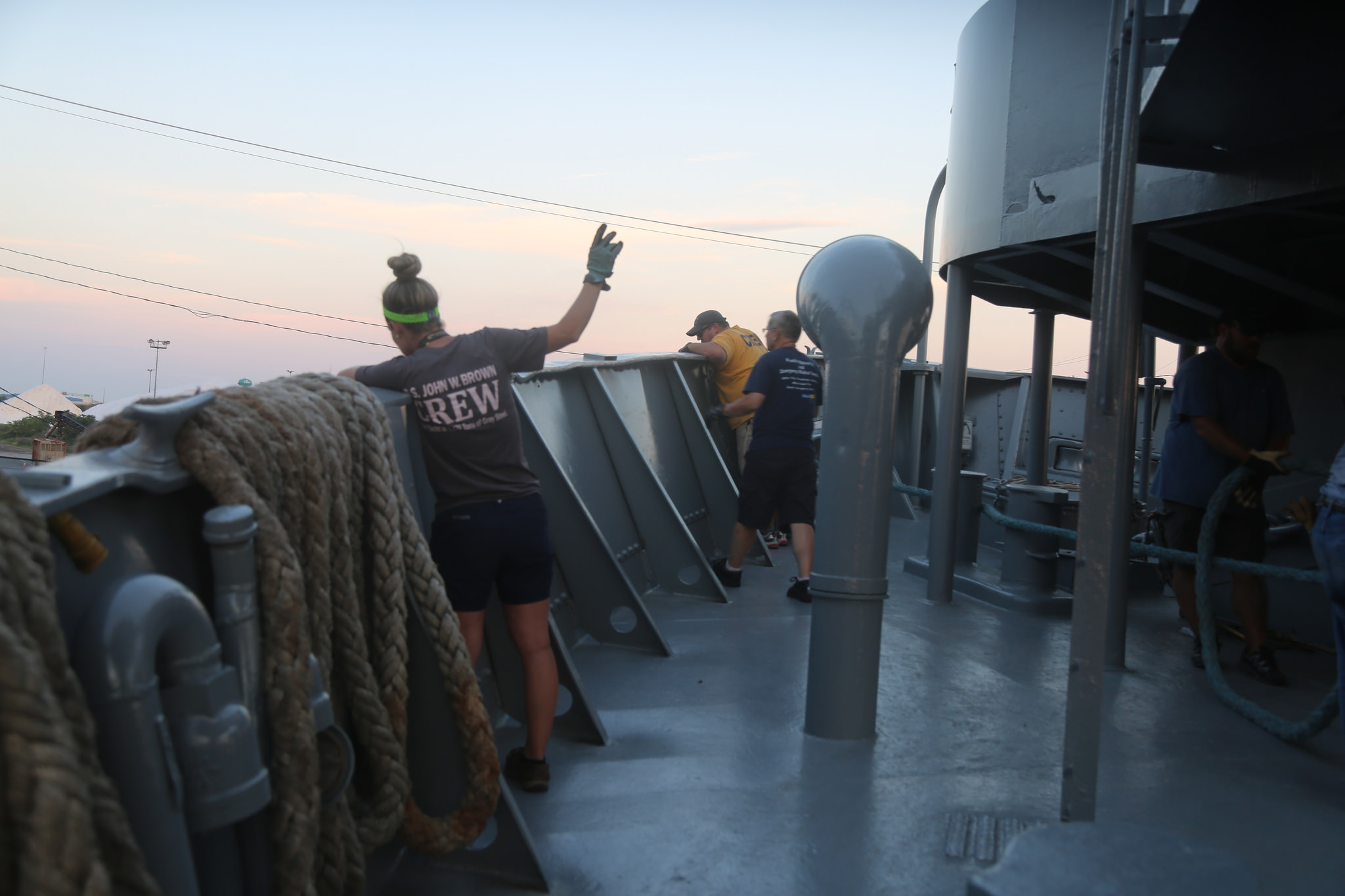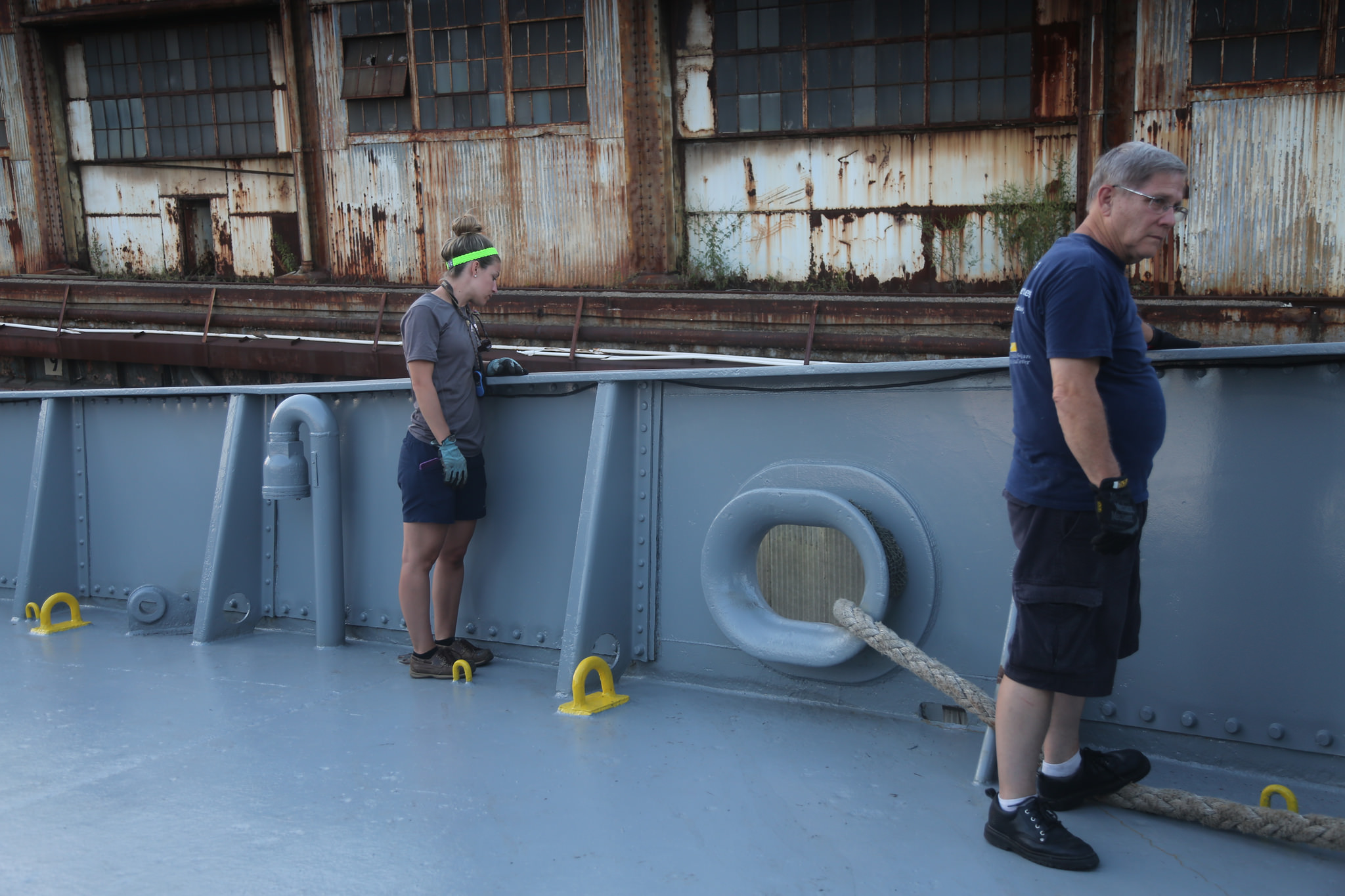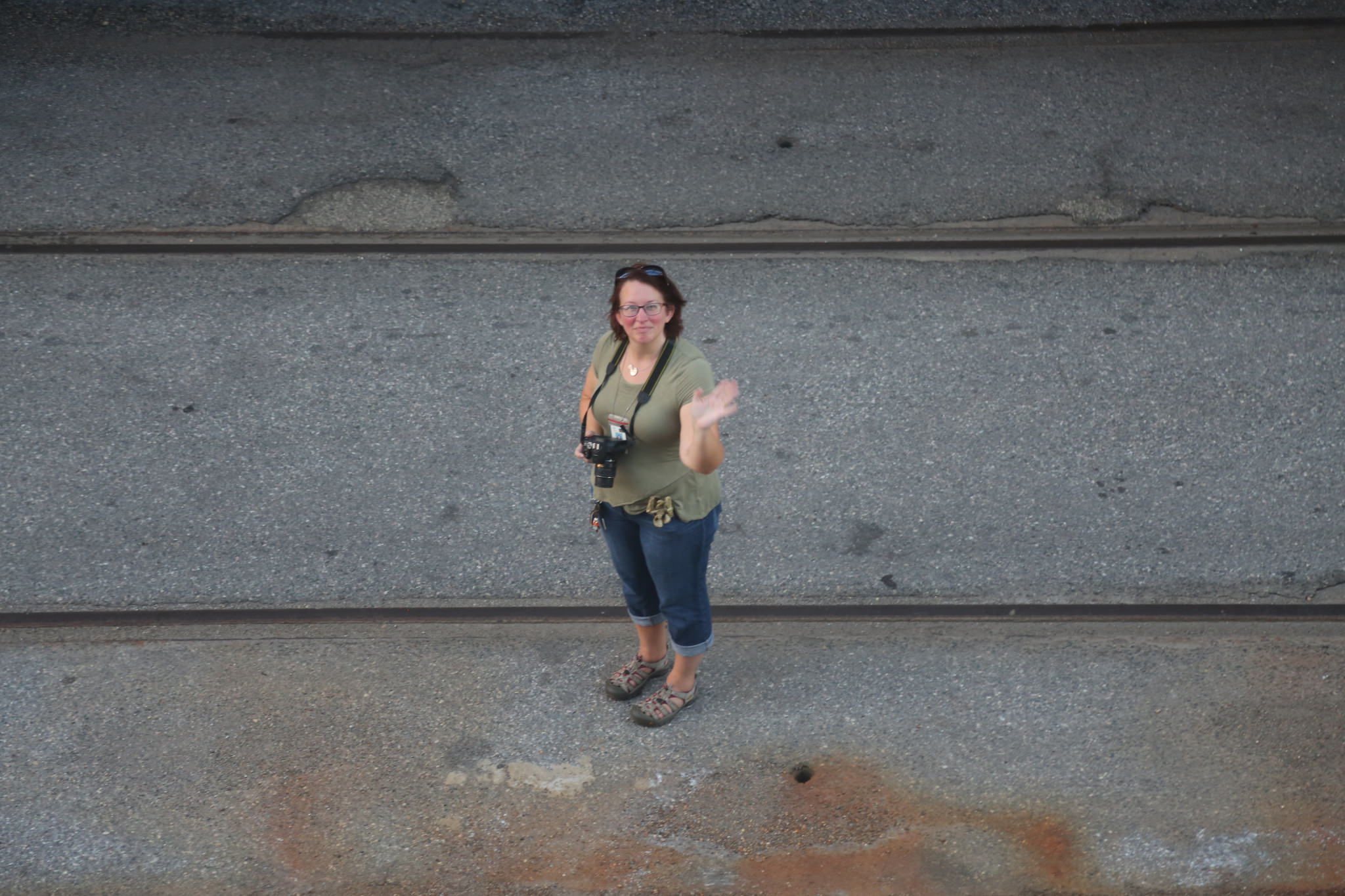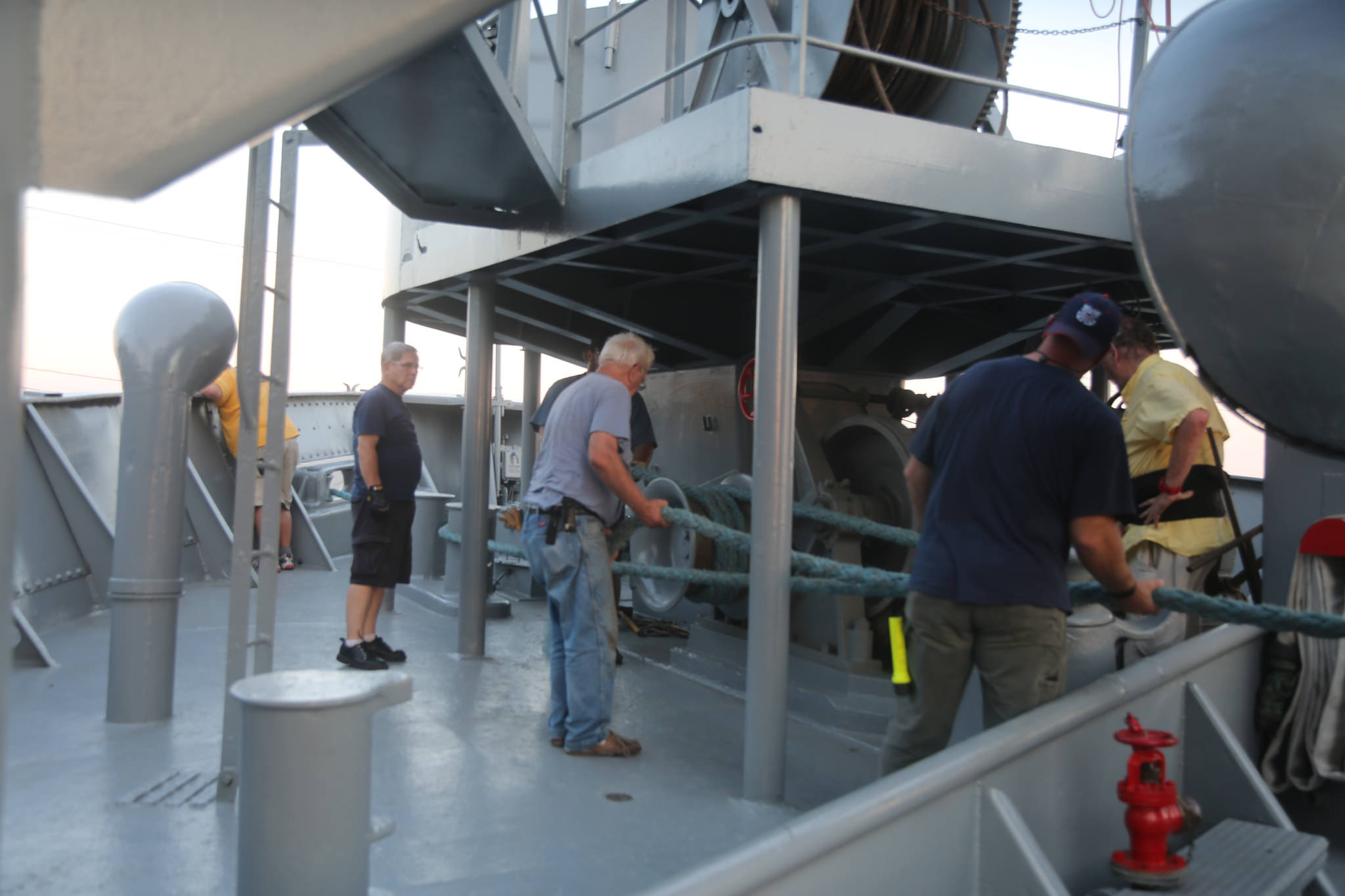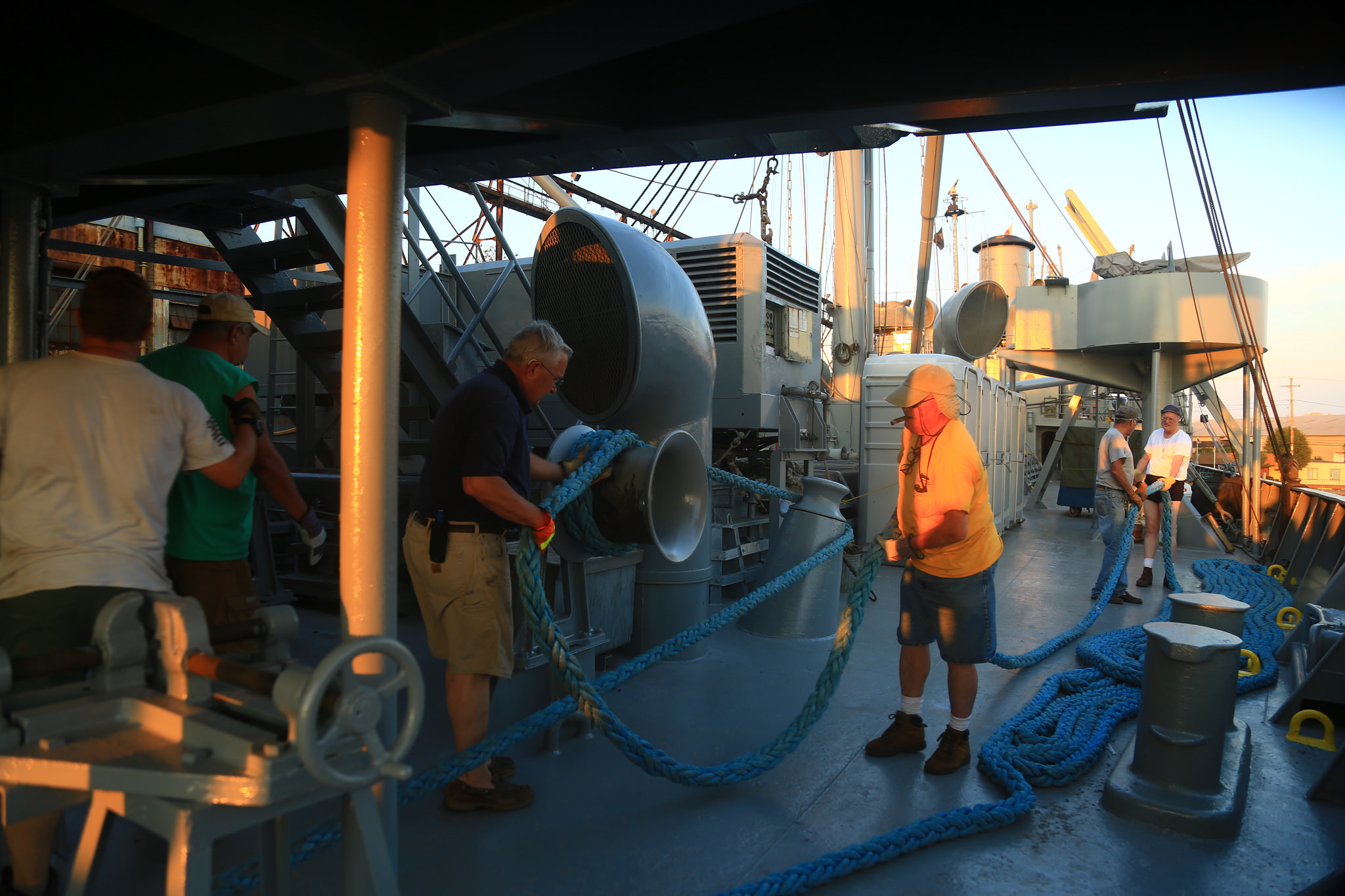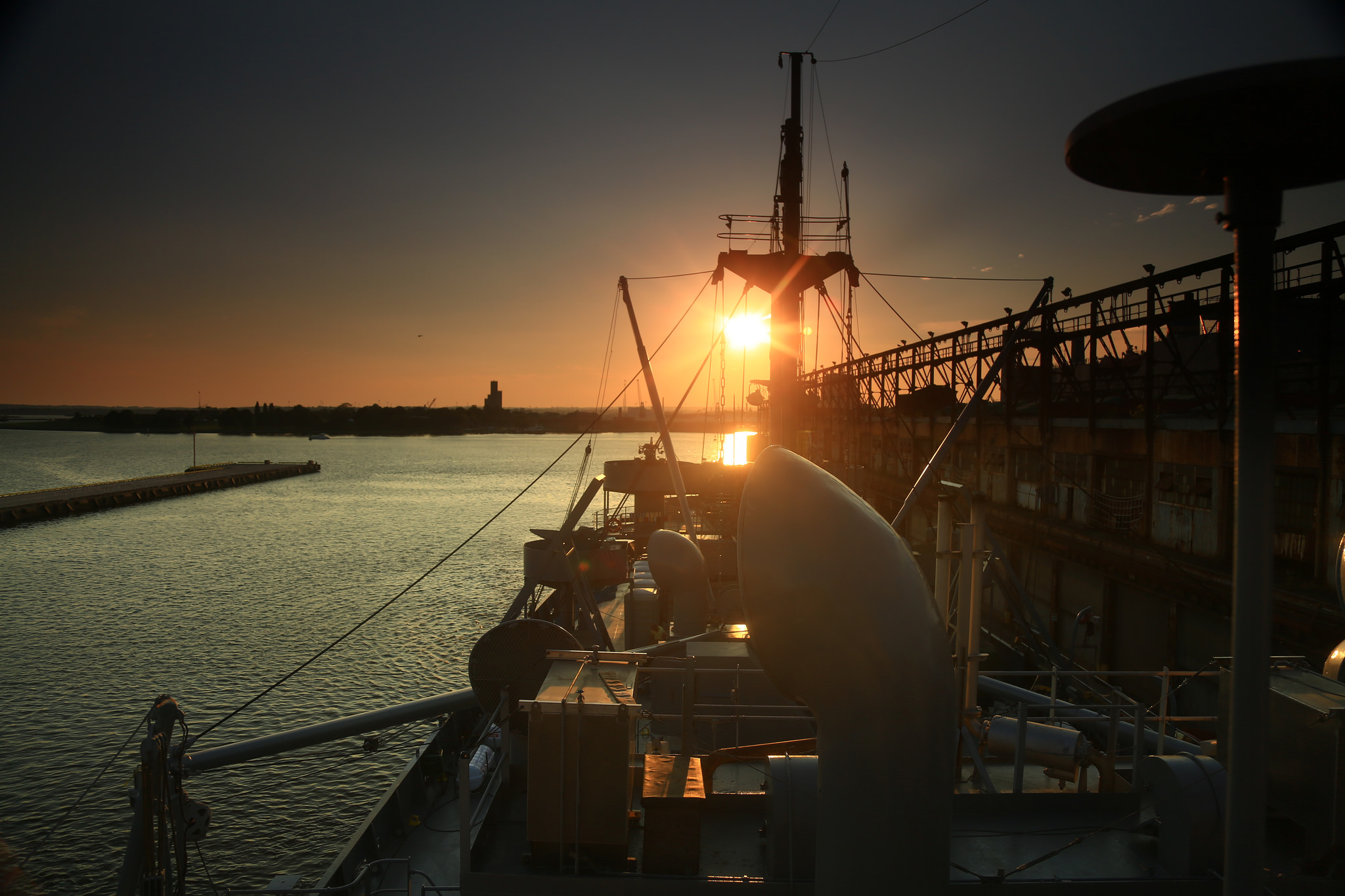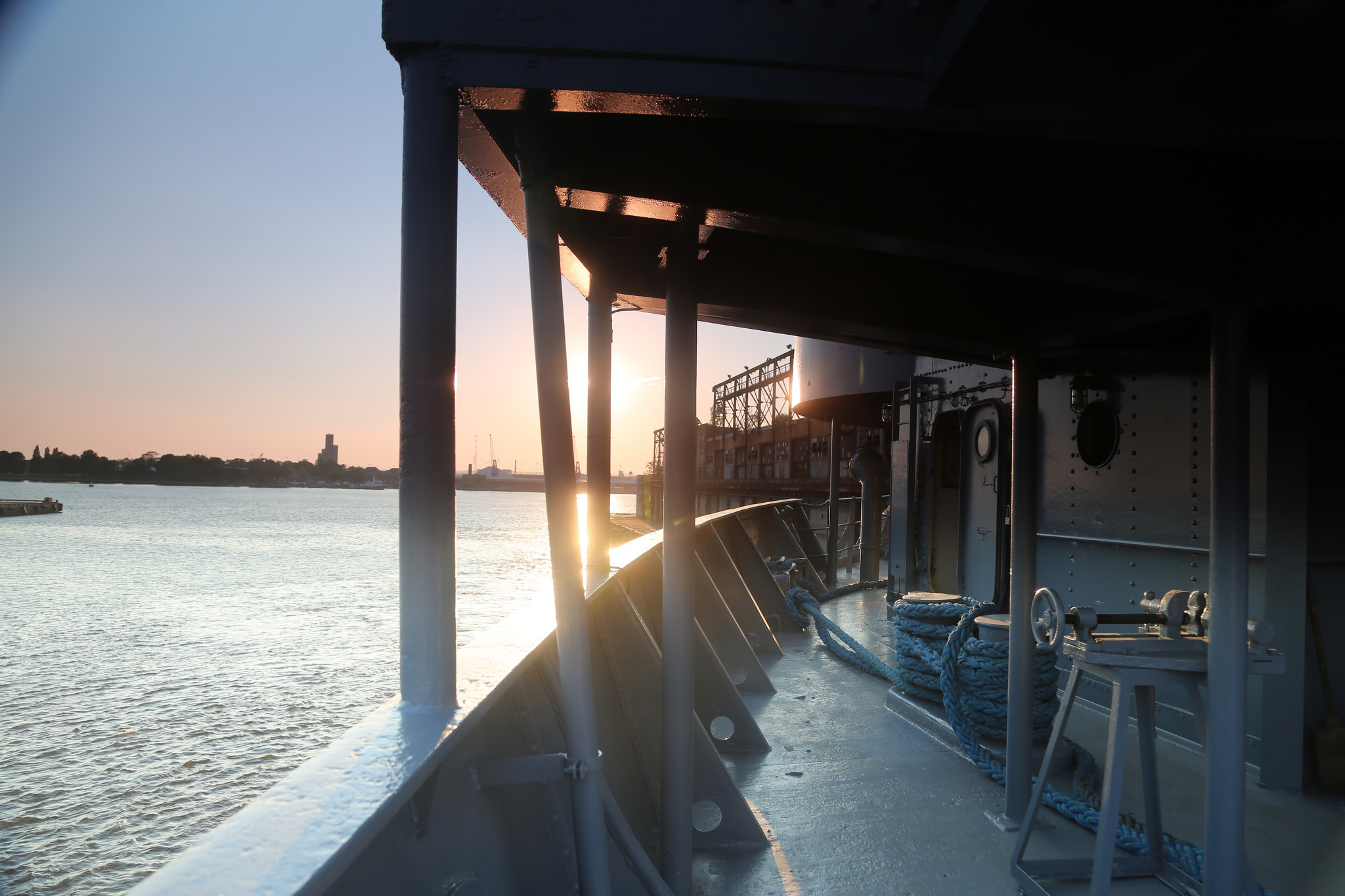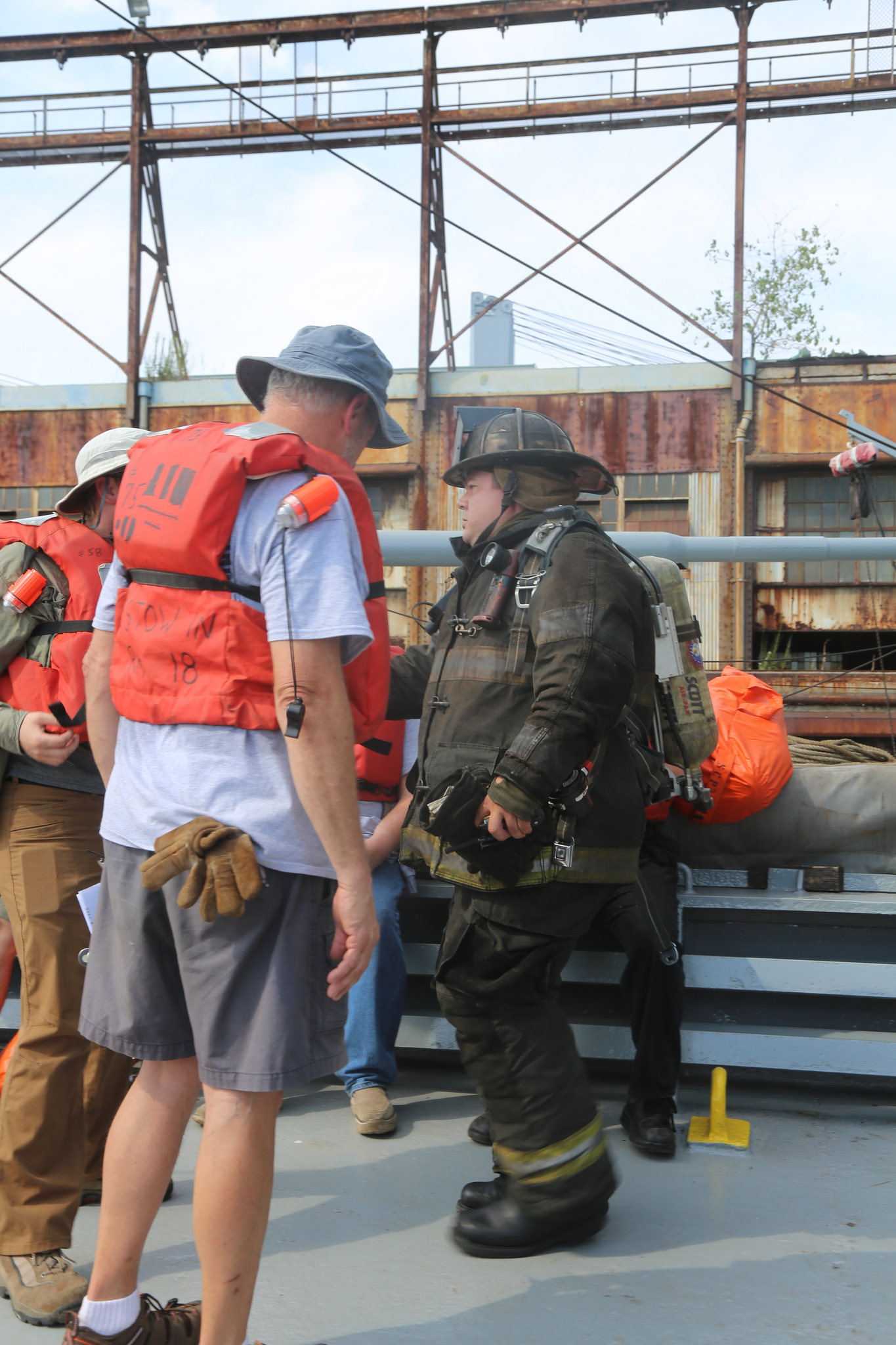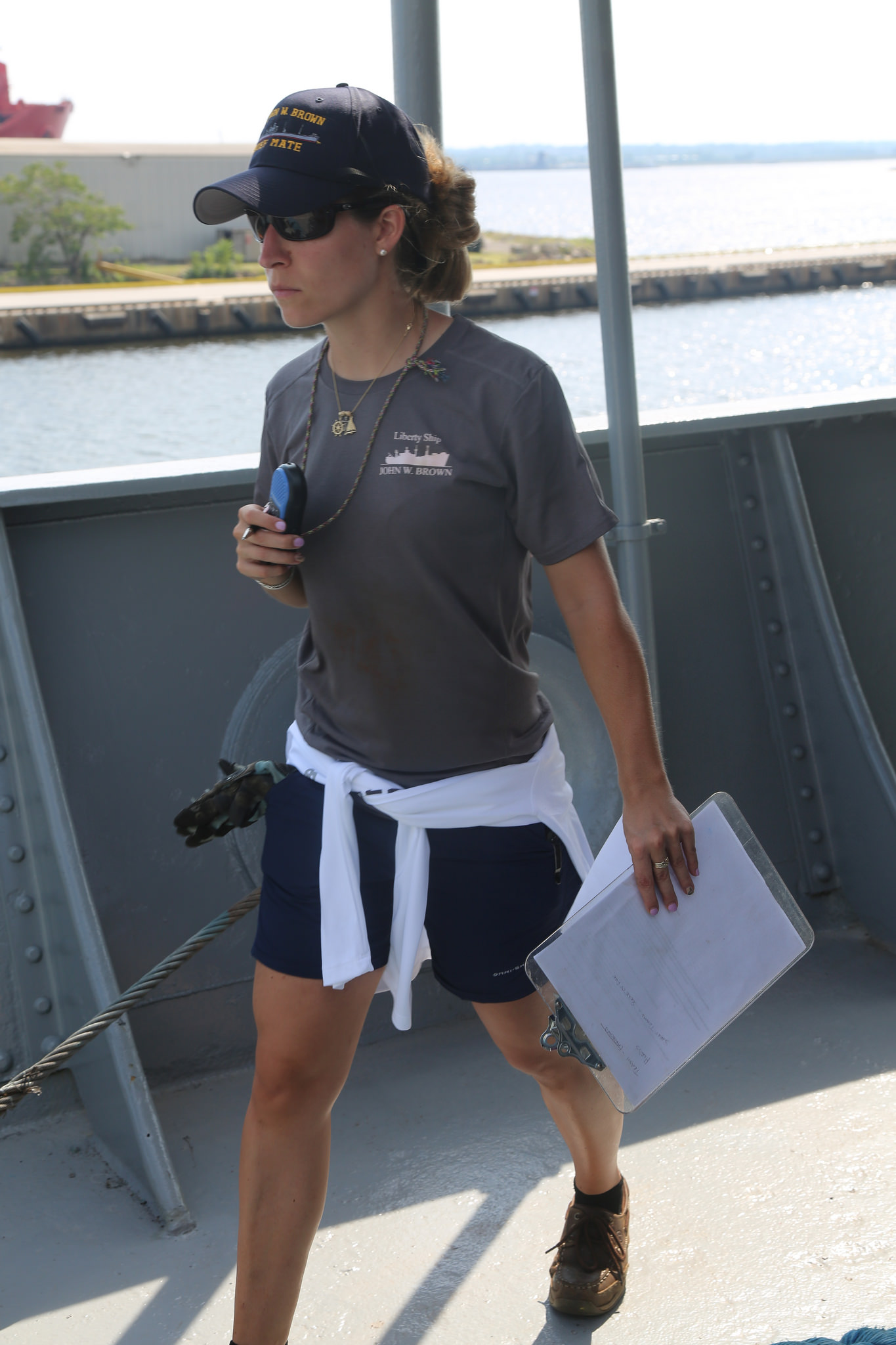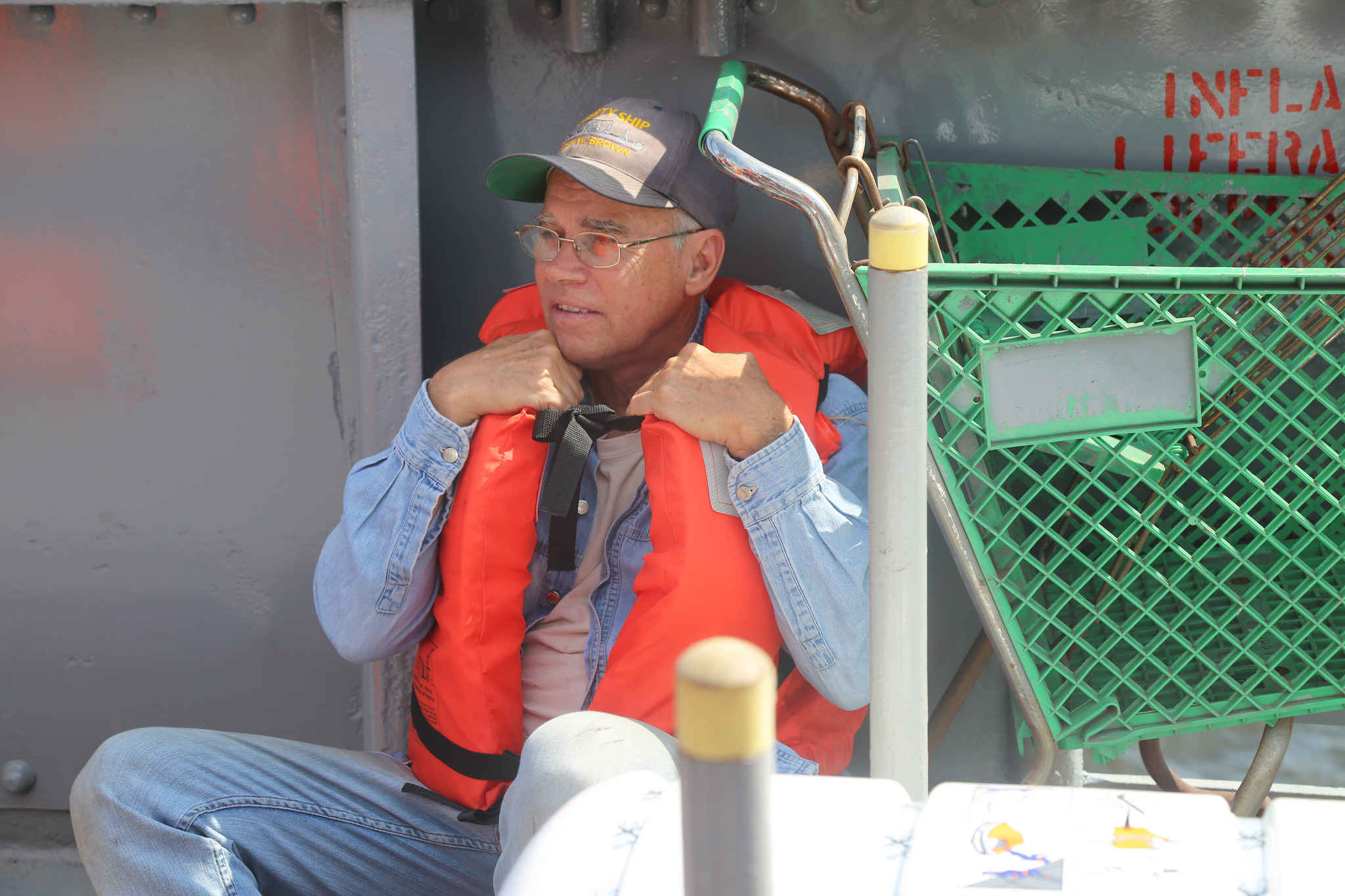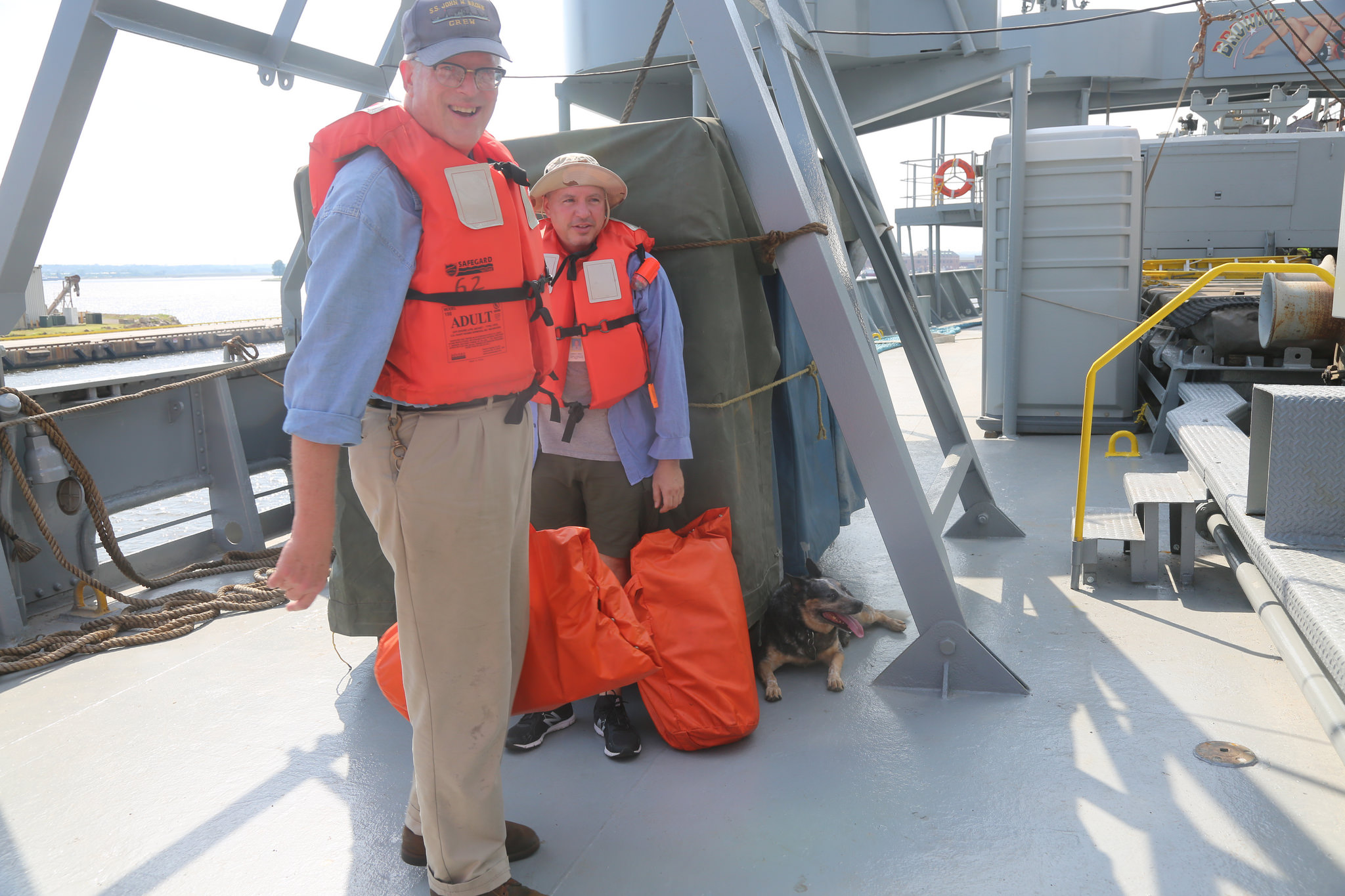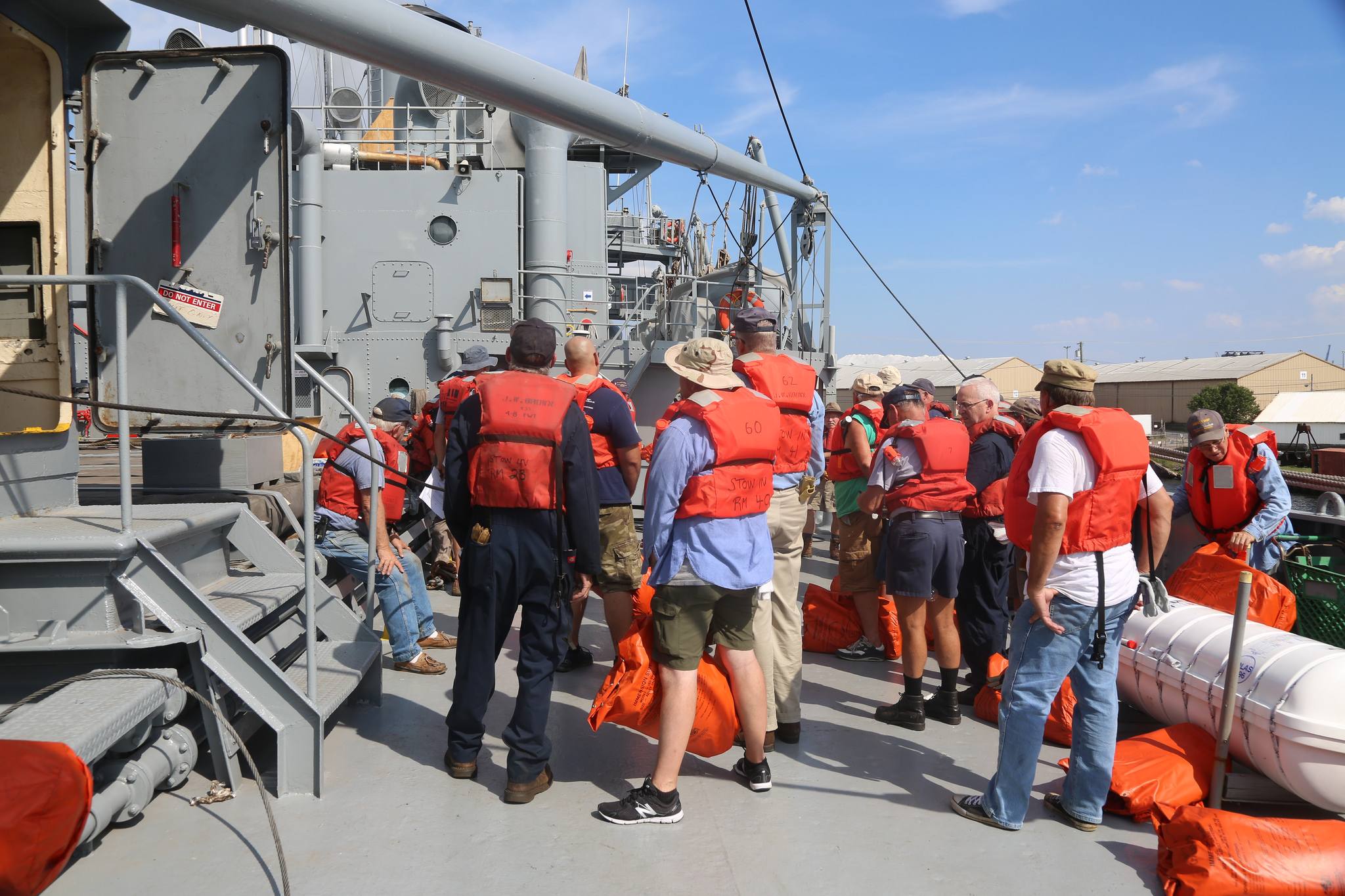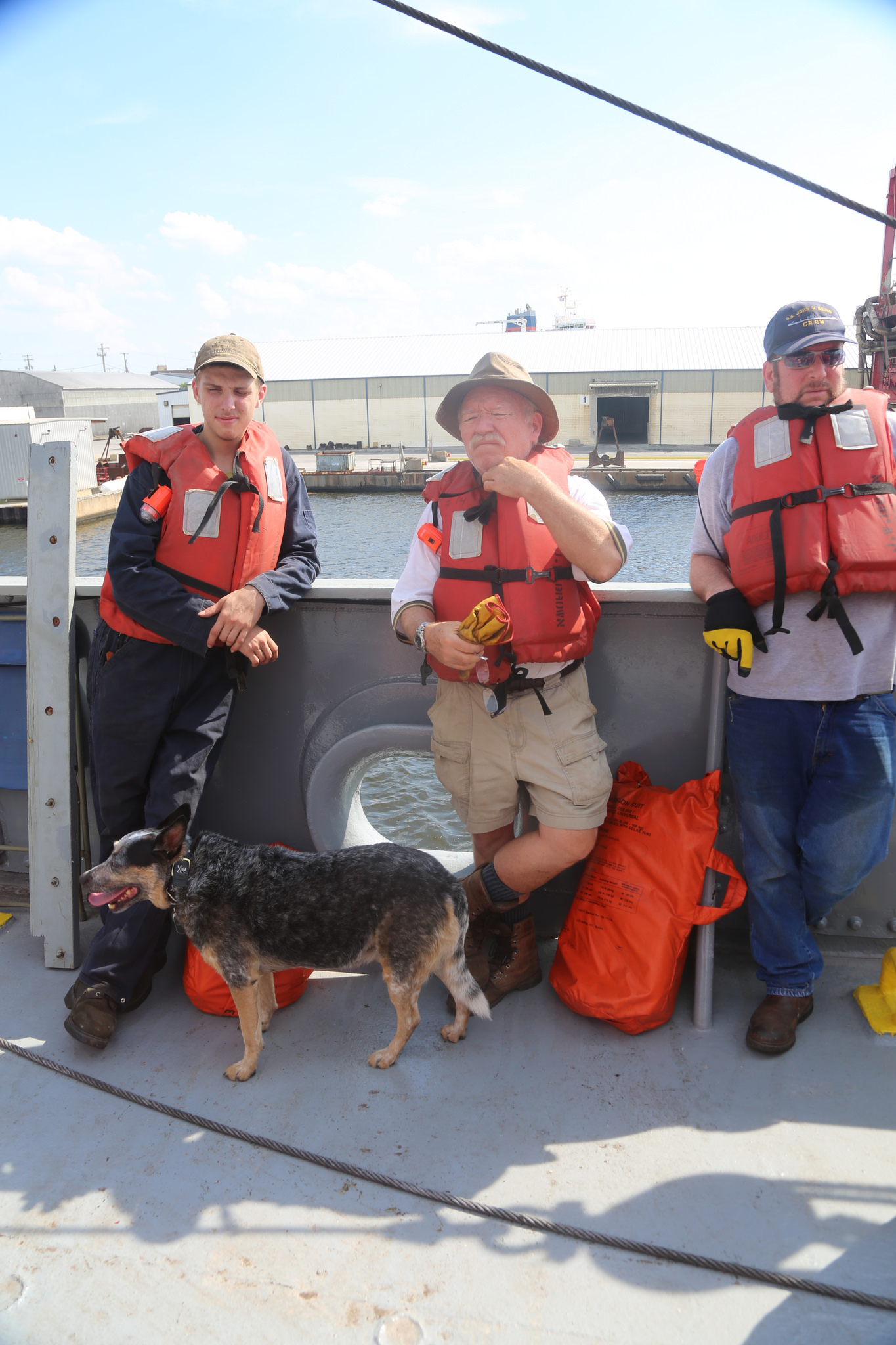Read this week’s blog on our popular and sold out second Steam School aboard the SS JOHN W BROWN
SS JOHN W BROWN updates
Less than two weeks ago we found out that the few remaining months that we thought we had left on our lease, were whittled down to 1 1/2 months. A board meeting was held and a ‘press release’ was drafted, edited and released. This is the story….
FOR IMMEDIATE RELEASE
The Liberty Ship S.S. JOHN W. BROWN, the only surviving troopship from World War II, faces an imminent deadline due to the expiration of its pier lease and may have to leave its homeport in Baltimore, Maryland.
The 440-foot gray ship, a familiar sight on the Canton waterfront and during its “living history” cruises on Chesapeake Bay, has conducted an unsuccessful search over the past several years for an alternate berth. Project Liberty Ship Inc., the organization comprised entirely of volunteers currently operating and maintaining the vessel, are now looking at the prospect of having to leave the ship’s present home at Pier C on Clinton Street by the end of the year.
For several years the ship was housed at a Clinton Street pier owned by the state of Maryland, but that pier was sold and the lease arrangement that enabled the Brown to stay at that pier expired. The new pier owners generously offered S.S. JOHN W. BROWN an alternate berth at Pier C on a temporary basis and have been cooperative and flexible with Project Liberty Ship’s uncertain and ever-developing future. However, the current lease agreement, despite several extensions, is expiring at the end of 2019.
Michael Barnes, a member of Project Liberty Ship who coordinated the pier search effort, reports that fewer than a dozen available commercial piers in Baltimore are large enough to accommodate the historic vessel. Many of these piers are already being leased to the federal government and most require security restrictions that hinder the educational and tourist activities the Brown frequently hosts onboard. The Project has considered buying a pier but found that available sites are in disrepair and would require lengthy—and costly—construction work. Given the expiration date of the current lease agreement and being a 501 (c) 3 non-profit organization, time and funding is very limited.
As a last resort, the board is considering moving to another port, which would take the Brown away from Baltimore’s maritime heritage, the birthplace of the vessel and the home-base of a majority of the volunteers onboard. The 77-year-old ship, named after a maritime labor leader, was launched at Bethlehem Steel’s Fairfield Shipyard in Baltimore on Labor Day in 1942. It is listed in the National Register of Historic Places, which designates buildings, districts, sites, structures and objects worthy of preservation in America.
Since being restored by volunteers in 1991, the museum ship has sailed more than 25,000 miles and visited 29 ports in the United States and Canada. In recent years, the ship has expanded its community outreach from hosting cruises featuring 1940s-era entertainment and fly-bys from vintage aircraft, to acting as a classroom and fully operational training facility for the Maryland Port Authority, U.S. Navy Sea Cadets, high school-age STEM students, local police, fire, emergency responders, the Baltimore-based Maritime Institute of Technology and Graduate Studies (MITAGS-PMI), the Marine Engineers’ Beneficial Association (MEBA) and others. S.S. JOHN W. BROWN has long been recognized as a positive piece of Baltimore’s strong maritime history and has attracted tourists to the area from as far away as England and New Zealand.
The primary mission of Project Liberty Ship is to educate people of all ages about the vital role of the wartime American Merchant Marine, Naval Armed Guard and shipbuilders, three largely unheralded groups that were instrumental in the Allied victory in World War II, as well as to world-wide sealift operations during all past and current conflicts by presenting living history aboard an authentically restored Liberty Ship. The aim of the organization is to honor the legacy of all American veterans.
The Brown completed 13 voyages carrying troops and cargo during and after World War II. She then served as a maritime trades high school in New York City for 36 years. S.S. JOHN W. BROWN returned to Baltimore in 1988, where she was restored to her 1944 state by Project Liberty Ship volunteers. Out of a total of 2,710 Liberty Ships built during World War II, S.S. JOHN W. BROWN and one other, the San Francisco-based S.S. JEREMIAH O’BRIEN, are left sailing today.
Ok, relax… take a breathe and settle down for a minute and watch a slide show…. This is what is important. Let’s keep that in mind. This living museum, here in Baltimore…that is what is important.
Ok, so have the volunteers of Project Liberty Ship, who donate thousands of hours on the BROWN ever just accepted the inevitable? Have they ever thought that things were hopeless? Have they ever thought that the ship was not important enough to do more work? The answer is no. We cinched in our pants, put on our work gloves, took a deep breath and started to attack the problem head on. Board members came up with a series of things that needed to be done and people to contact.
A constant contact email was sent out, info was posted on social media, and the press release was sent to government officials, news stations, and The Sun.
Then the media came…. first there was WMAR (click to see their story). Then came WBFF Fox Baltimore and WBAL TV 11. Then the Baltimore Sun created their article… all very nicely done, we might add! Then WJZ 13 CBS Baltimore came out with their version (pssst… Captain Basciano thinks she did her best in this particular interview. ‘Practice makes perfect!’) But they are all awesome and created a frantic 3 days of people needing to be at the ship to greet journalists.
Somewhere on one of the social media posts, a reader said ‘try a petition’. A volunteer created a petition on Change.org that generates emails to designated people (Mayor Jack Young, City Hall, and Governor Hogan). As of this writing (8pm 11/12/19) there are 1,361 signatures (in about 36 hours). If you have not seen the petition, please check it out https://chn.ge/2X7XLOh It may seem ‘pie in the sky’ but politicians will get involved when their constituents are inspired by something. The goal is to show them that Baltimore city, the state of Maryland and the people around the country and world who travel to see the SS JOHN W BROWN matter. Their love of this ship, their desire to keep it in the state of Maryland where it was built over 76 years ago, MATTERS. If each of us were to ask 10 people we know and love to go online and sign the petition, we will have so many supporters that politicians would hear our collective voice.
What we need right now is to get contacts. Many of the ideas from people (NY, Norfolk, Cambridge) are great but what we need are contacts of people that can make it happen. If you happen to know someone who has pull (politicians, businesses, and owners of land with deep water ports) please help us by advocating and sending us contact info.
Just one more point to understand. The chip-in part of the petition is not necessary. We think that is why we got so many signatures in just 2 days (because so many people donated to the petition, which boosts views) but if you want to donate to Project Liberty Ship/SS JOHN W BROWN, please do so through the donate button found on the front page of our website. This ensures that all money goes directly to the ship. While we love that so many people boosted (chipped in) our petition, we’d prefer that people share or ask others to sign it, as the signatures and attention is what we are after. We hope that clears things up!
Keep supporting us. We thank you all for everything. Help us keep our history alive.
JOHN W BROWN Inaugural Steam School
The John W. Brown hosted its’ first Steam School on May 3-5, 2019. Organized by the engine department, 14 guests (and now members) were aboard for seminar’s on various aspect of the ship, and its’ machinery plant. This was followed by hands-on operation of the machinery, lighting off the engineering plant, raising steam, and operating the main engine and deck cargo winches on steam. The guests were provided accommodations and meals by the Stewards’ Department during their stay.
So what is the inside story?
It all started one workday (isn’t that how every great sea story goes?!?) in October 2018, at lunch in the mess, when crew member Greg was reading a magazine which had a listing of Steam Schools offered by various organizations, most of which were focused on antique farm and industrial equipment. Greg thought that the ship could do something similar, but he hesitated, because he knew if he presented an idea, he would own it and be charged with moving the idea forward.
After some deliberation Greg went for it anyway and he threw the idea out to fellow engineering department members and conversation ensued. Everybody jumped on the idea, and started brainstorming how the ship could host a steam school. We have a really big steam engine, don’t we? He ran the idea by the Chief Engineer, Joe Cadden, who agreed with the concept, and added “let’s put steam on deck.” Normally we use air on deck and we had not put steam on deck in years.
More lunchtime conversations followed. How many guests, how long, when, accommodations, what topics, how much classroom time, who would instruct, and other ideas. Finally, Greg prepared a concept proposal, outlining the proposed Steam School, and the proposal was presented to the Board of Directors by Joe Sargente in October 2018. It was quickly approved, with only one comment- “Why didn’t we think of this earlier?” Now that the concept was created and approved by the Board of Directors, it was time to market the concept. Was there a market for steam school?
After a few trials, Dick Sterne developed a flyer, and it was approved by our PLS President in early November 2018. We were anxious to see if we could sell our concept. One engineering team member spilled the flyer onto the internet… and the ship’s phone started ringing…
When the ticket sales went live in late December 2018, the minimum class size was sold in one weekend. In three weeks, the class was sold out at 14 guests. We never got a chance to market the school. The ship’s phone continued to ring. Quickly, a waiting list was developed. Whoa! It seems we had something here. There was a market for steam school!
An agenda was developed and volunteers from the engineering department were solicited, roles identified, and roles assigned. Lead instructors, assistant instructors, licensed/credentialed watchstanders, and supporting staff were all needed. Greg became the self-appointed director (and chief delegator).
The guests would be staying aboard the ship. It quickly became evident that the Steward’s Department was crucial to the success of the Steam School. Commitment from the Steward’s Department was obtained, and Mike Schneider agreed to be in charge of the guest accommodations.
In the final two weeks, the guest binders were printed and available. Cleaning needed to be done because the members wanted to make sure that a good impression was made. This involved…Cleaning the rooms. Cleaning the heads. Cleaning the engine room. Cleaning the saloon. More cleaning. Greg made the pitch that the ship was in the hospitality business now. Much to his amazement, nobody laughed at the idea (at least not openly) and by the time guests arrived, mints had been placed on the guest’s pillows.
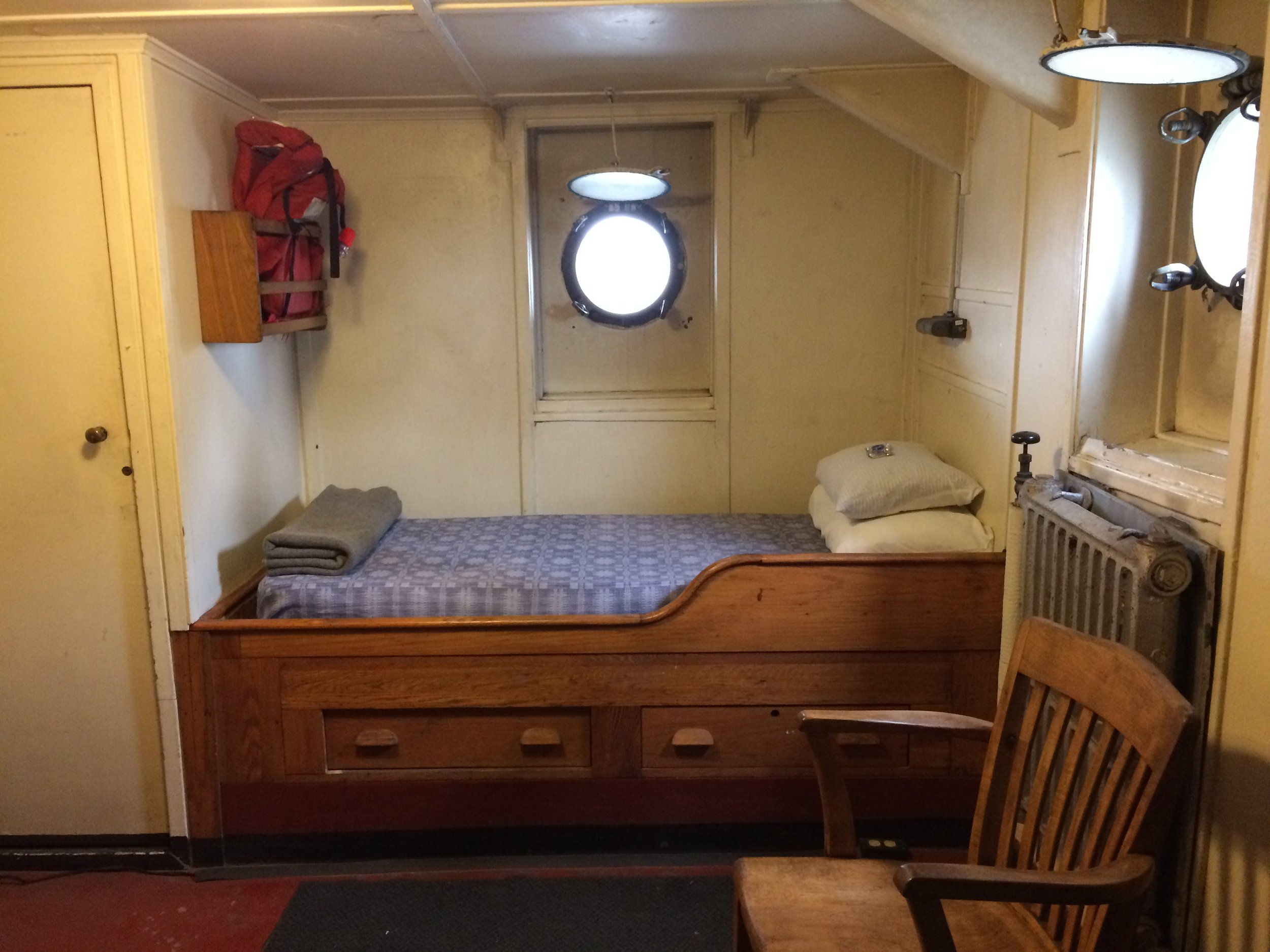

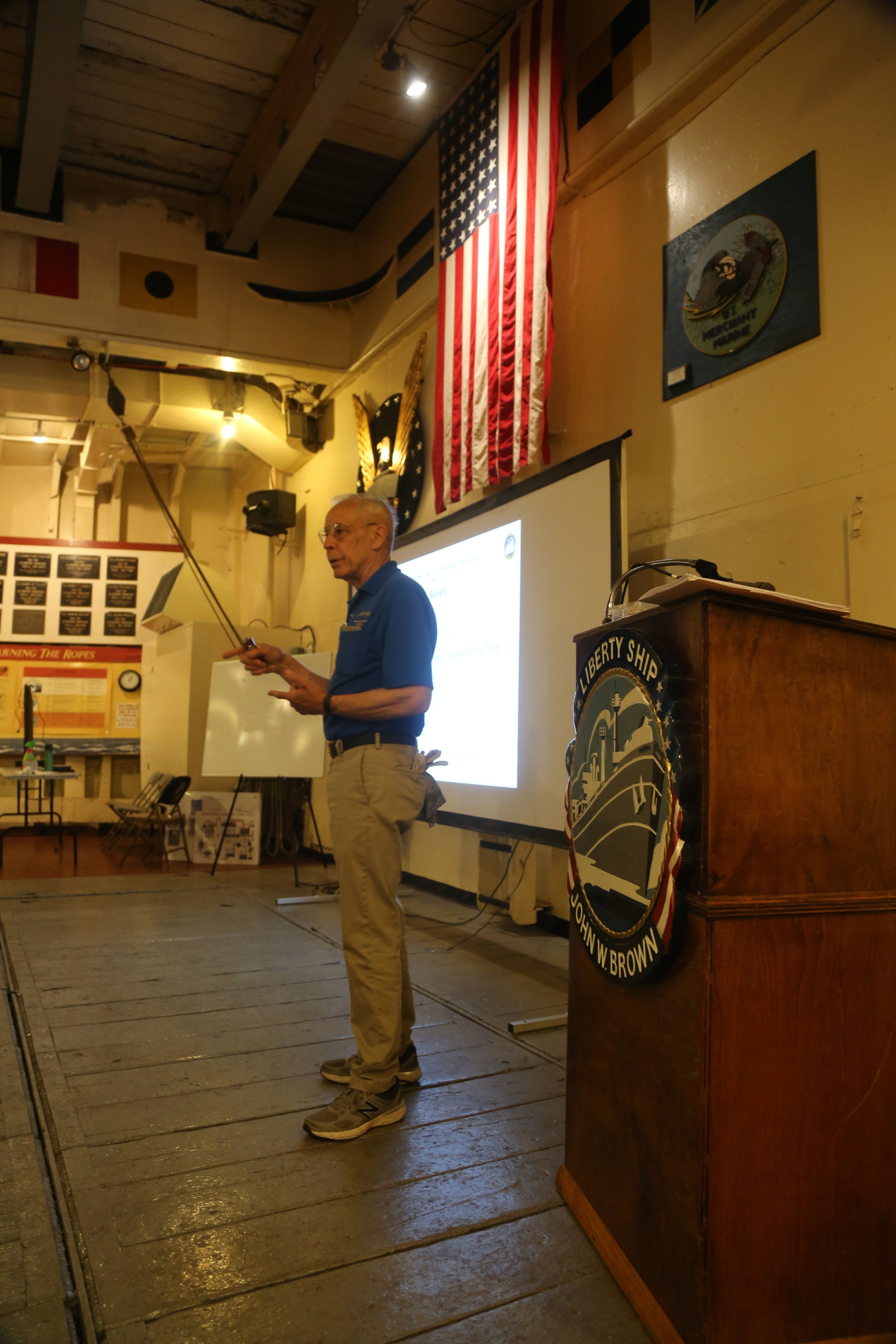

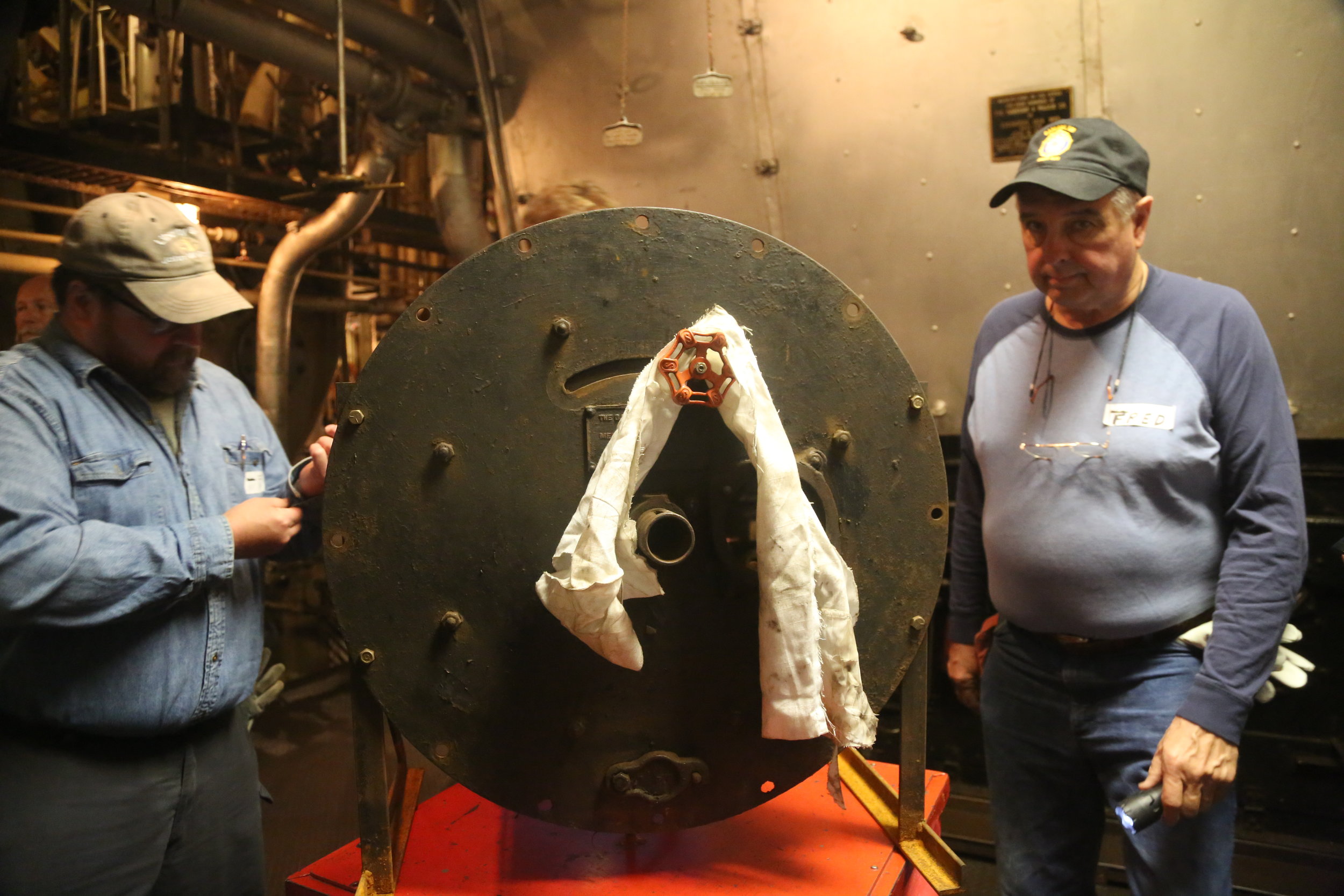
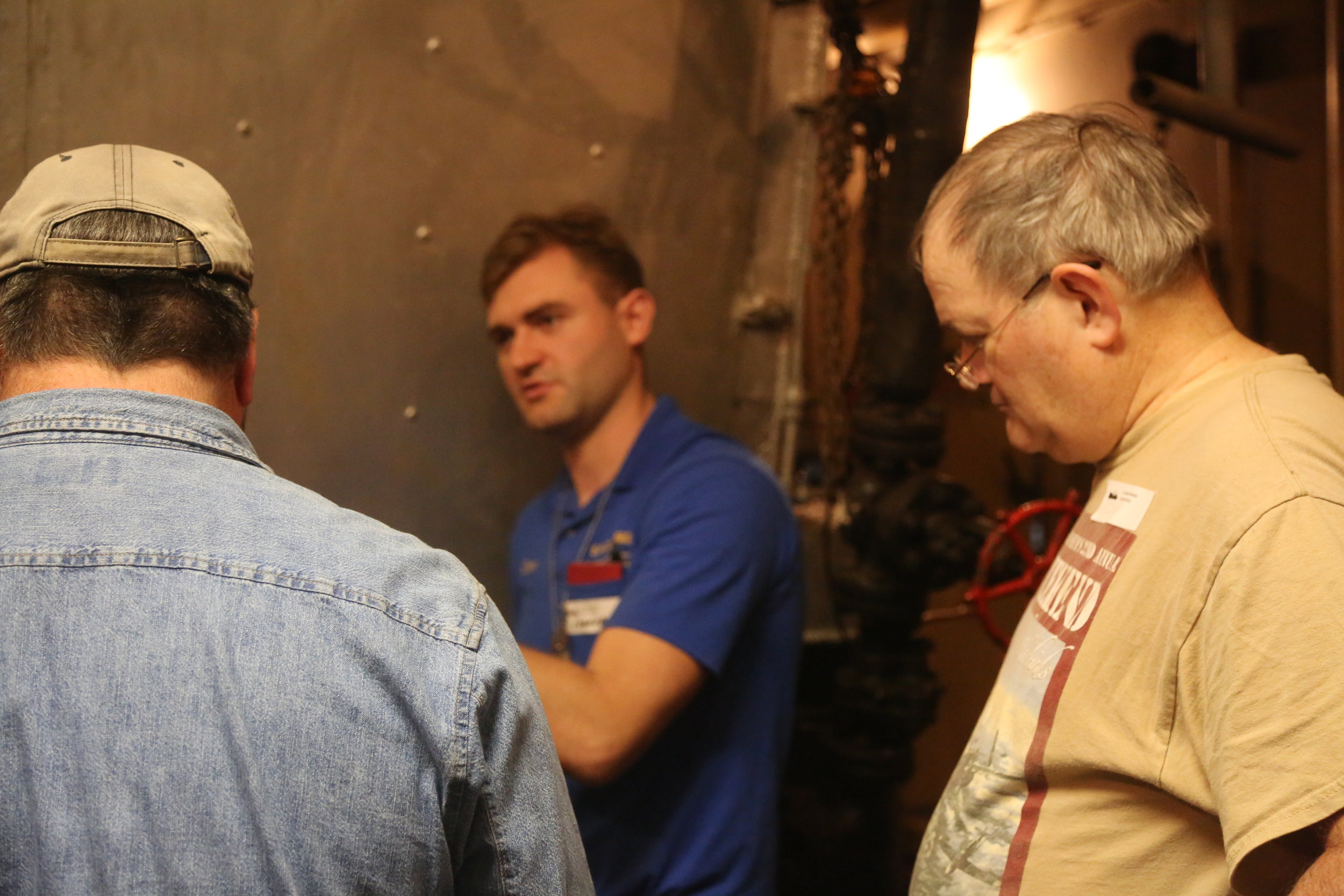
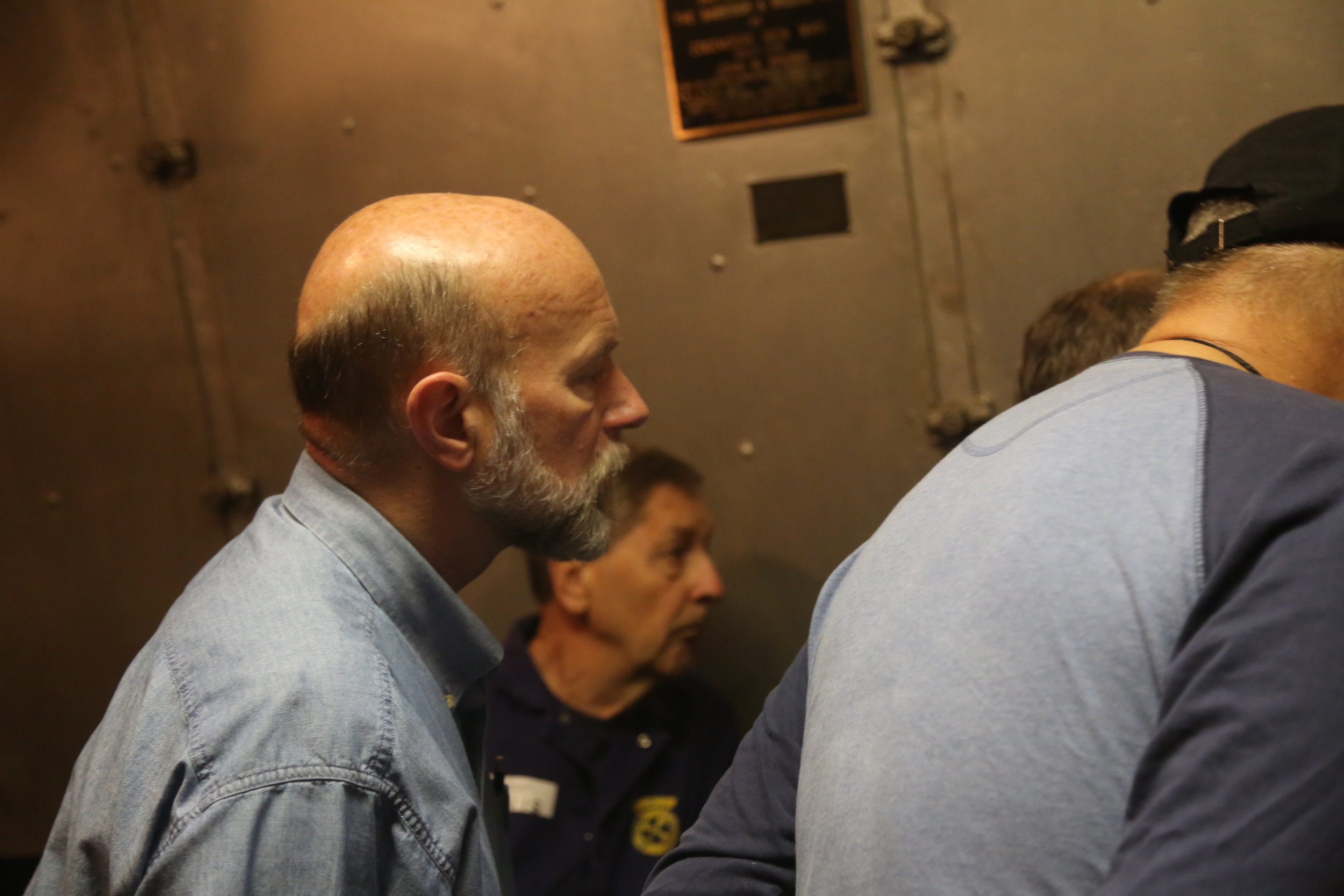

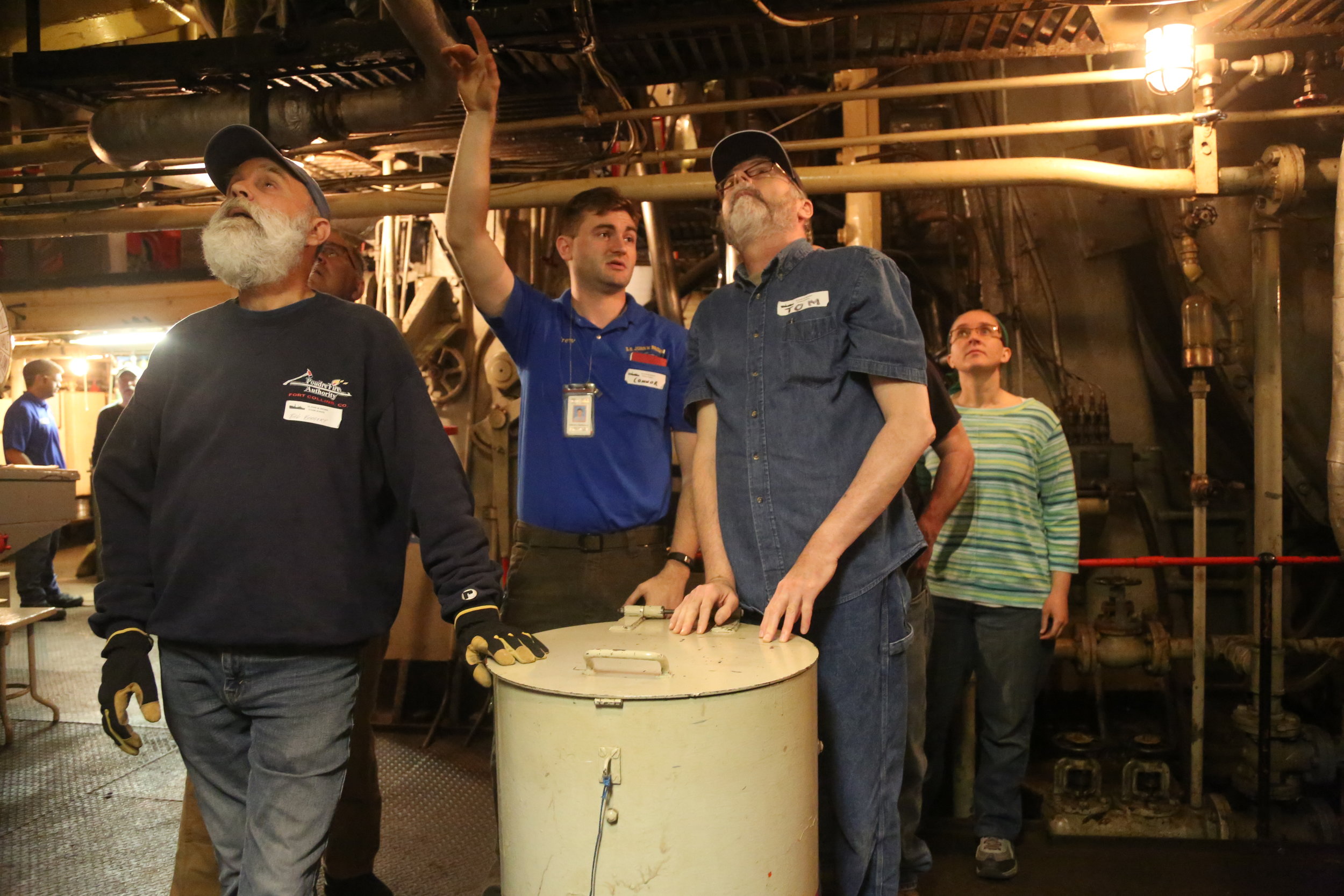
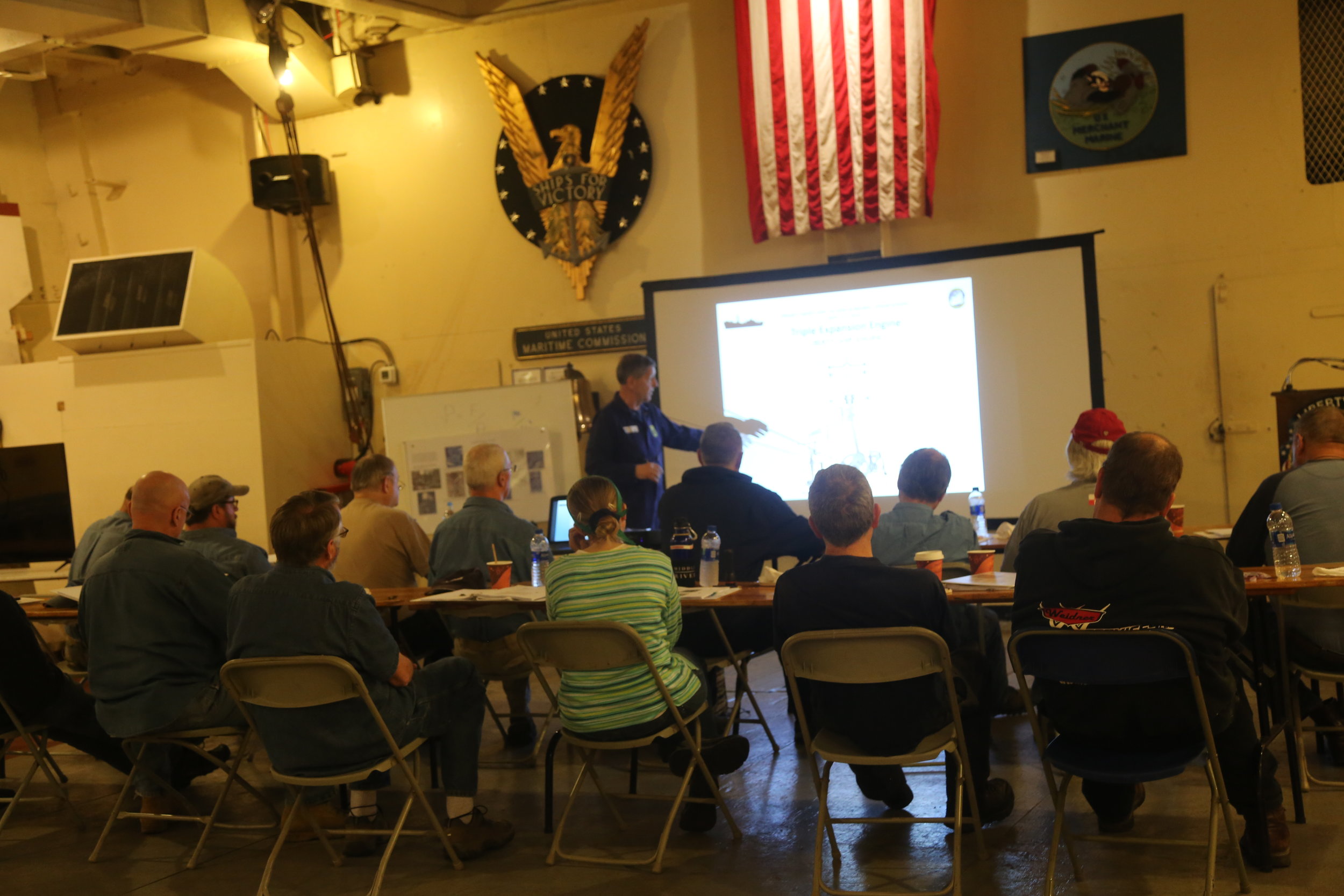


On May 3rd our crew members assembled to greet the guests and welcome them aboard. Students were checked in and shown to their room. Each guest was presented with a binder (with copies of all slides and handouts), a monogramed rag, JWB pen, tee shirt and water bottle. Lunch was provided and once everybody was settled, the school started at 1300 with introductory remarks, then a discussion of thermodynamics, the steam cycle, auxiliary systems, and finished the day by providing our guests with the opportunity to operated three pieces of machinery in the engineroom on compressed air. After a dinner provided by the Steward’s Department, the evening was completed with a ship’s tour.
Saturday, May 4th was filled with technical sessions all day. Boilers, and Reciprocating Steam Engine were the topics of conversation and everyone got to light a fire in the boiler. Discussions on how to stand watch followed. The technical sessions wrapped up with disassembly and overhaul of a valve.
Lightoff came early at 0500 on Sunday, and steam was raised. Once operating pressure was obtained in the boiler, the auxiliary plant was started up, and the steam cycle was complete. The guests were split into two groups, one group one deck operating cargo winches on steam, and one group in the engineroom, standing watch with the boilers, main engine and auxiliary plant.
Two of our guests were crew members/staff from the SS Keewatin, a museum ship located in Port McNicoll, Ontario, Canada. At the Steam School closeout, hats and pins were presented by Mr. David Blevins of the SS Keewatin, to our instructors, chief engineer, and the school staff. We were surprised and grateful for the token of appreciation.

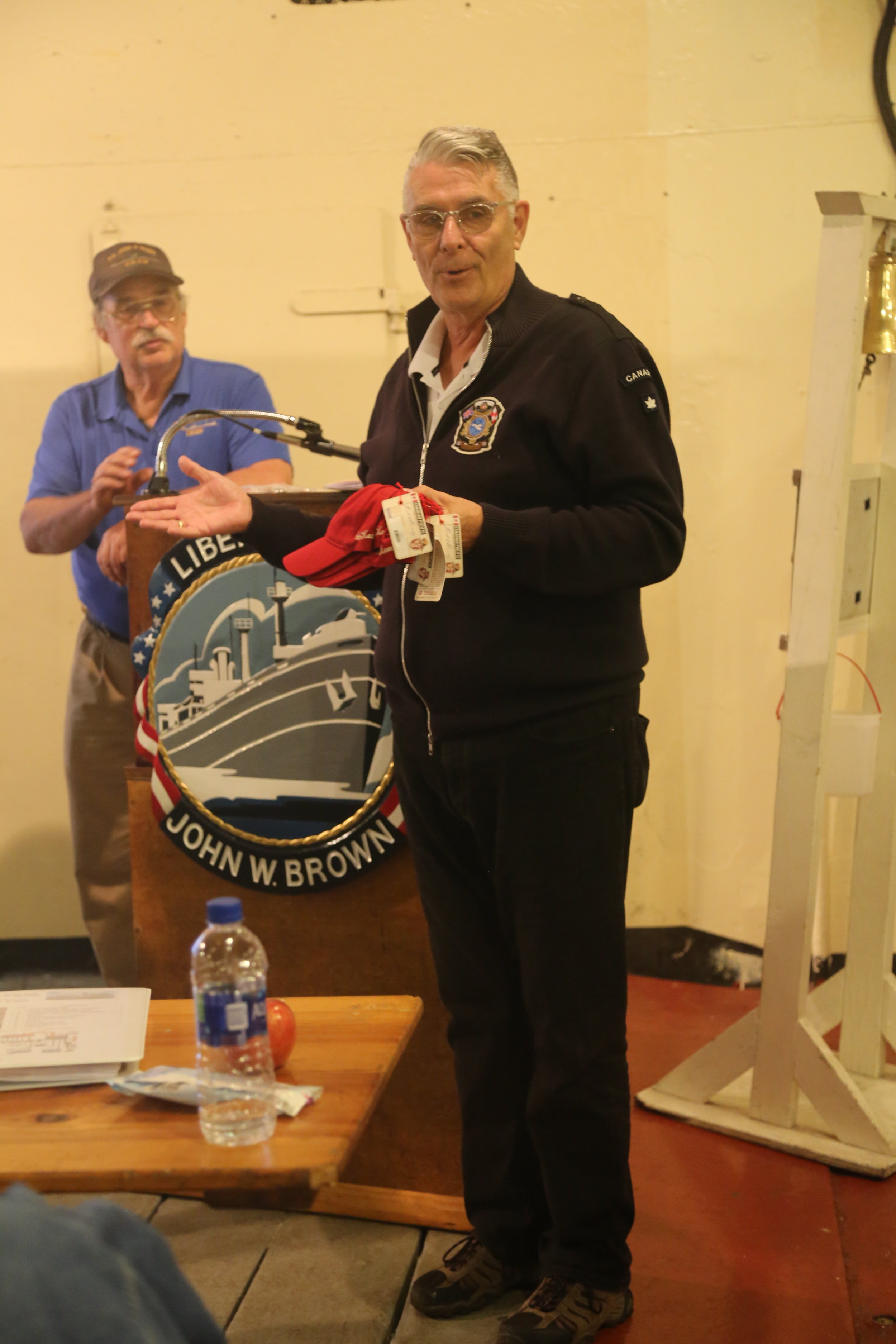

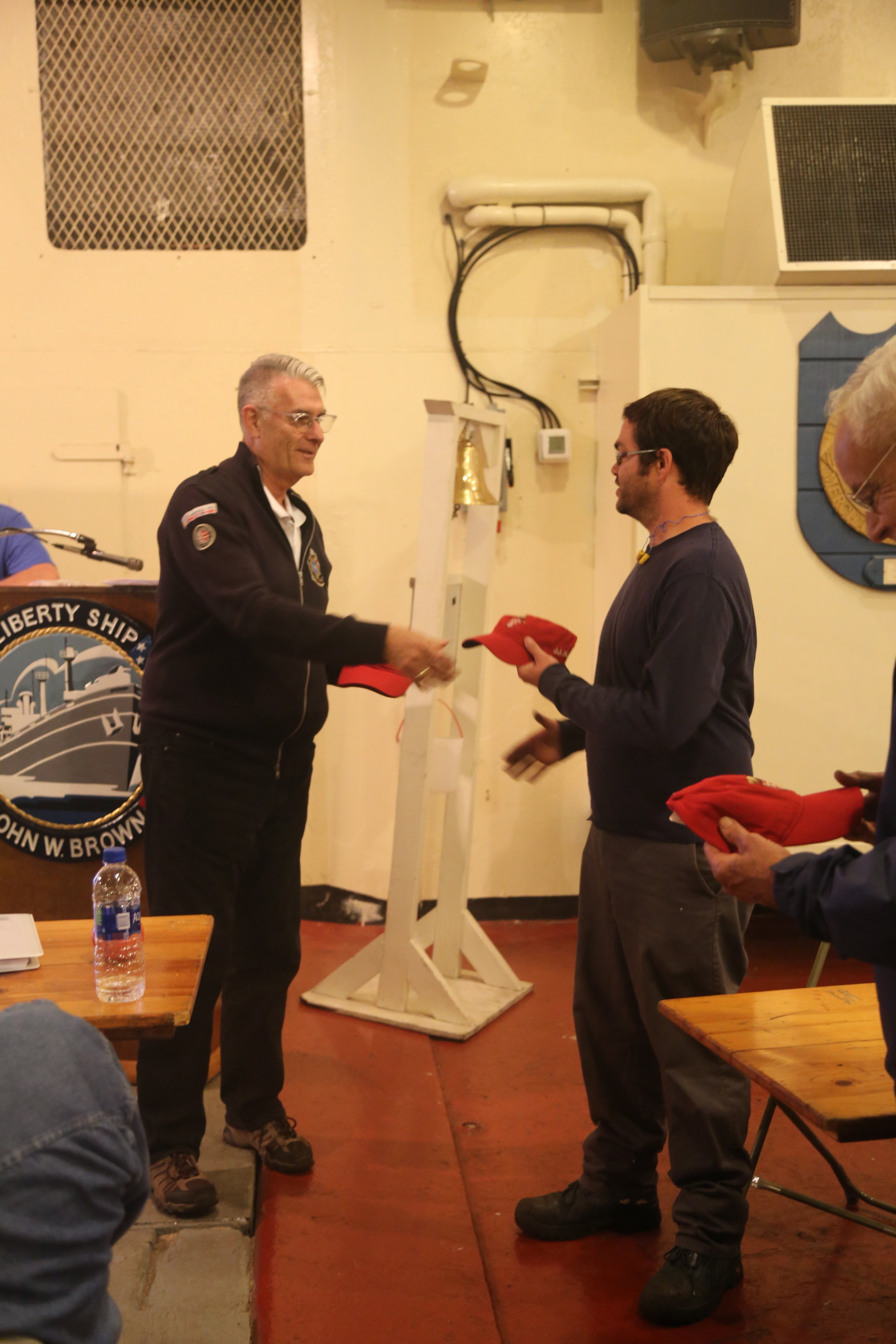



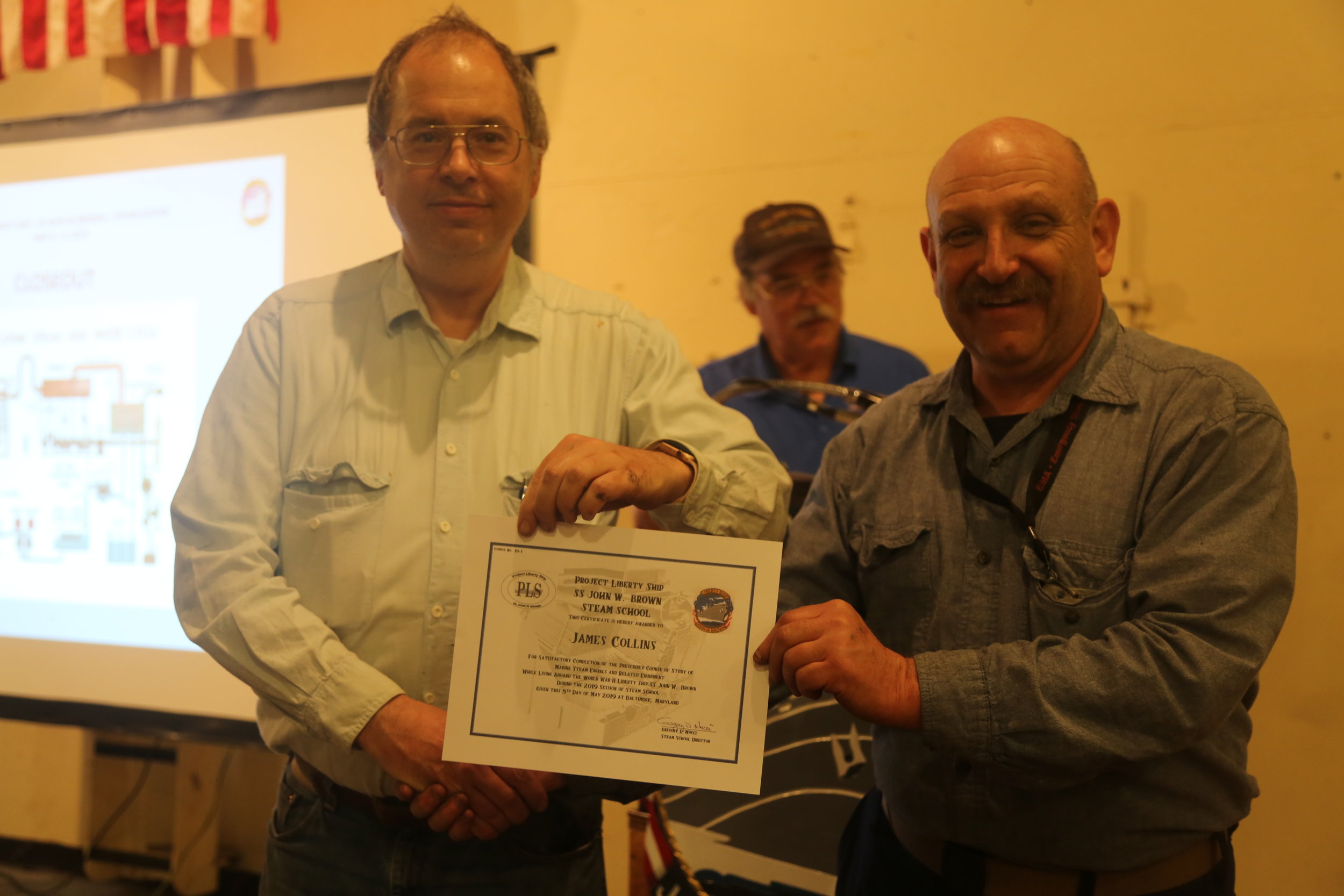






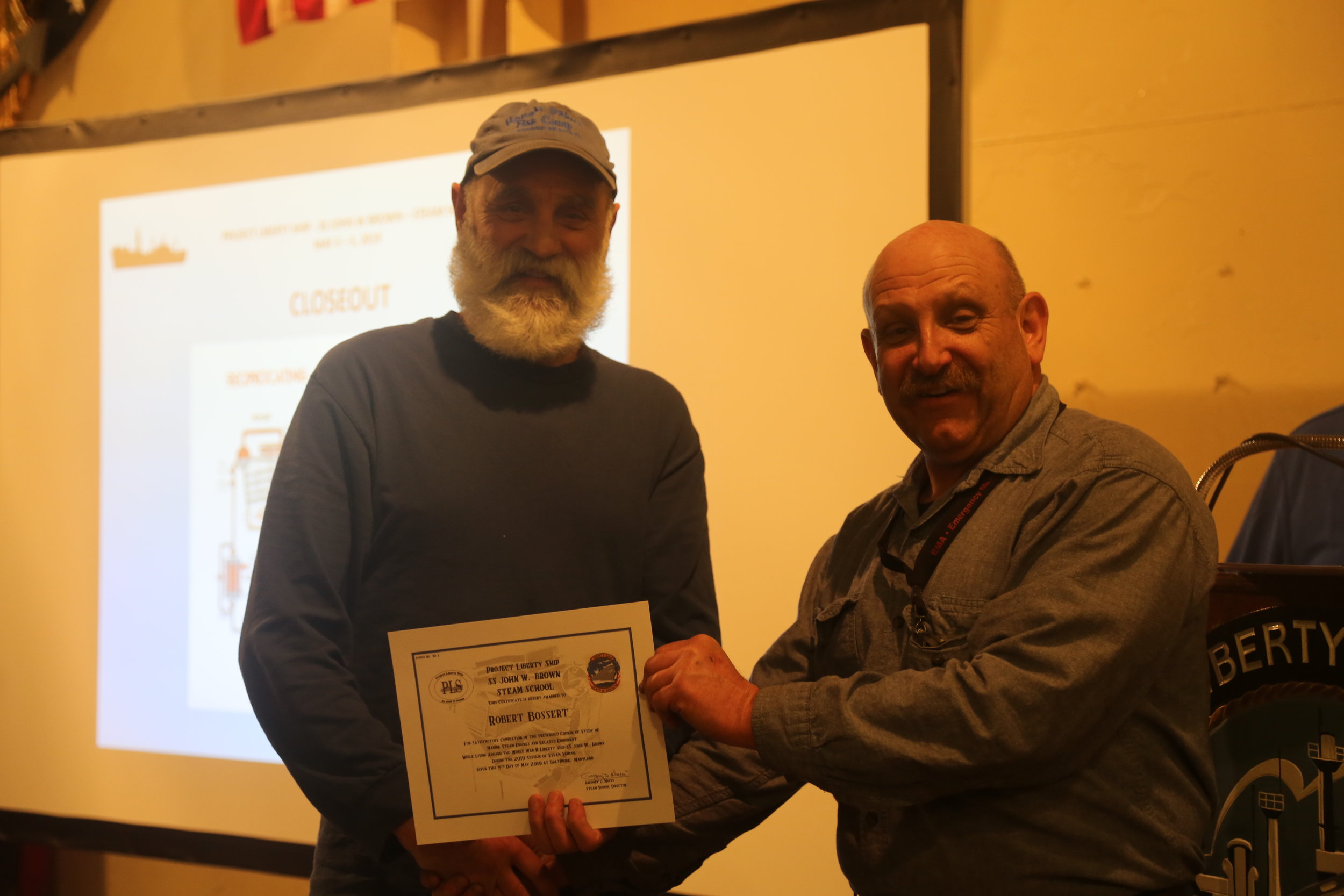

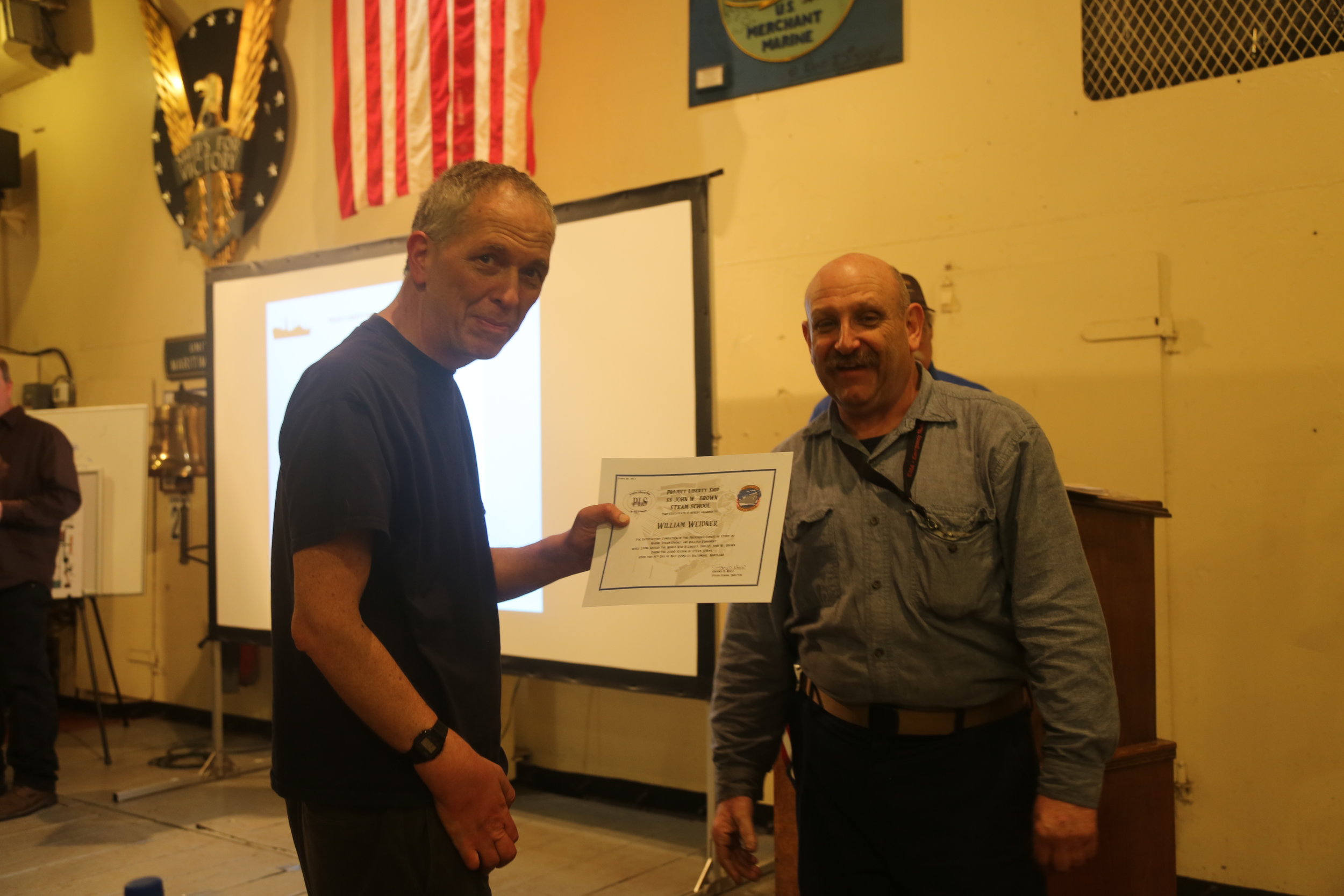
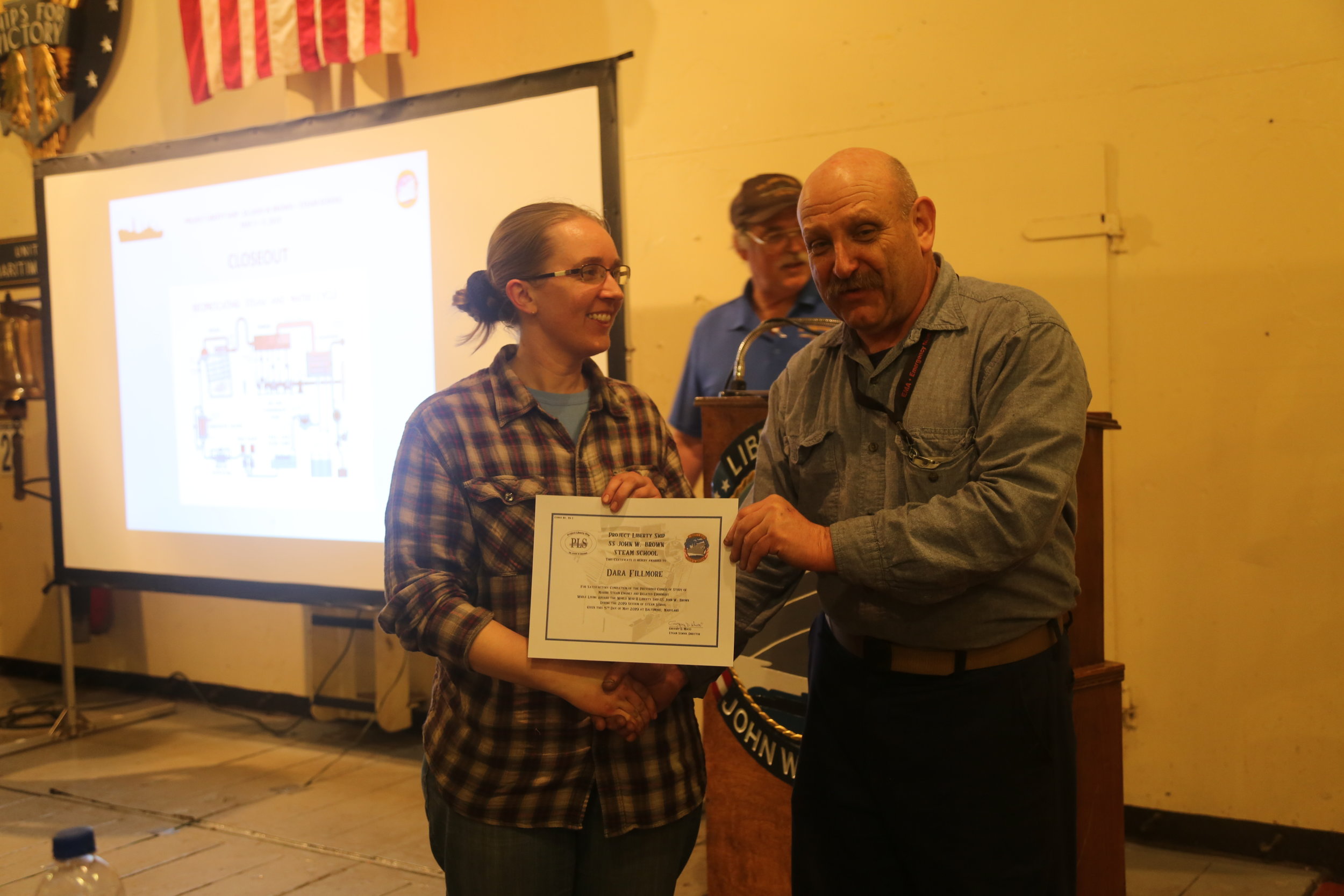

Finally, group pictures were taken and goodbyes were said. Participants

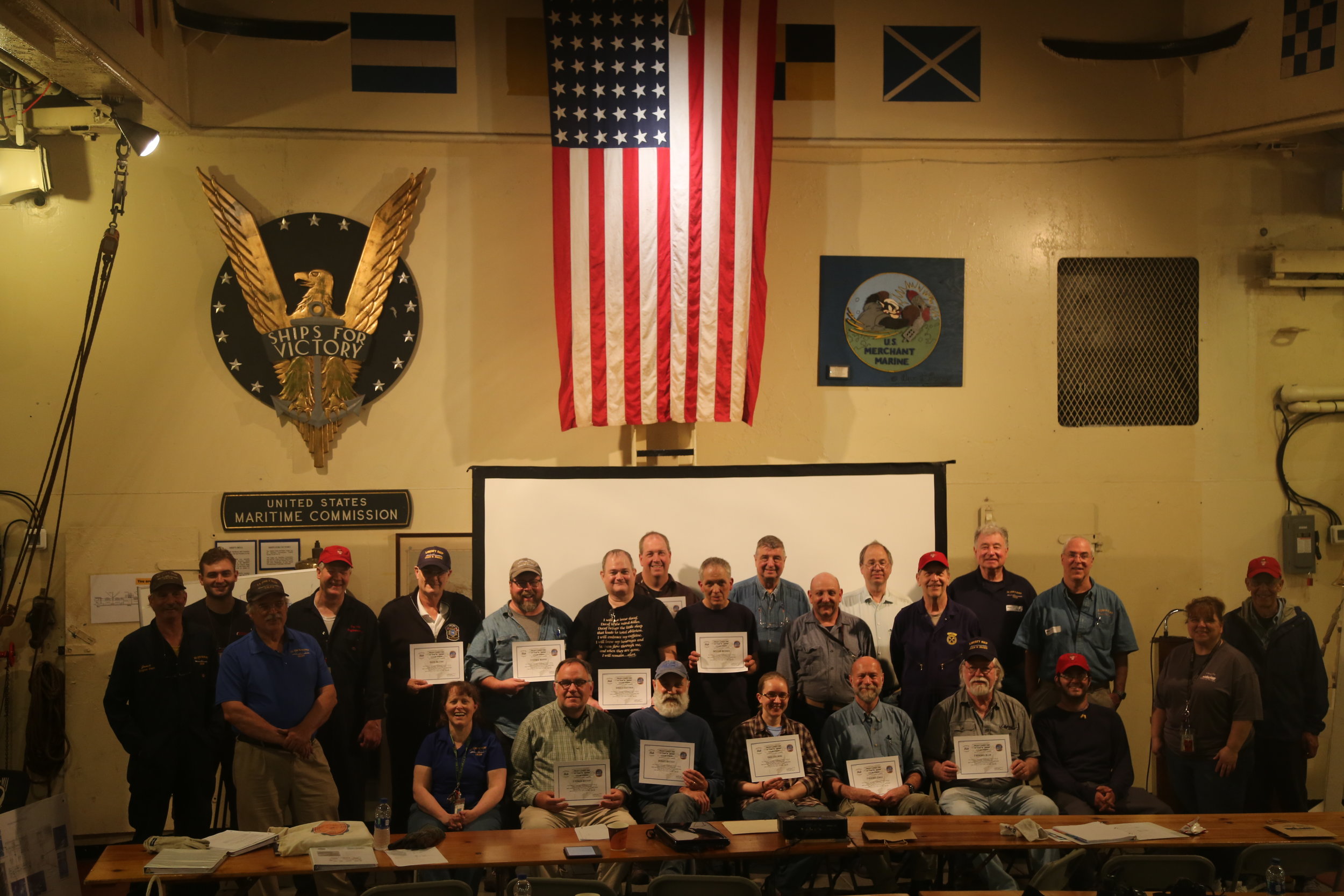
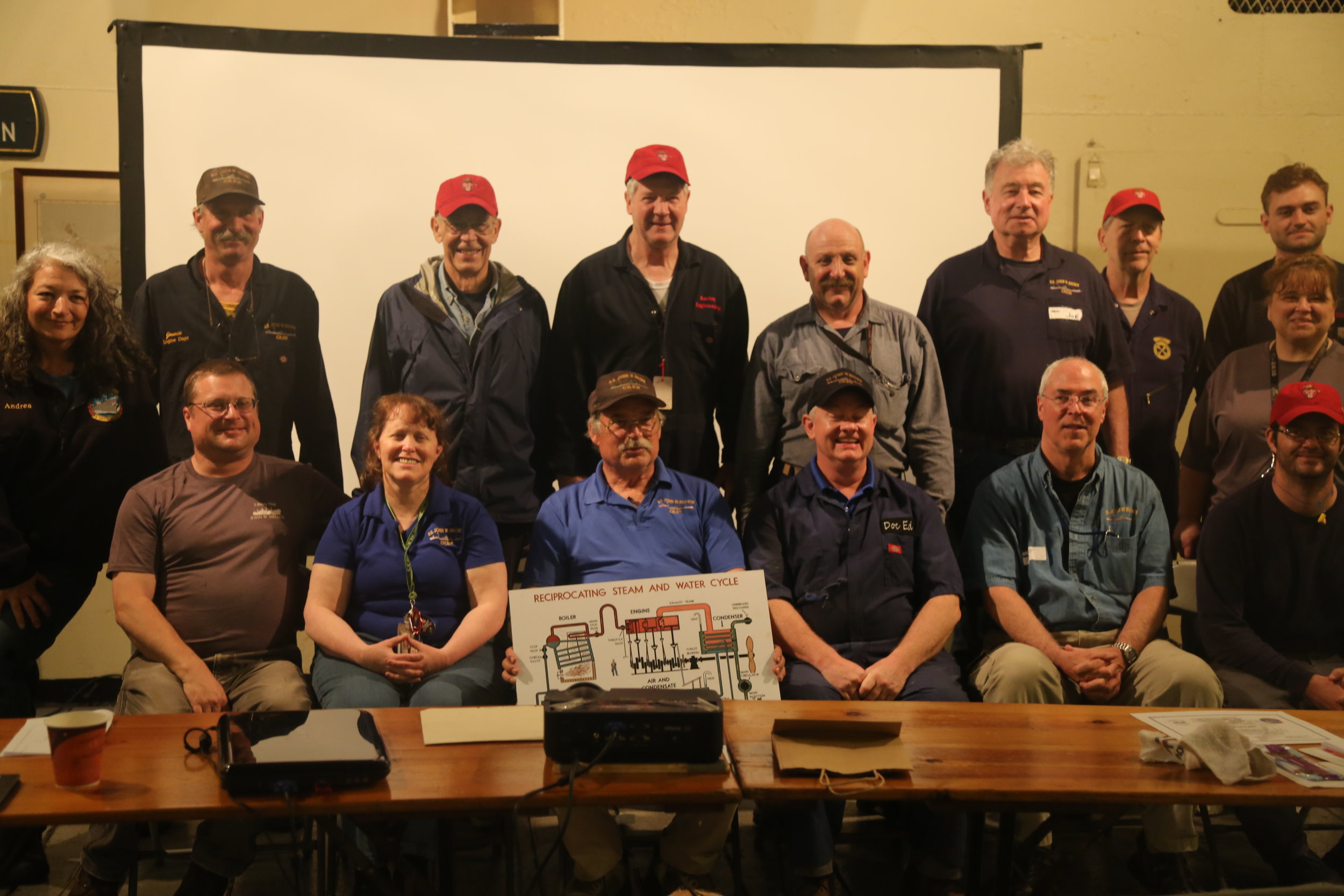
Steam School was a success and comments and reviews by participants yielded great comments and some suggestions for future steam school. Keep an eye on the website and Facebook for information on the next steam school which will be held November 8-10th. We are gearing up for our first cruise of the season (tickets for the June cruise can be ordered here until June 1st (promo code PLS2019 for a discount), but after that we will start to promote Steam School #2. Until then, stay safe and keep supporting Project Liberty Ship.
